Forums
- Forums
- Axis And Allies Forum
- General Discussion
- Aviation News
Aviation News
Post a reply
- Go to Previous topic
- Go to Next topic
- Go to Welcome
- Go to Introduce Yourself
- Go to General Discussion
- Go to Screenshots, Images and Videos
- Go to Off topic
- Go to Works in Progress
- Go to Skinning Tips / Tutorials
- Go to Skin Requests
- Go to IJAAF Library
- Go to Luftwaffe Library
- Go to RAF Library
- Go to USAAF / USN Library
- Go to Misc Library
- Go to The Ops Room
- Go to Made in Germany
- Go to Campaigns and Missions
- Go to Works in Progress
- Go to Juri's Air-Raid Shelter
- Go to Campaigns and Missions
- Go to Works in Progress
- Go to Skinpacks
- Go to External Projects Discussion
- Go to Books & Resources
-
 Main AdminA B-52H Stratofortress takes off at Minot Air Force Base, N.D., Feb. 6, 2019. Routine training flights are often conducted to maintain the capabilities to support the Air Force Global Strike Command mission. (U.S. Air Force photo by Senior Airman Jessica Weissman)
Main AdminA B-52H Stratofortress takes off at Minot Air Force Base, N.D., Feb. 6, 2019. Routine training flights are often conducted to maintain the capabilities to support the Air Force Global Strike Command mission. (U.S. Air Force photo by Senior Airman Jessica Weissman)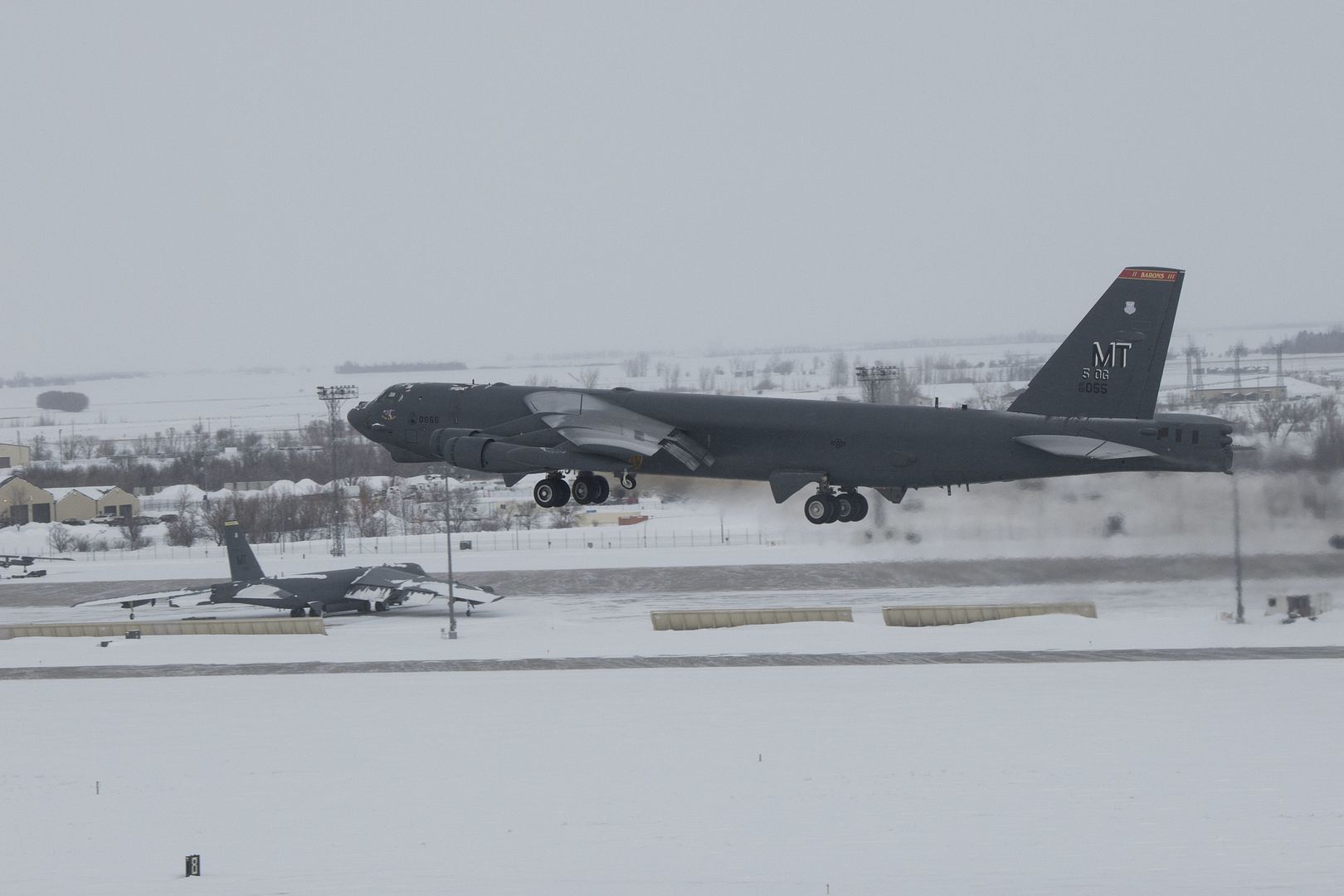
EL CENTRO, Calif. (Feb. 7, 2019) ? Left wing pilot, Lt. James Cox, assigned to the U.S. Navy Flight Demonstration Squadron, the Blue Angels, flies over Imperial Valley during a training flight. The Blue Angels are conducting winter training at Naval Air Facility El Centro, California, in preparation for the 2019 show season. The team is scheduled to conduct 61 flight demonstrations at 32 locations across the country to showcase the pride and professionalism of the U.S. Navy and Marine Corps to the American public in 2019. (U.S. Navy photo's by Mass Communication Specialist 2nd Class Christopher Gordon)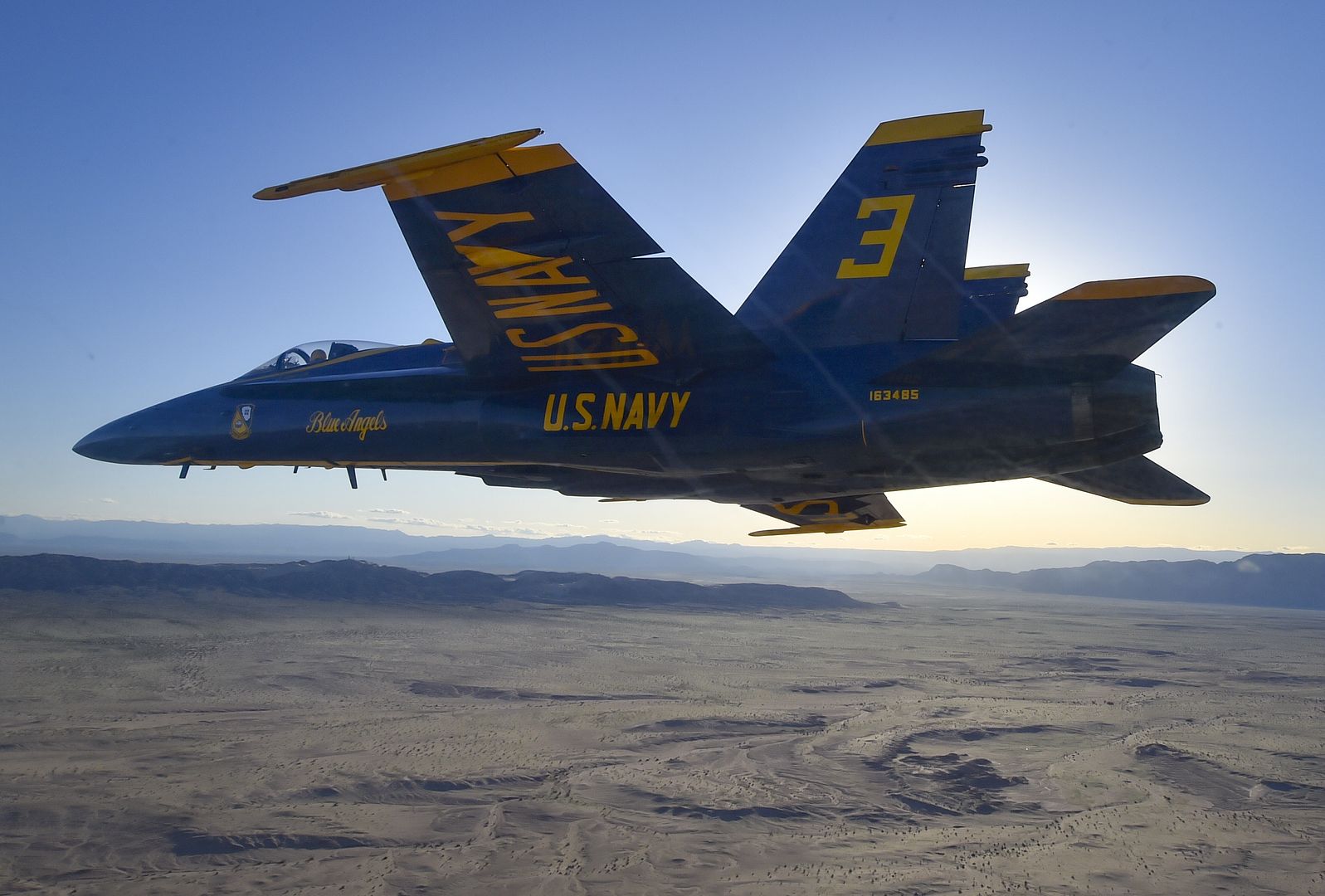
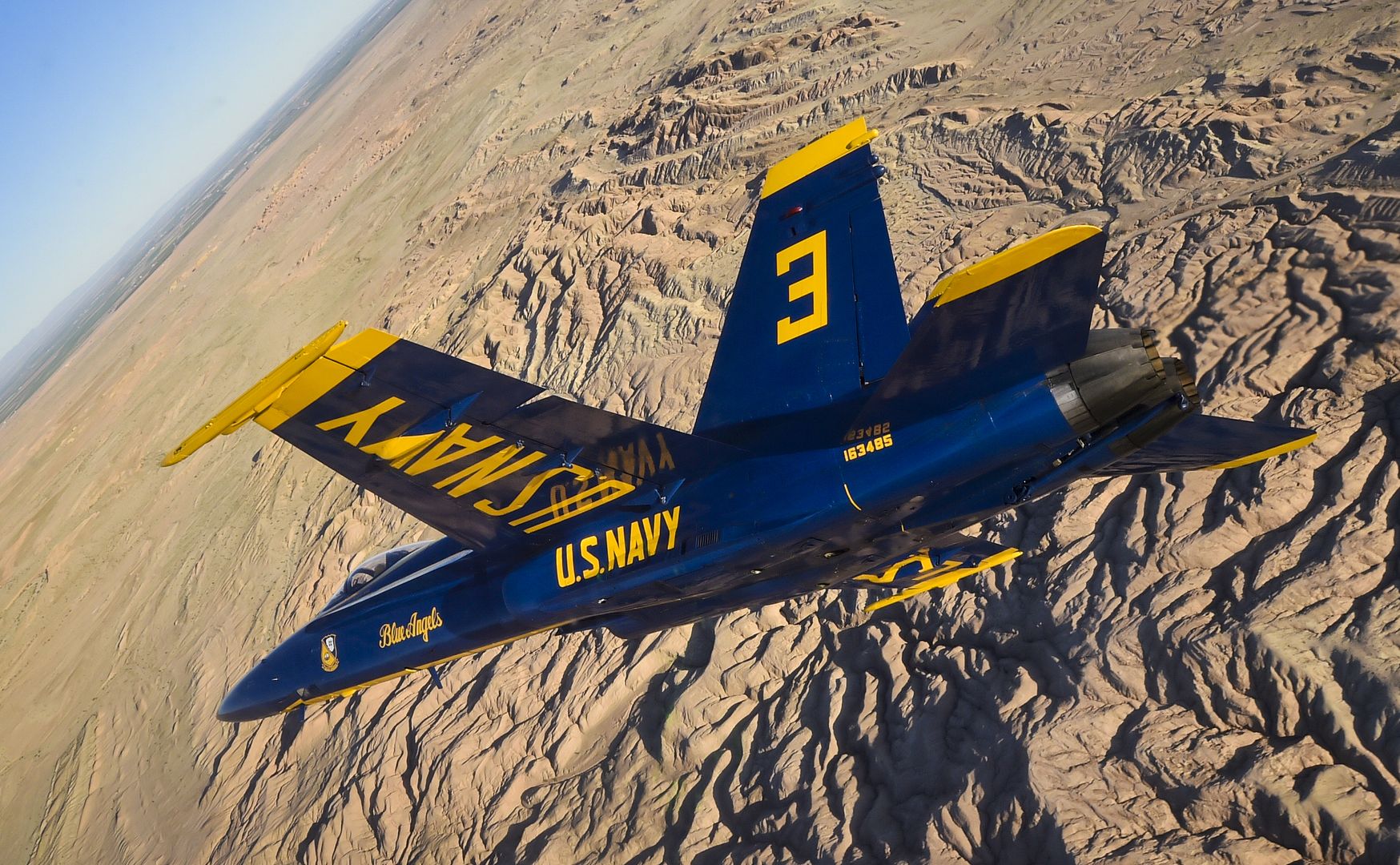
Crew chiefs maintain F-35A Lightning II fighter jets during Red Flag 19-1, Nellis Air Force Base, Nevada, Feb. 4, 2019. Pilots and maintainers from the 388th Fighter Wing's 4th Fighter Squadron and 4th Aircraft Maintenance Unit are participating in Red Flag 19-1 at Nellis AFB, Nevada. This is wing's second Red Flag with the F-35A, America's most advanced multi-role fighter, which brings game-changing stealth, lethality and interoperability to the modern battlefield. Red Flag is the Air Force's premier combat exercise and includes units from across the Air Force and allied nations. The 388th is the lead wing for Red Flag 19-1. U.S. Air Force photo by R. Nial Bradshaw)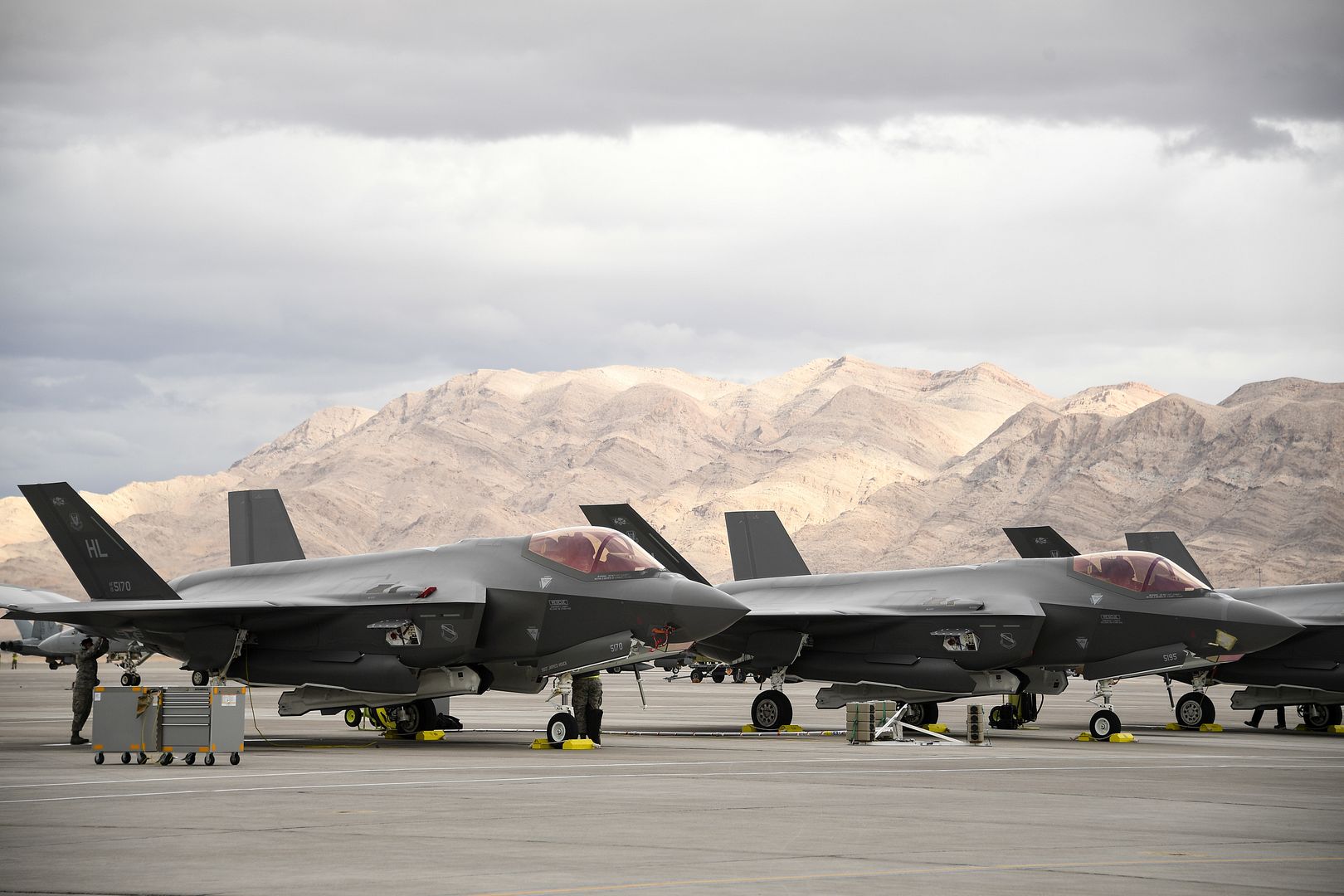
-
 Main AdminA U.S. Marine Corps CH-53E Super Stallion flies above New York City, Feb. 8, 2019. Marine Heavy Helicopter Squadron (HMH) 464 is participating in a cold weather training exercise in Brunswick, Maine. Executing this training ensures that HMH-464 is prepared to support the Marine Air-Ground Task Force (MAGTF) commander during all phases of expeditionary operations. The aircraft is assigned to HMH-464, Marine Aircraft Group 29, 2nd Marine Aircraft Wing. (U.S. Marine Corps photo by Cpl. Jered T. Stone)
Main AdminA U.S. Marine Corps CH-53E Super Stallion flies above New York City, Feb. 8, 2019. Marine Heavy Helicopter Squadron (HMH) 464 is participating in a cold weather training exercise in Brunswick, Maine. Executing this training ensures that HMH-464 is prepared to support the Marine Air-Ground Task Force (MAGTF) commander during all phases of expeditionary operations. The aircraft is assigned to HMH-464, Marine Aircraft Group 29, 2nd Marine Aircraft Wing. (U.S. Marine Corps photo by Cpl. Jered T. Stone)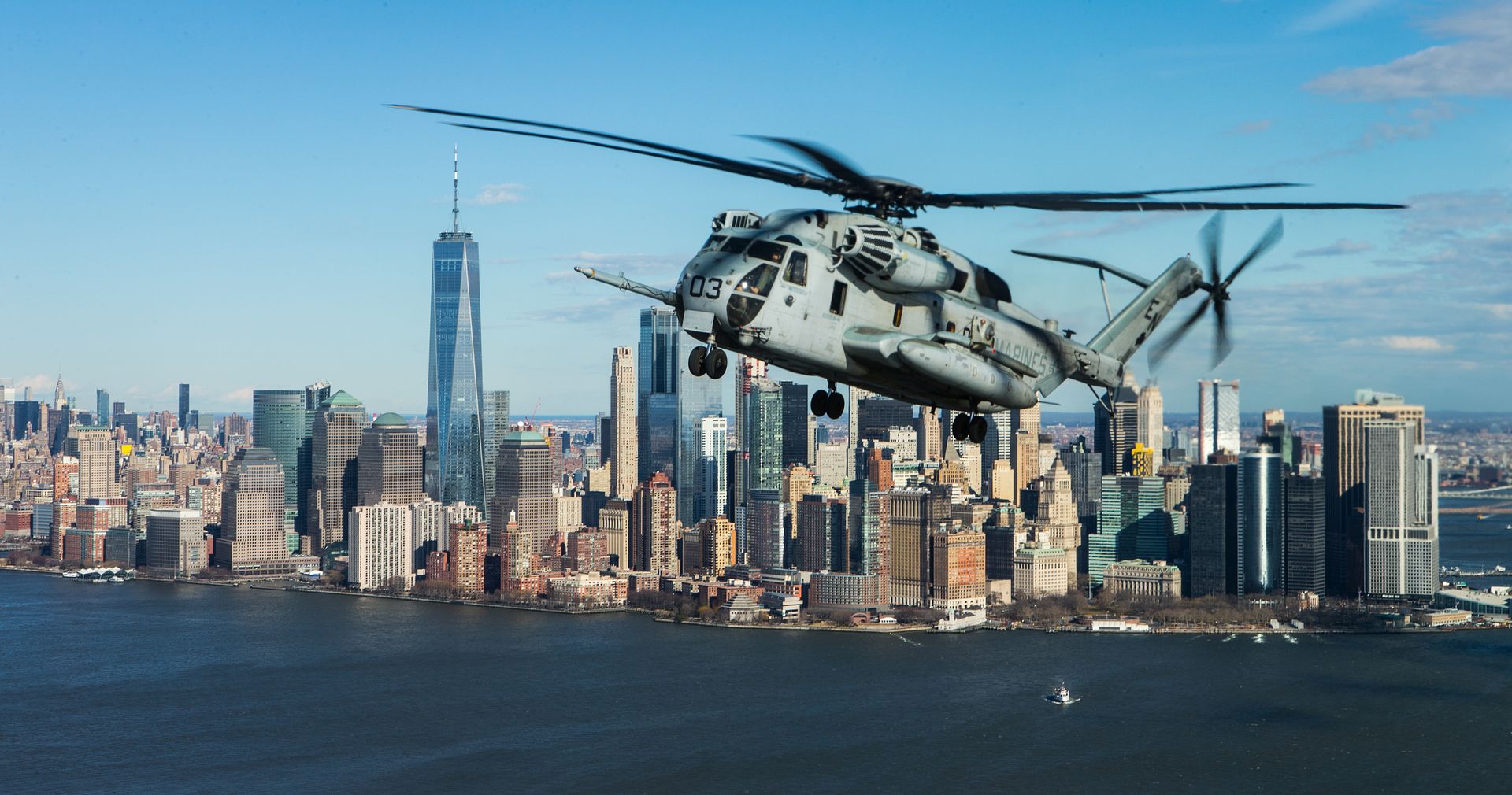
A Boeing KC-46A Pegasus tanker takes off from Boeing Field in Seattle on its way to Altus Air Force Base, Okla. The jet was the fifth overall delivered to the U.S. Air Force and the first that will be based at Altus, where the 56th Air Refueling Squadron is responsible for aircrew, maintenance and support training.
(Boeing photo)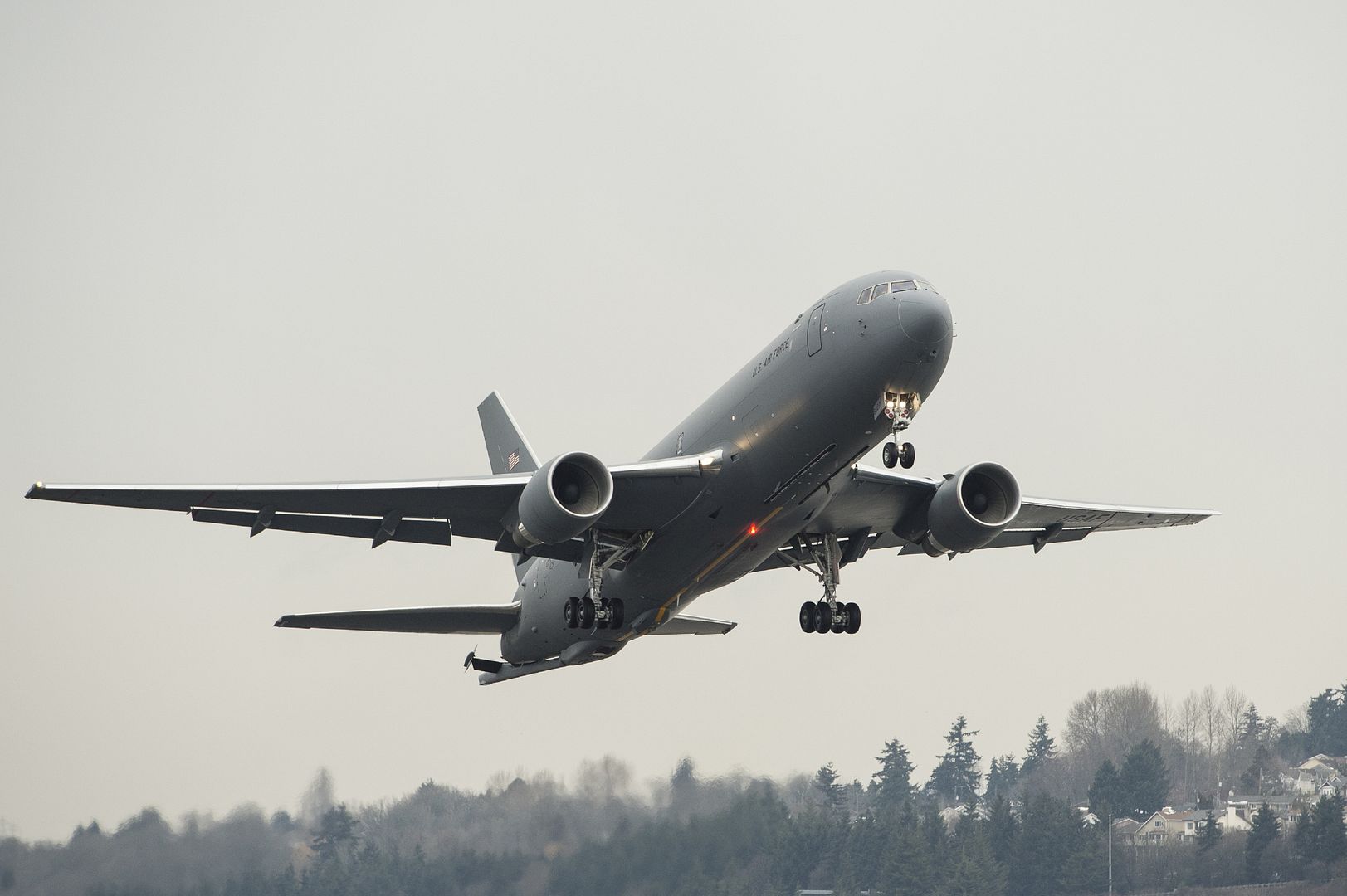
The first KC-46A Pegasus to arrive at Altus Air Force Base, Oklahoma, taxis on the flightline Feb. 8, 2019, following a water salute. Total force Airmen there will put the KC-46 through its paces in the Combat Mobility and Expeditionary Training Center of Excellence, where more than 2,000 airlift and aerial refueling aircrew members train annually. (U.S. Air Force photo by Tech. Sgt. Samantha Mathison)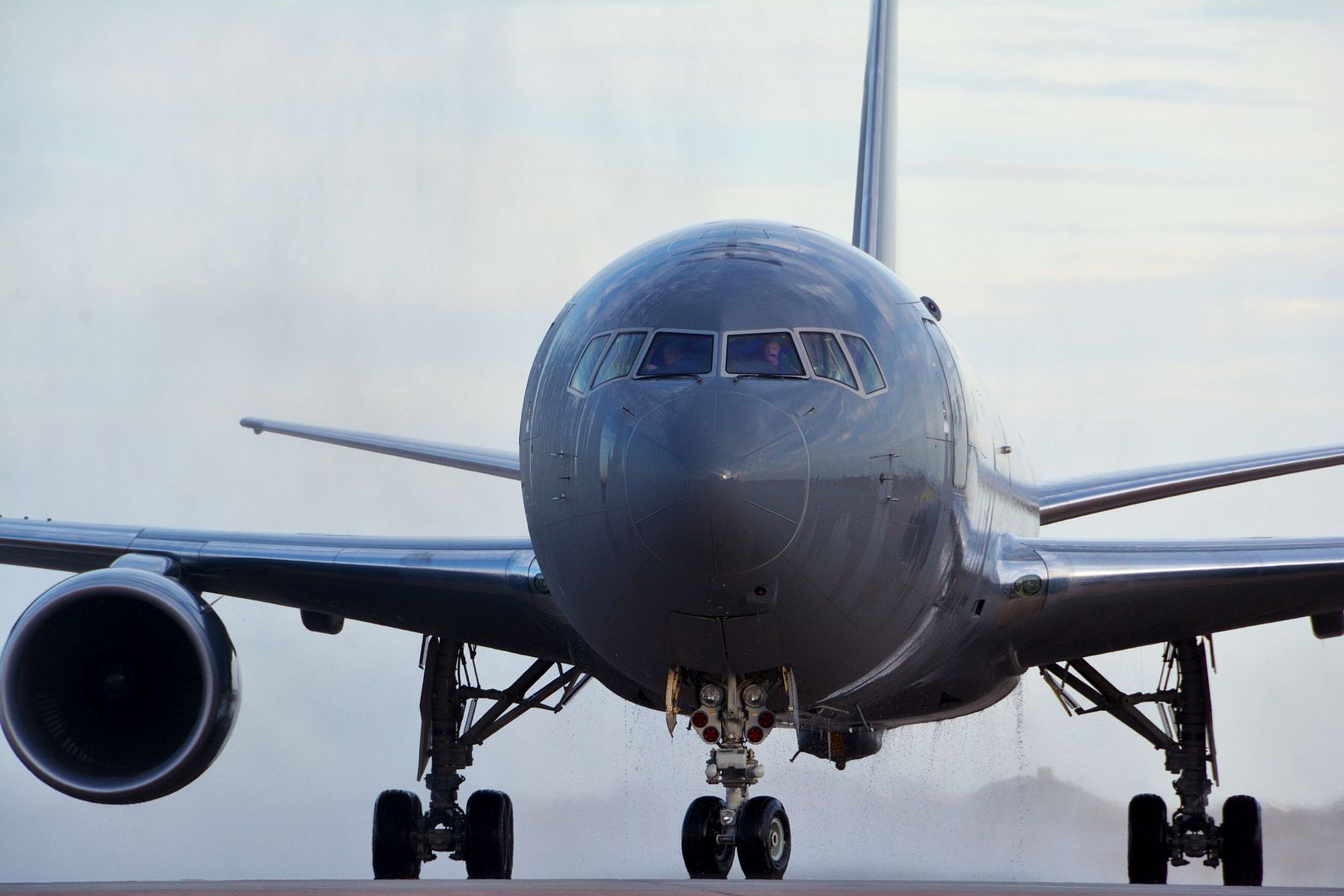
Airmen from the 104th Fighter Wing returned from a temporary duty assignment at Patrick Air Force Base in Florida on a C-17 Globemaster III from the 105th Airlift Wing in Stewart, New York Feb. 8, 2019, at Barnes Air National Guard Base, Massachusetts. The C-17 measures 174 feet long with a wingspan of 169 feet, 10 inches. (U.S. Air National Guard photos by Airman Sara Kolinski)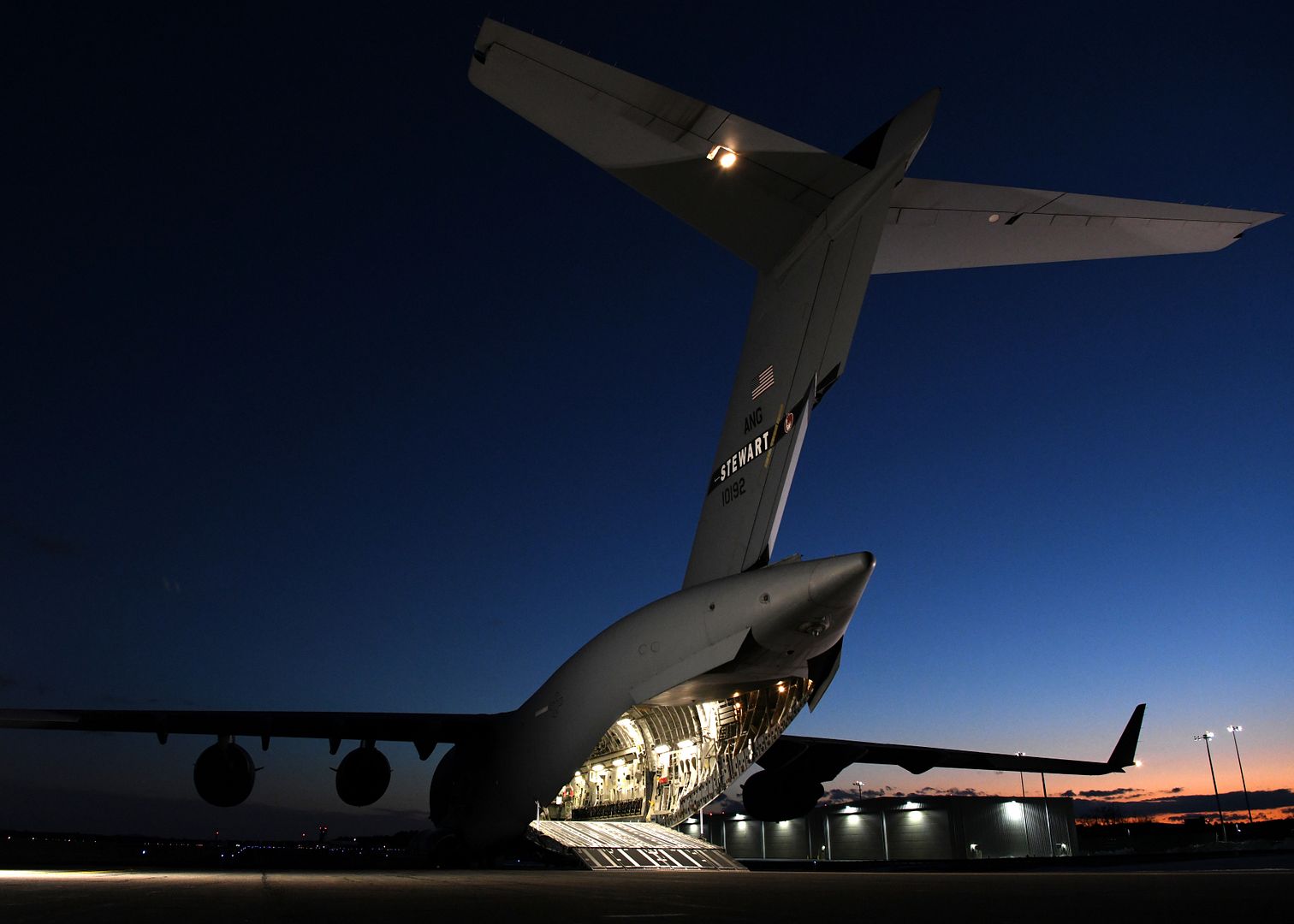
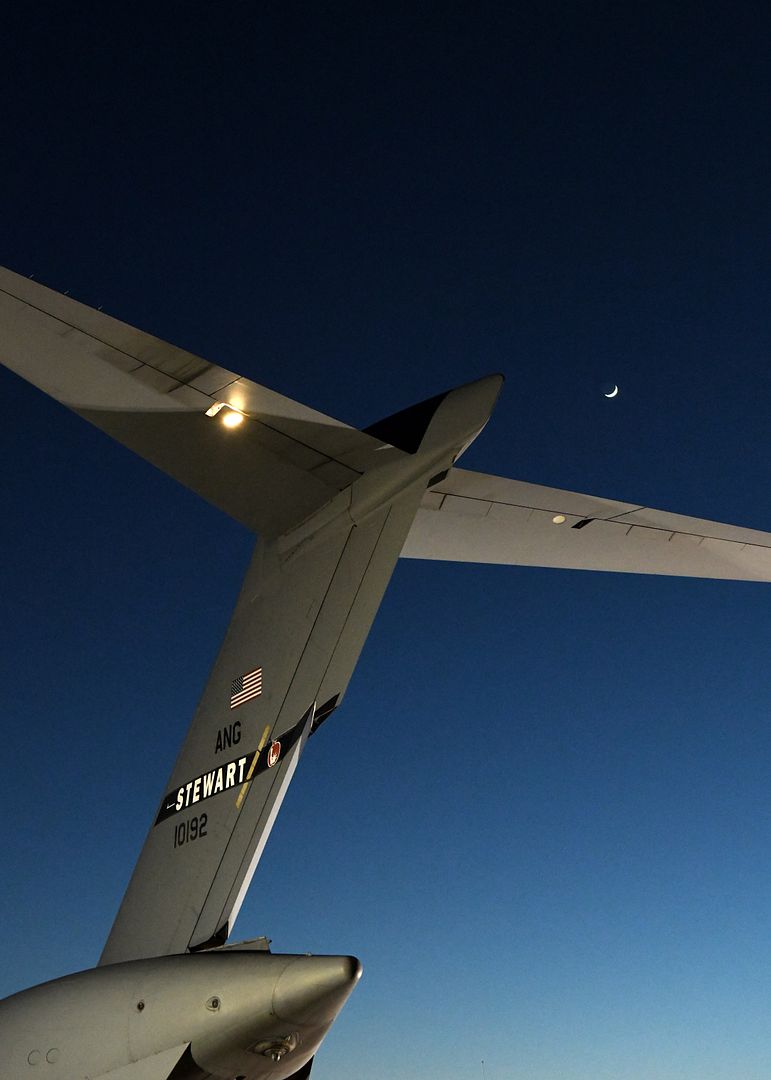
An F/A-18E Super Hornet, assigned to Strike Fighter Squadron (VFA) 14, prepares to launch from the flight deck of the aircraft carrier USS John C. Stennis (CVN 74) in the Pacific Ocean, Feb. 8, 2019. The John C. Stennis is deployed to the U.S. 7th Fleet area of operations in support of security and stability in the Indo-Pacific region. (U.S. Navy photo by Mass Communication Specialist 3rd Class Skyler Okerman)
U.S. Navy Lt. j.g. Melvin Navalta, from New York, directs an F/A-18E Super Hornet, assigned to Strike Fighter Squadron (VFA) 97, on the flight deck of the aircraft carrier USS John C. Stennis (CVN 74) in the Pacific Ocean, Feb. 8, 2019. The John C. Stennis is deployed to the U.S. 7th Fleet area of operations in support of security and stability in the Indo-Pacific region. (U.S. Navy photo by Mass Communication Specialist 3rd Class Skyler Okerman)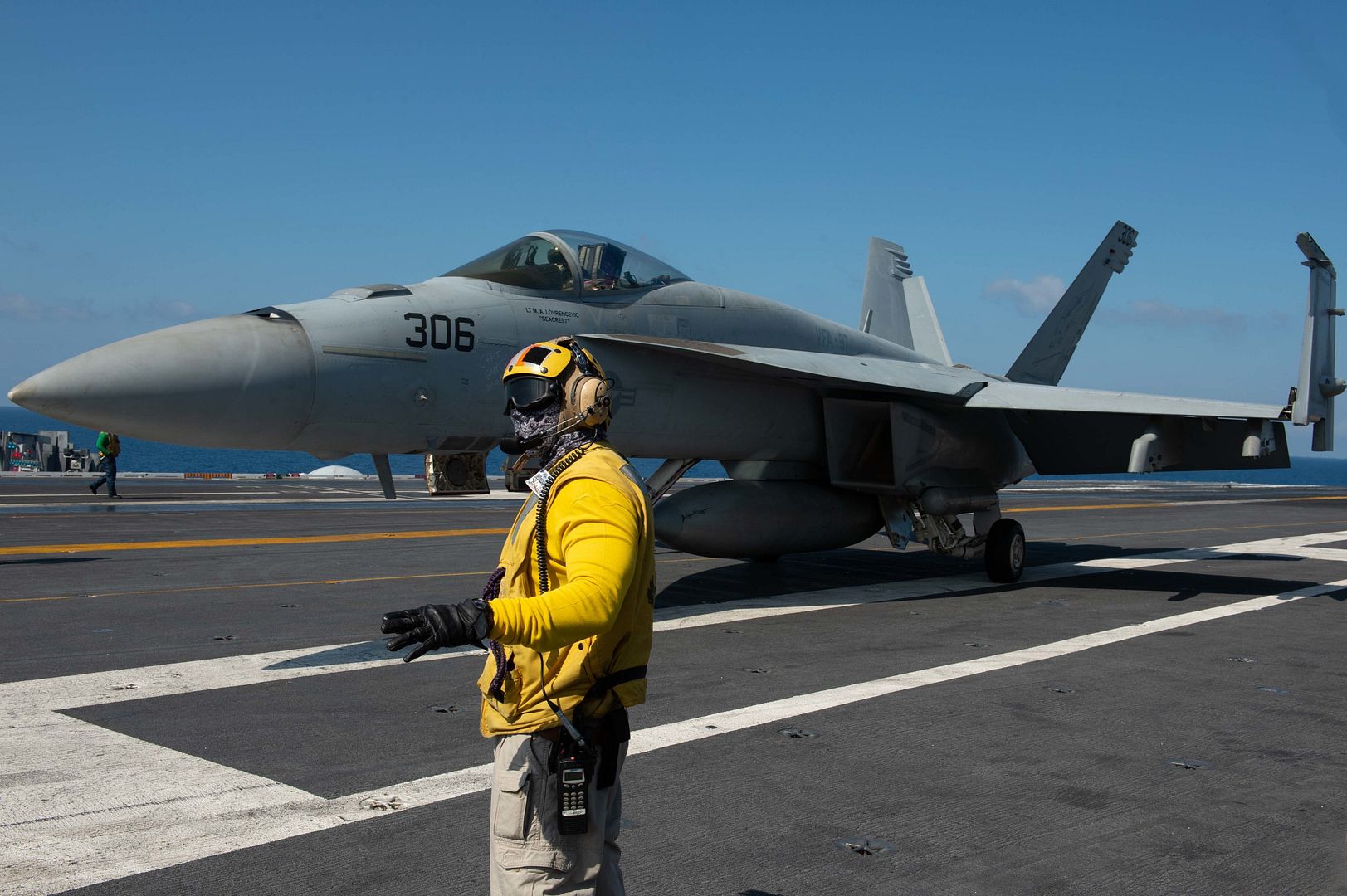
An F/A-18F Super Hornet, assigned to Strike Fighter Squadron (VFA) 41, prepares to launch from the flight deck of the aircraft carrier USS John C. Stennis (CVN 74) in the Pacific Ocean, Feb. 7, 2019. The John C. Stennis is deployed to the U.S. 7th Fleet area of operations in support of security and stability in the Indo-Pacific region. (U.S. Navy photo by Mass Communication Specialist 3rd Class Ikenna Tanaka)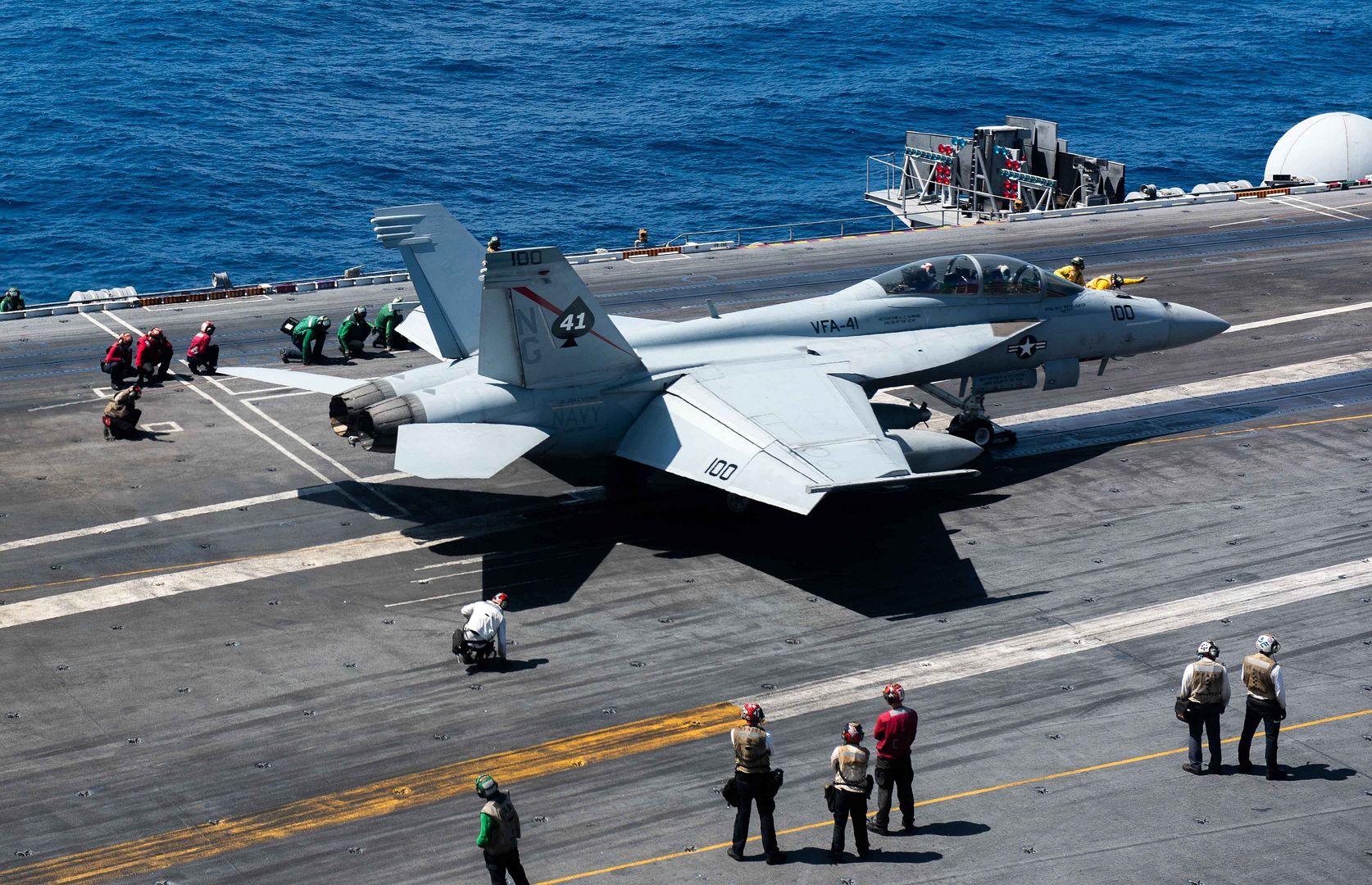
A U.S. Marine Corps F-35B Lightning II aircraft attached to the F-35B Detachment of the Flying Tigers of Marine Tiltrotor Squadron (VMM) 262 (Reinforced) takes off from the amphibious assault ship USS Wasp (LHD 1) in the Philippine Sea, Feb. 9, 2019. Wasp, flagship of the Wasp Amphibious Ready Group, is operating in the Indo-Pacific region to enhance interoperability with partners and serve as a ready-response force for any type of contingency. (U.S. Navy photo by Mass Communication Specialist 3rd Class Benjamin F. Davella III)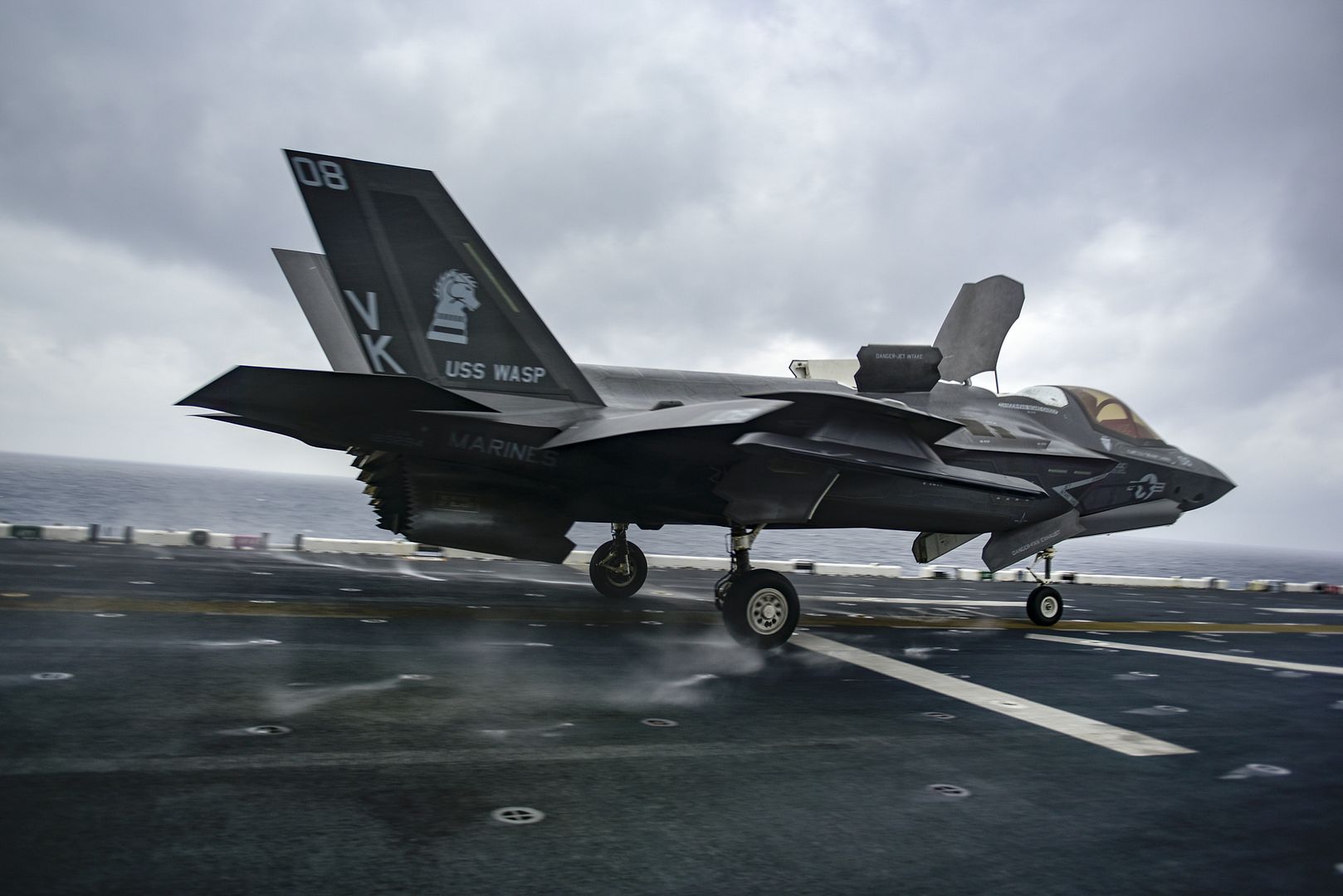
Three Boeing B-1B Lancer bombers are shown at the Maintenance, Repair and Overhaul Training Center Jan. 17, 2019, Tinker Air Force Base, Oklahoma. MROTC is a facility used for heavy aircraft maintenance in a public/private partnership between the Air Force and Boeing. (U.S. Air Force photo/Greg L. Davis)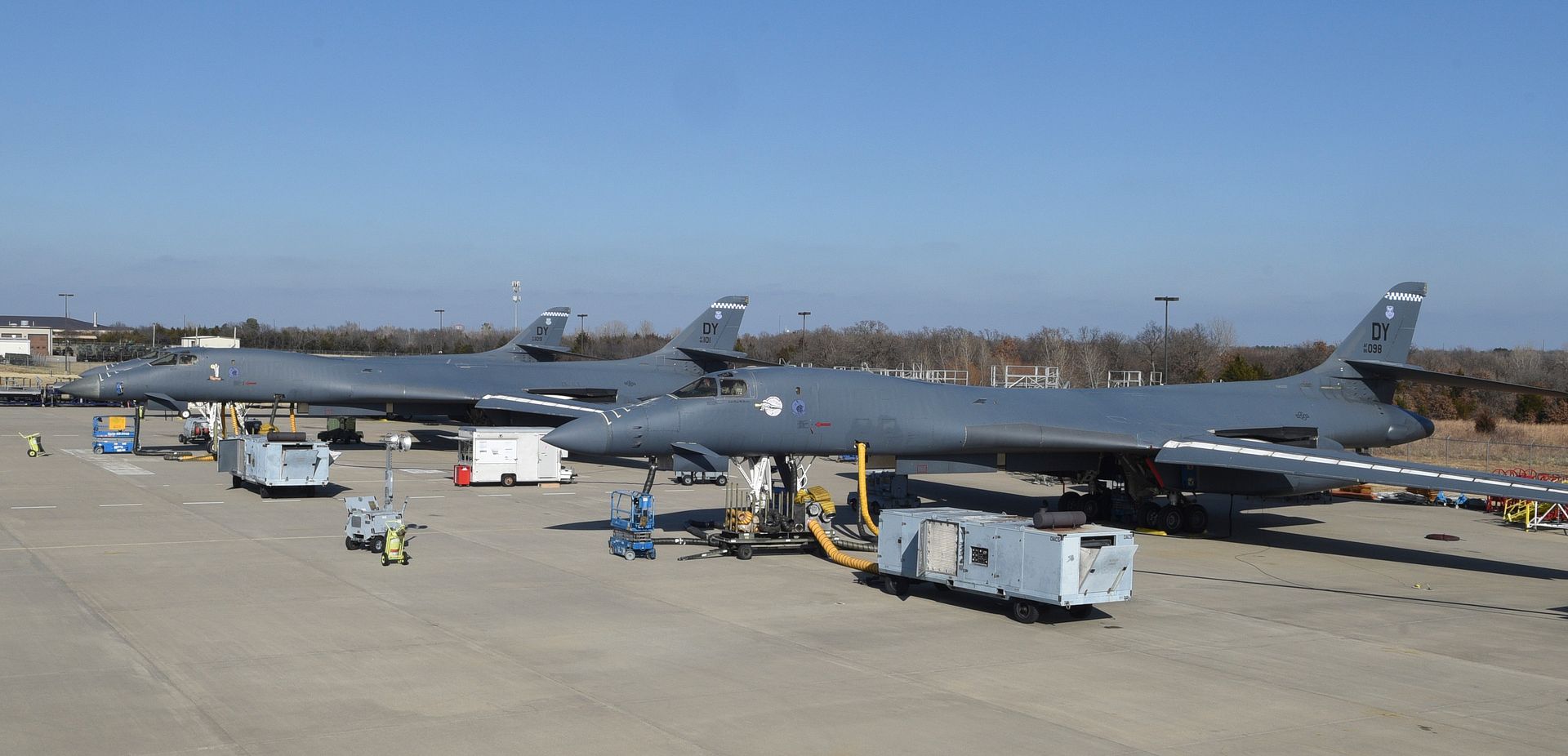
Boeing B-1B Lancer, serial # 86-0098, wearing 'Midnight Train' nose-art is shown at the Maintenance, Repair and Overhaul Training Center Jan. 17, 2019, Tinker Air Force Base, Oklahoma. MROTC is a facility used for heavy aircraft maintenance in a public/private partnership between the Air Force and Boeing. (U.S. Air Force photo/Greg L. Davis)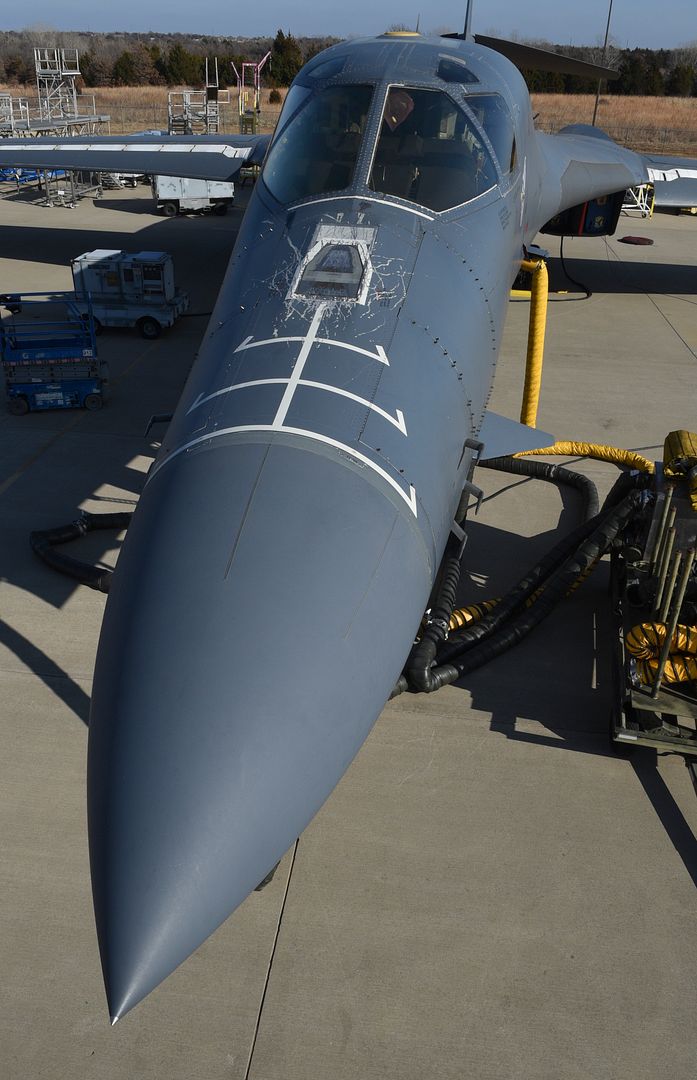
WOODLAND HILLS, Calif. ? Feb. 11, 2019 ? The U.S. Air Force has awarded Northrop Grumman Corporation (NYSE: NOC) a $59 million contract for the engineering and manufacturing development (EMD) phase of the Embedded Global Positioning System (GPS) /Inertial Navigation System (INS)-Modernization, or EGI-M, technology.
The approval to proceed to the EMD phase follows the Department of Defense?s Milestone B approval in October 2018. During the EMD phase, Northrop Grumman will develop the critical hardware and software design for the EGI-M, build hardware for integration and qualification, generate safety and civil certification documentation, qualify the new EGI-M systems to rigorous military standards, and build production units for platform testing.
Based upon modular and truly open systems architecture, the EGI-M system will support the rapid insertion of new capabilities and adaptability based on unique platform requirements. Additionally, the modernized navigation system will incorporate new generation GPS receivers, which will be capable to securely and accurately transmit the new military signals for space (M-Code). The EGI-M will be integrated into multiple platforms across all of the services and exportable versions will be developed for international customers. The lead platforms for EGI-M are F-22 and E-2D.
?This EMD award brings us an important step closer to fielding a modernized navigation system that provides accurate positioning, navigation and timing (PNT) information, even when GPS is denied,? said Dean Ebert, vice president, navigation and positioning systems, Northrop Grumman. ?Northrop Grumman is dedicated to ensuring the safety and mission success of our warfighters by providing a resilient assured PNT solution that will allow service members to fly, fight and win in any environment.?
EGI-M technology is designed for compatibility with current systems on legacy aircraft, allowing ease of integration and rapid adoption of new capabilities. EGI-M will also comply with the Federal Aviation Administration?s NextGen air traffic control requirements that aircraft flying at higher altitudes be equipped with Automatic Dependent Surveillance-Broadcast (ADS?B) Out by January 2020. ADS-B Out transmits information about an aircraft?s altitude, speed and location to ground stations and to other equipped aircraft in the vicinity.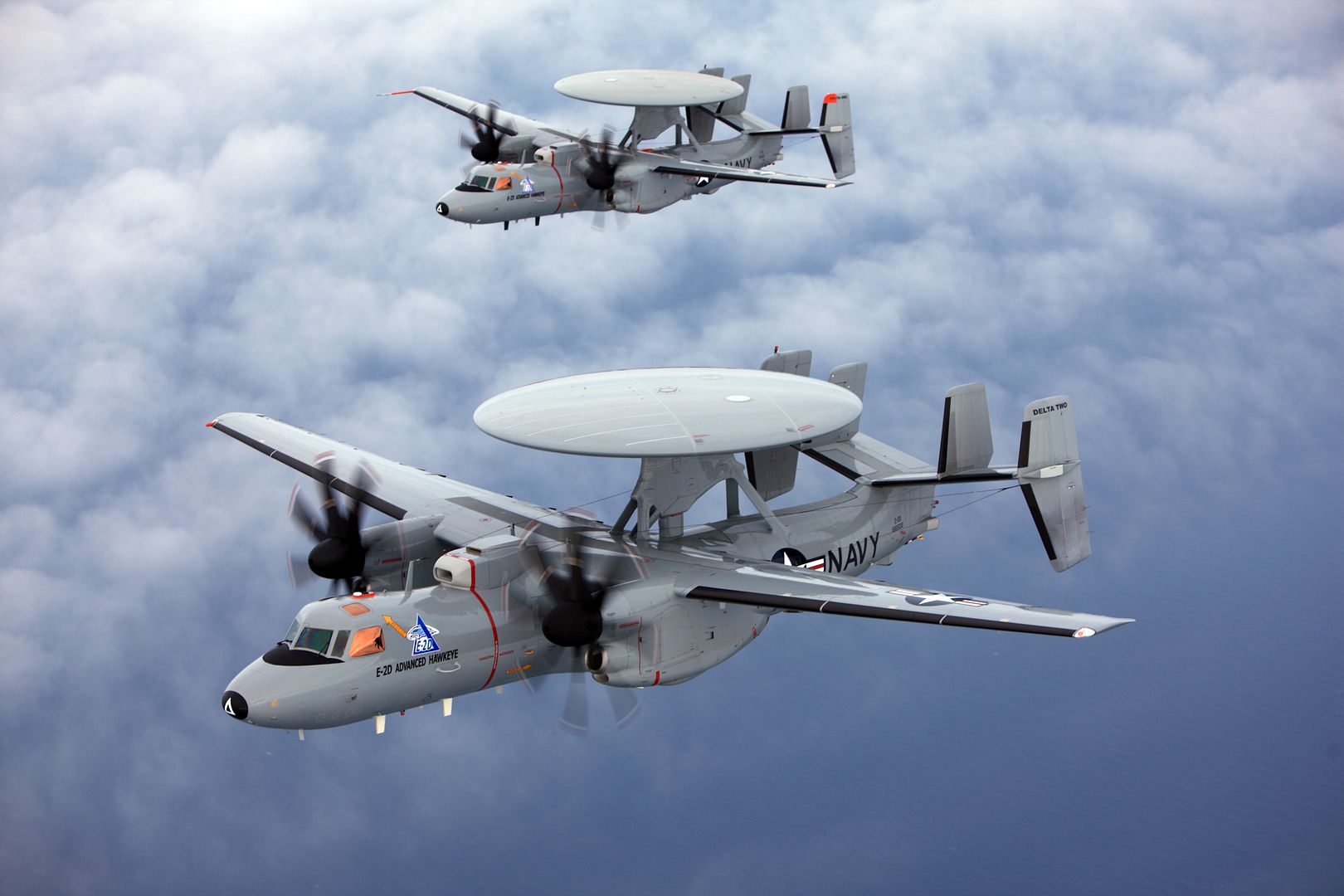
RAF Typhoons have been up against the United States Air Force?s 64th Aggressor Squadron?s F16s playing the role of the ?Red Force? on Exercise #RedFlag in Nevada.
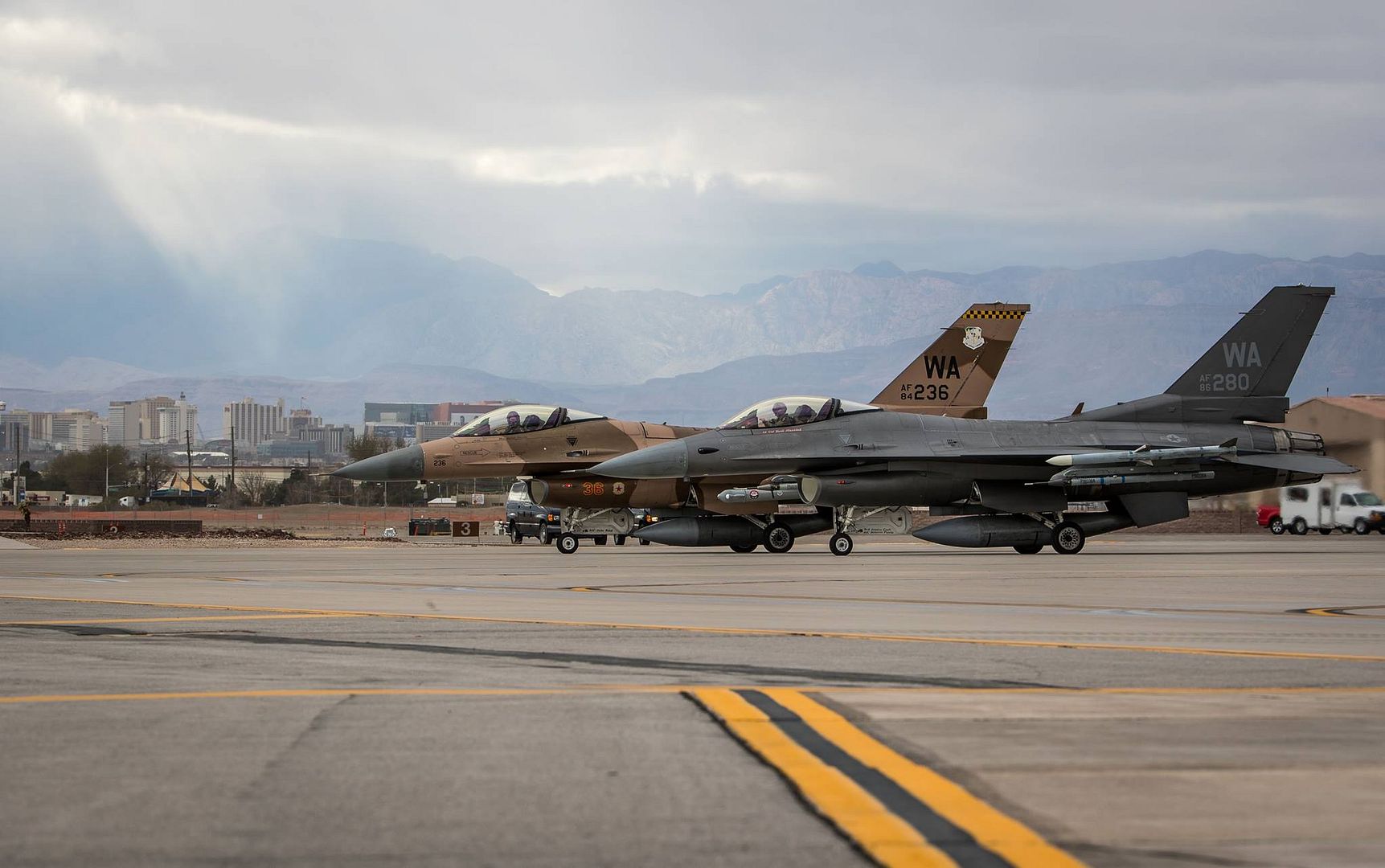
The aircraft are painted in a variety of colour schemes to closely represent potential adversaries and the pilots are specially trained to replicate the tactics and techniques of these red forces.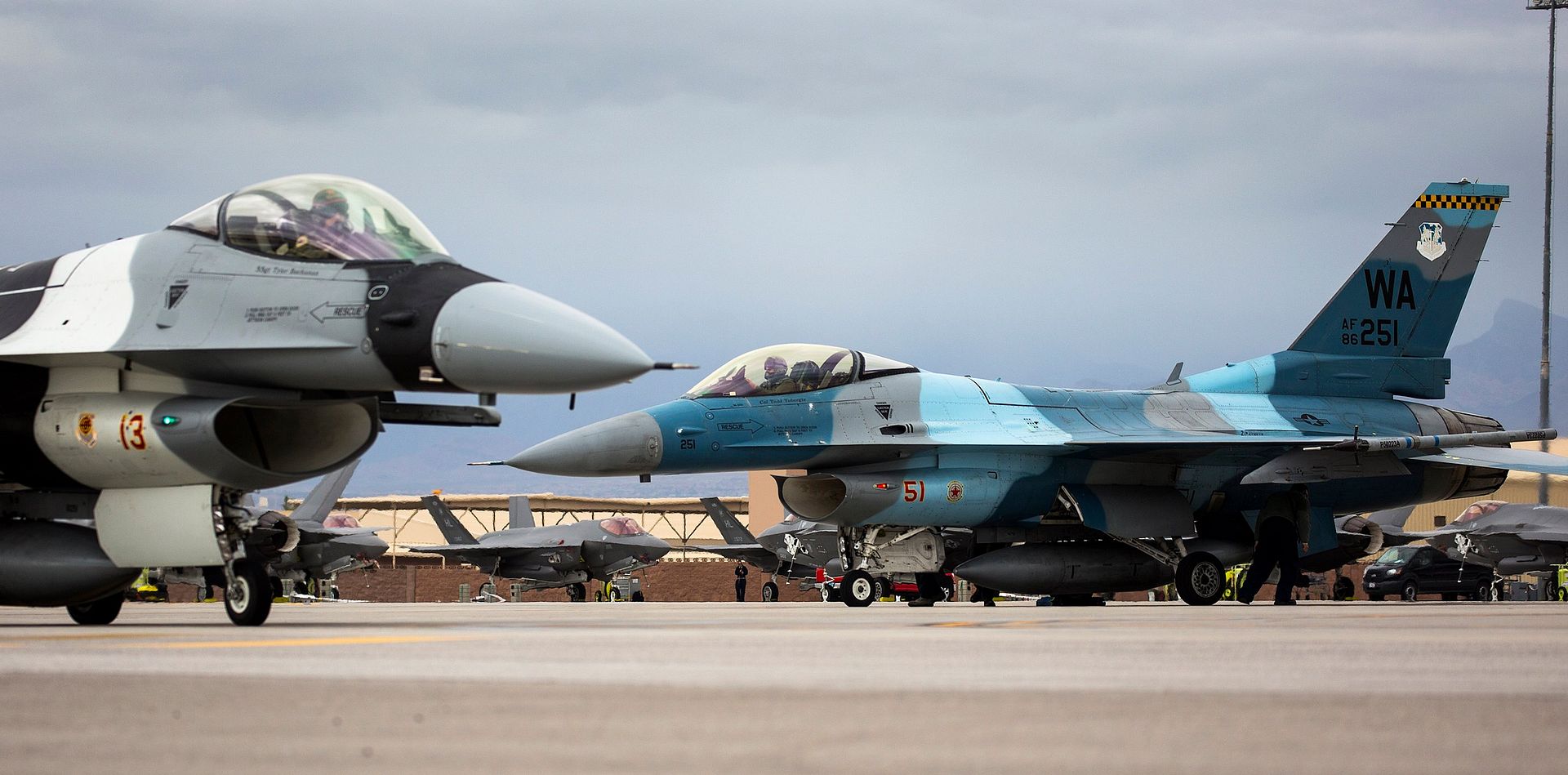
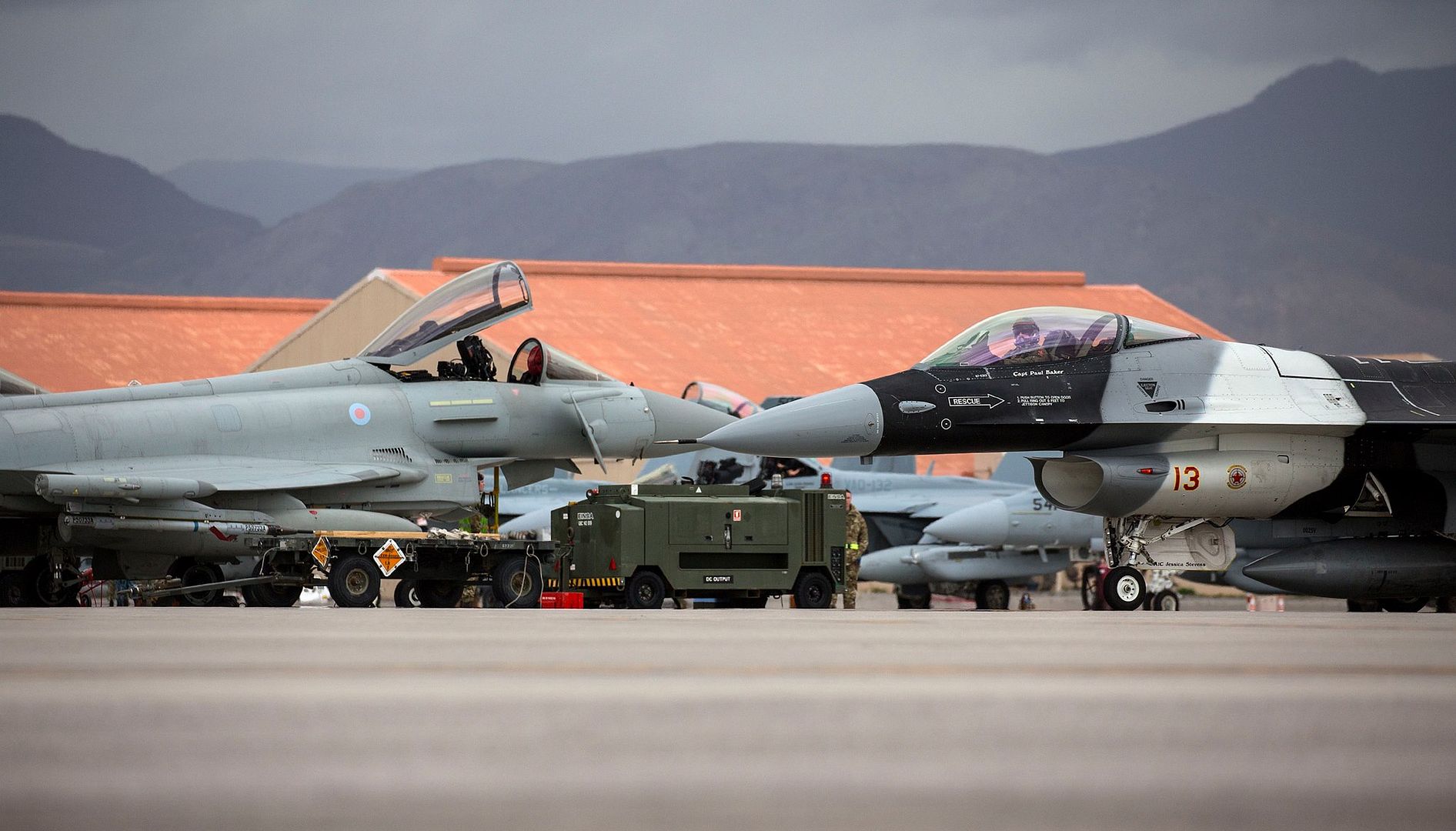
-
 Main AdminU.S. Airmen assigned to the 442nd Fighter Wing from Whiteman Air Force Base, Missouri, secure and prepare A-10 Thunderbolt II aircraft after arriving aboard Marine Corps Air Station Kaneohe Bay, Marine Corps Base Hawaii, Feb. 11, 2019. The unit will be participating in various training exercises across the Hawaiian islands, working alongside U.S. Marine Corps units. (U.S. Marine Corps photo by Sgt. Jesus Sepulveda Torres)
Main AdminU.S. Airmen assigned to the 442nd Fighter Wing from Whiteman Air Force Base, Missouri, secure and prepare A-10 Thunderbolt II aircraft after arriving aboard Marine Corps Air Station Kaneohe Bay, Marine Corps Base Hawaii, Feb. 11, 2019. The unit will be participating in various training exercises across the Hawaiian islands, working alongside U.S. Marine Corps units. (U.S. Marine Corps photo by Sgt. Jesus Sepulveda Torres)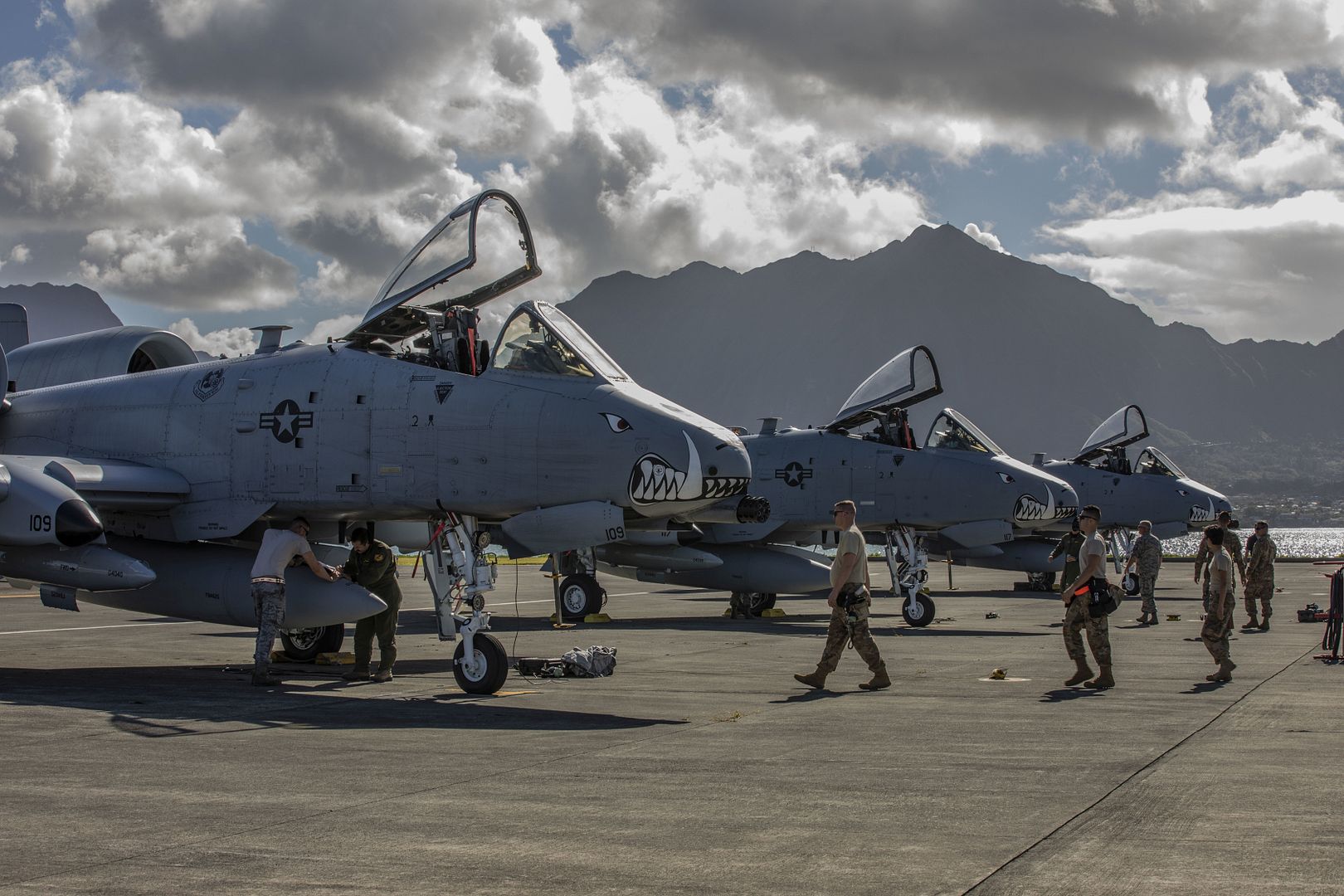
A U.S. Marine Corps CH-53E Super Stallion flies above a runway during survival, evasion, resistance and escape (SERE) training in Brunswick, Maine, Feb. 10, 2019. Marine Heavy Helicopter Squadron (HMH) 464 conducted the training as part of a cold weather training exercise. HMH-464 stays ready to operate in cold weather and other austere environments should the need arise. The aircraft is assigned to HMH-464, Marine Aircraft Group 29, 2nd Marine Aircraft Wing. (U.S. Marine Corps photo by Cpl. Jered T. Stone)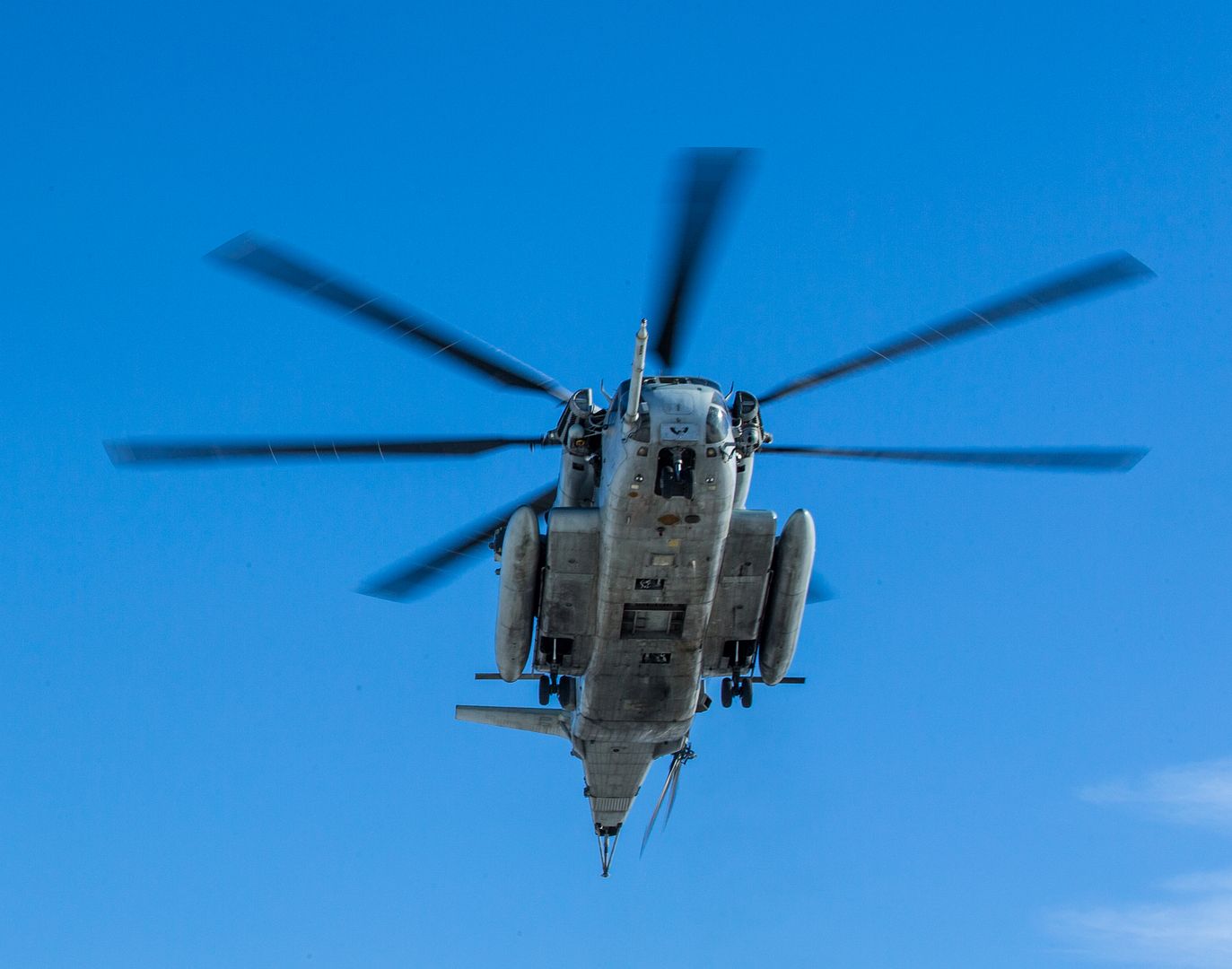
A U.S. Marine Corps CH-53E Super Stallion prepares to land on a runway during survival, evasion, resistance and escape (SERE) training in Brunswick, Maine, Feb. 10, 2019. Marine Heavy Helicopter Squadron (HMH) 464 conducted the training as part of a cold weather training exercise. HMH-464 stays ready to operate in cold weather and other austere environments should the need arise. The aircraft is assigned to HMH-464, Marine Aircraft Group 29, 2nd Marine Aircraft Wing. (U.S. Marine Corps photo by Cpl. Jered T. Stone)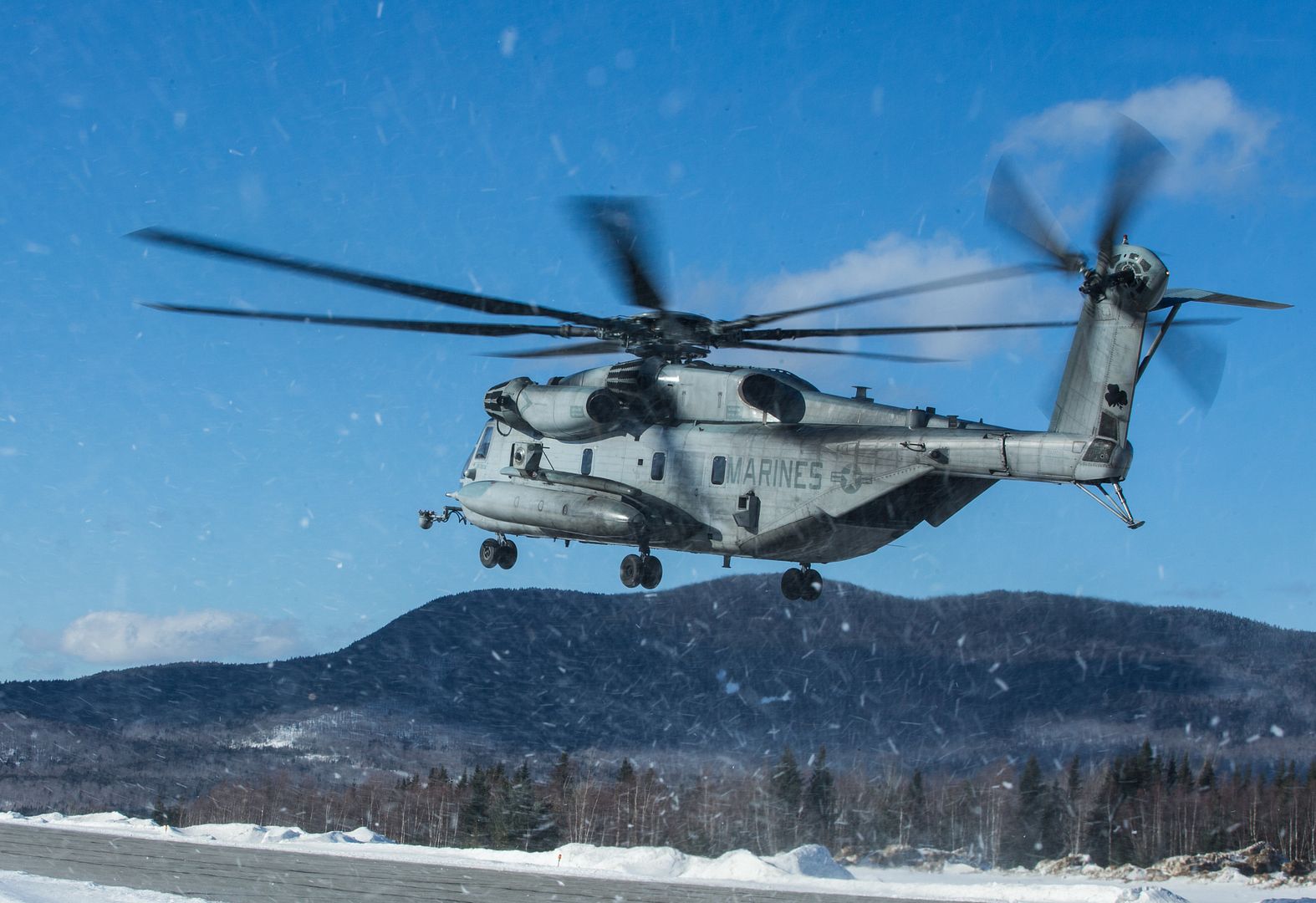
An F-16 Fighting Falcon assigned to the 480th Expeditionary Fighter Squadron taxis down the flightline during a Flying Training Deployment at Monte Real Air Base, Portugal, Feb. 11, 2019. FTDs serve to enhance readiness and improve interoperability between the U.S.and NATO allies across Europe. (U.S. Air Force photo by Staff Sgt. Jonathan Snyder)
A U.S. Air Force pilot assigned to the 79th Fighter Squadron (FS) prepares to taxi during Exercise Red Flag 19-1 at Nellis Air Force Base, Nev., Feb. 11, 2019. Pilots assigned to the 79th FS performed the suppression of enemy air defenses mission during the exercise. (U.S. Air Force photo by Senior Airman Christopher Maldonado)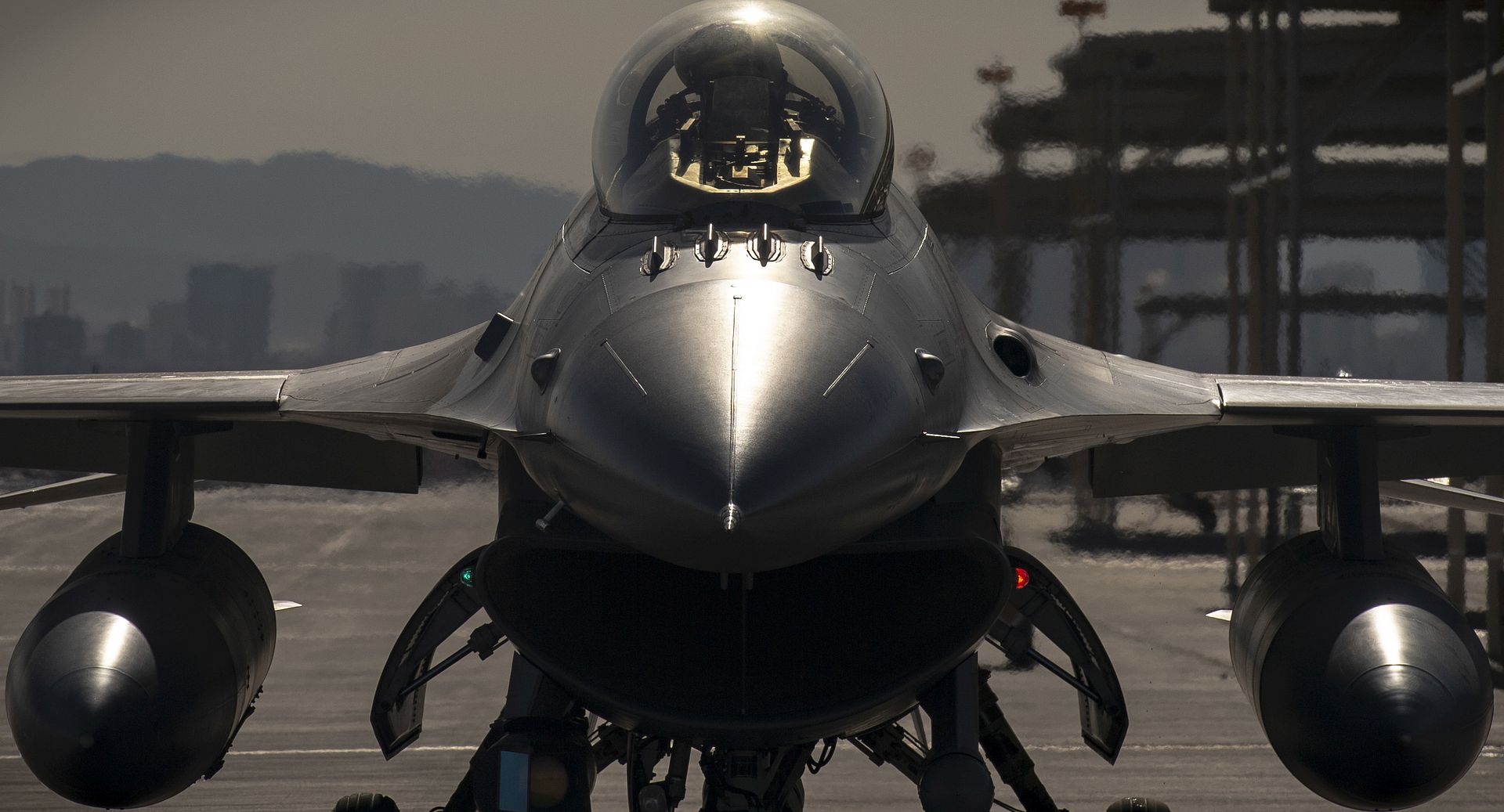
George Glass, U.S. Ambassador to Portugal, visited the 480th Expeditionary Fighter Squadron during a Flying Training Deployment at Monte Real Air Base, Portugal, Feb. 12, 2019. FTDs serve to enhance readiness and improve interoperability between the U.S. and NATO allies across Europe. (U.S. Air Force photo by Staff Sgt. Jonathan Snyder)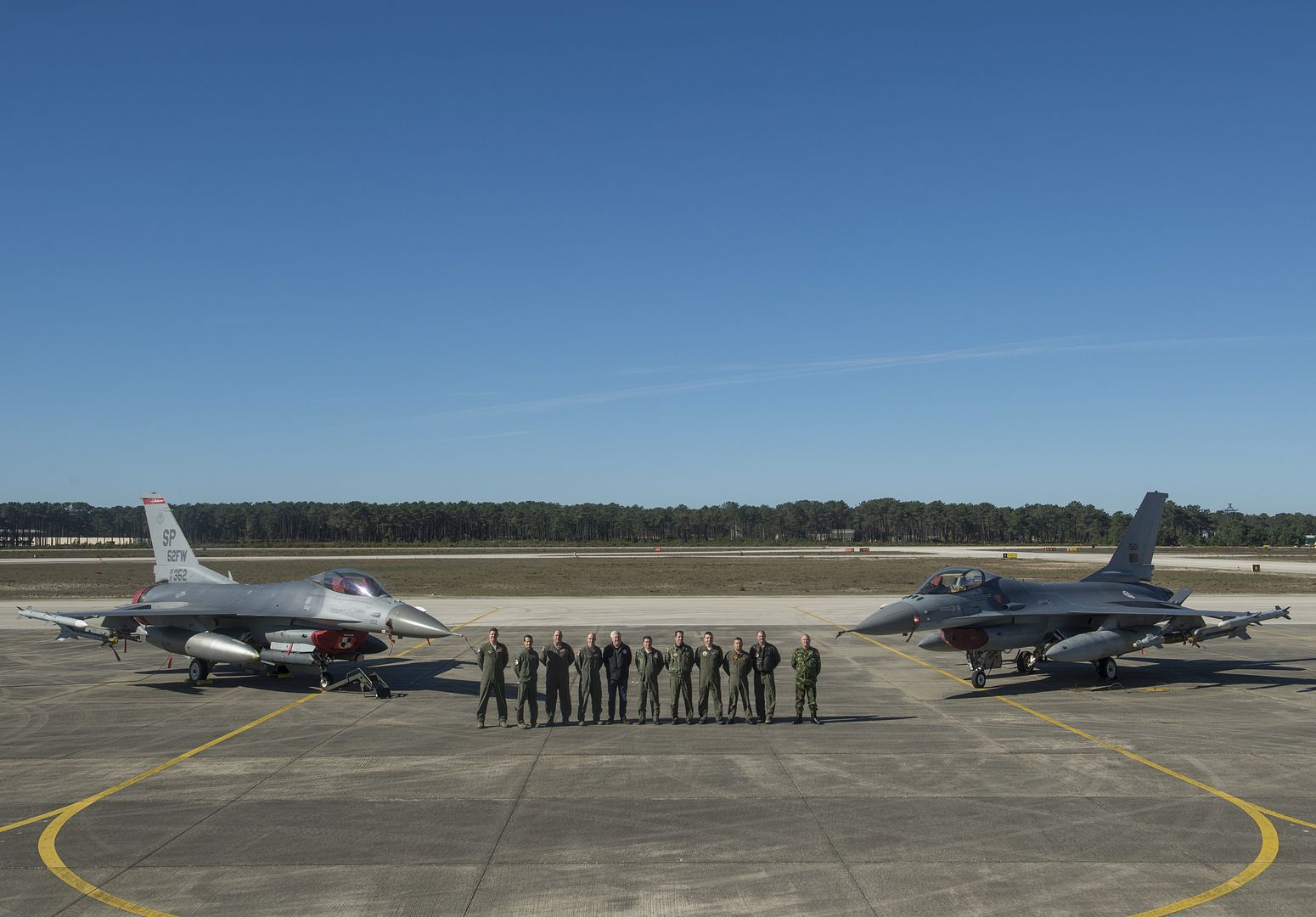
An F-16 Fighting Falcon assigned to the 480th Expeditionary Fighter Squadron takes off during a Flying Training Deployment at Monte Real Air Base, Portugal, Feb. 12, 2019. FTDs serve to enhance readiness and improve interoperability between the U.S. and NATO allies across Europe. (U.S. Air Force photo by Staff Sgt. Jonathan Snyder)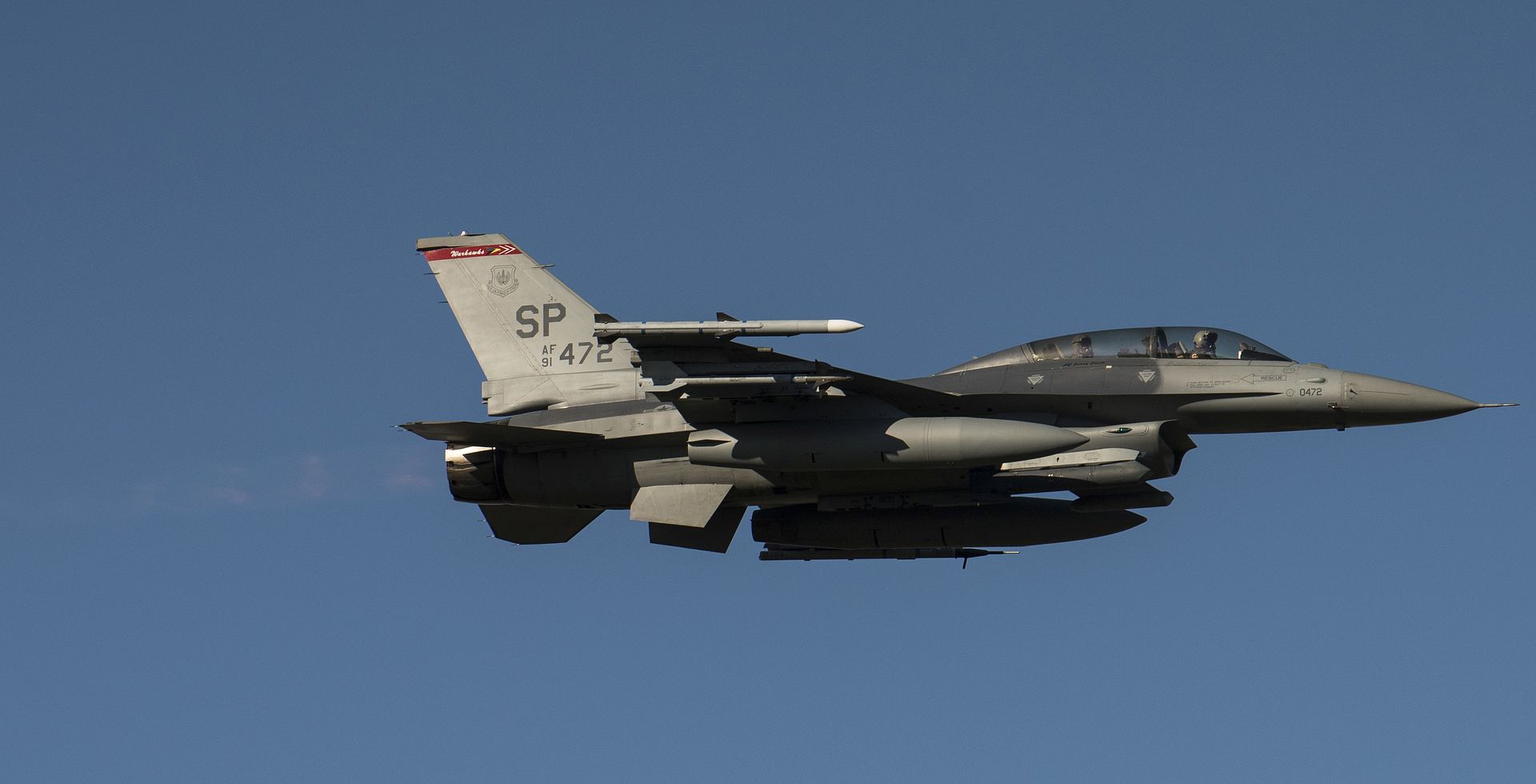
A United States Air Force F-22 Raptor is parked on the flight line on Feb. 12, 2019, at Joint Base Langley-Eustis, Virginia. The jets were staged as part of a routine night flying training mission. (U.S. Air National Guard photo by Senior Airman Bryan Myhr)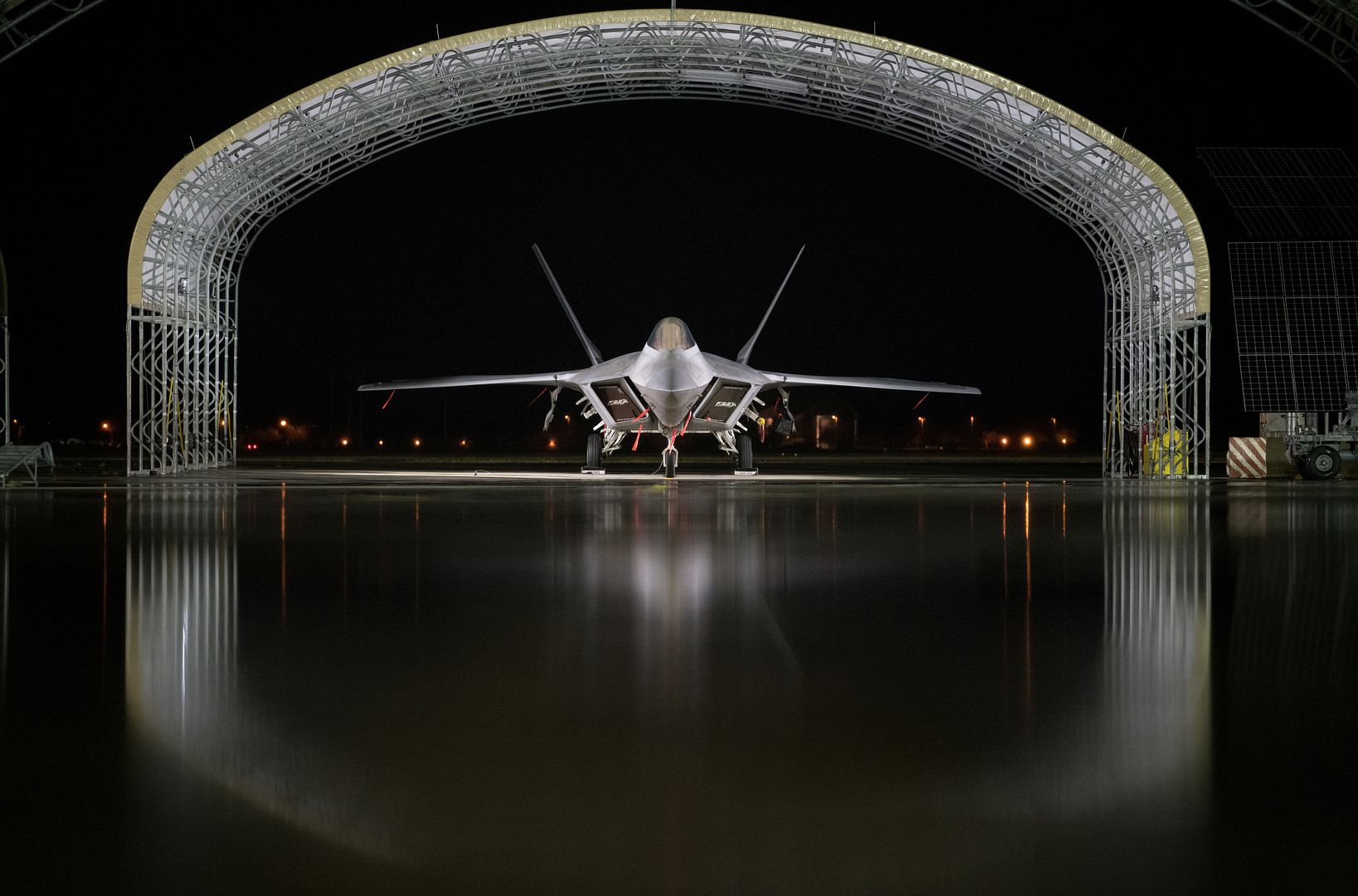
An F-35A Lightning II takes off at Nellis Air Force Base, Nev., Feb. 1, 2019. Pilots and maintainers from the 388th Fighter Wing's 4th Fighter Squadron and 4th Aircraft Maintenance Unit are participating in Red Flag 19-1 at Nellis AFB, Nevada. This is the wing's second Red Flag with the F-35A, America's most advanced multi-role fighter, which brings game-changing stealth, lethality and interoperability to the modern battlefield. Red Flag is the Air Force's premier combat exercise and includes units from across the Air Force and allied nations. The 388th is the lead wing for Red Flag 19-1. U.S. Air Force photo by R. Nial Bradshaw)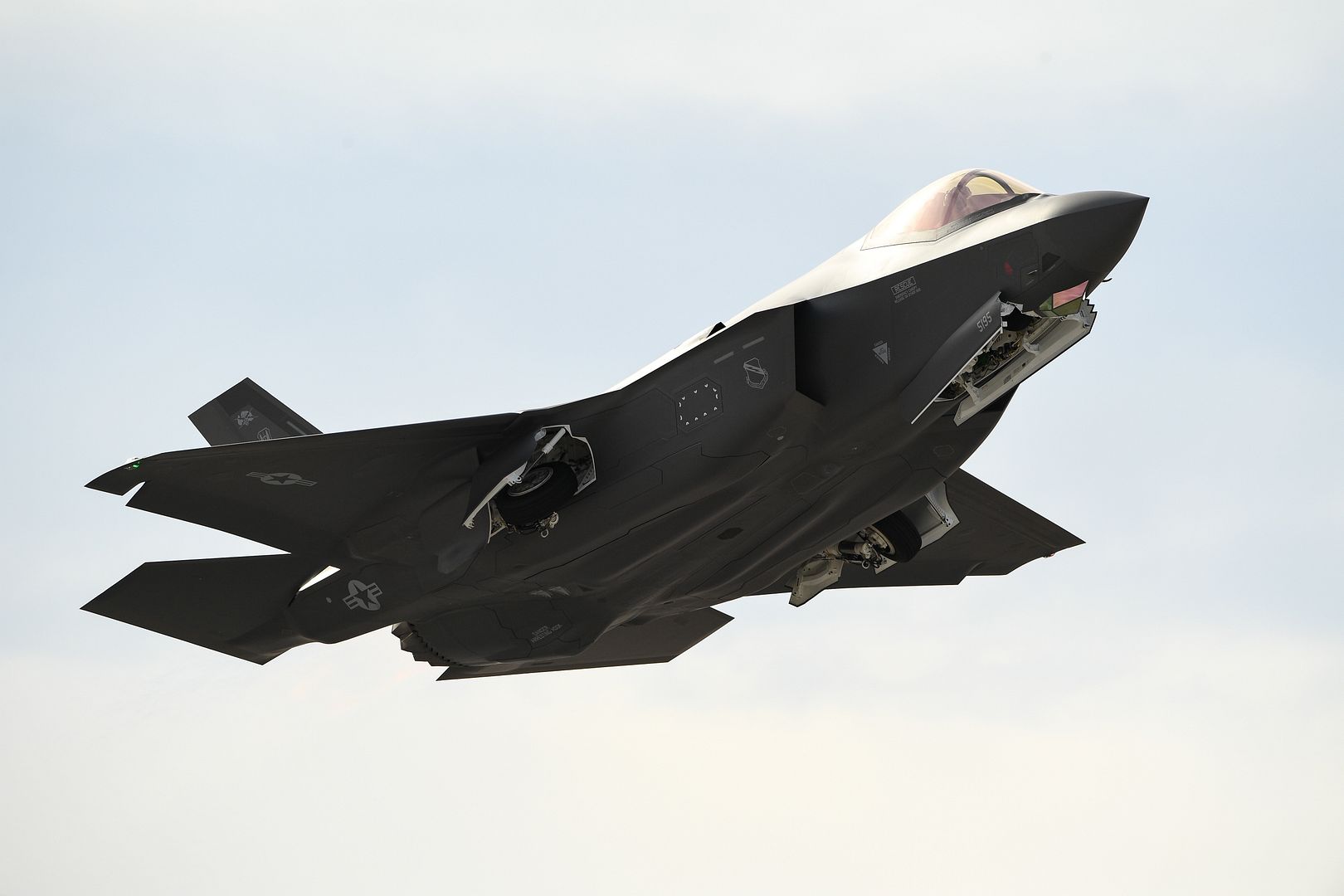
U.S. 5TH FLEET AREA OF OPERATIONS (Feb. 6, 2019) Master Chief Anthony Garcia, assigned to the "Grey Knights" of Patrol Squadron (VP) 46, observes as Sailors check the engine of a P-3C Orion anti-submarine warfare patrol aircraft during a maintenance check. VP-46 is currently deployed to the U.S. 5th Fleet and U.S. 7th Fleet areas of operations in support of Operation Inherent Resolve. While in this region, VP-46 is supporting naval operations to ensure maritime stability and security in the Central Region, connecting the Mediterranean and the Pacific through the western Indian Ocean and three strategic choke points. (U.S. Navy photo by Mass Communication Specialist 3rd Class Zachary Dalton/Released)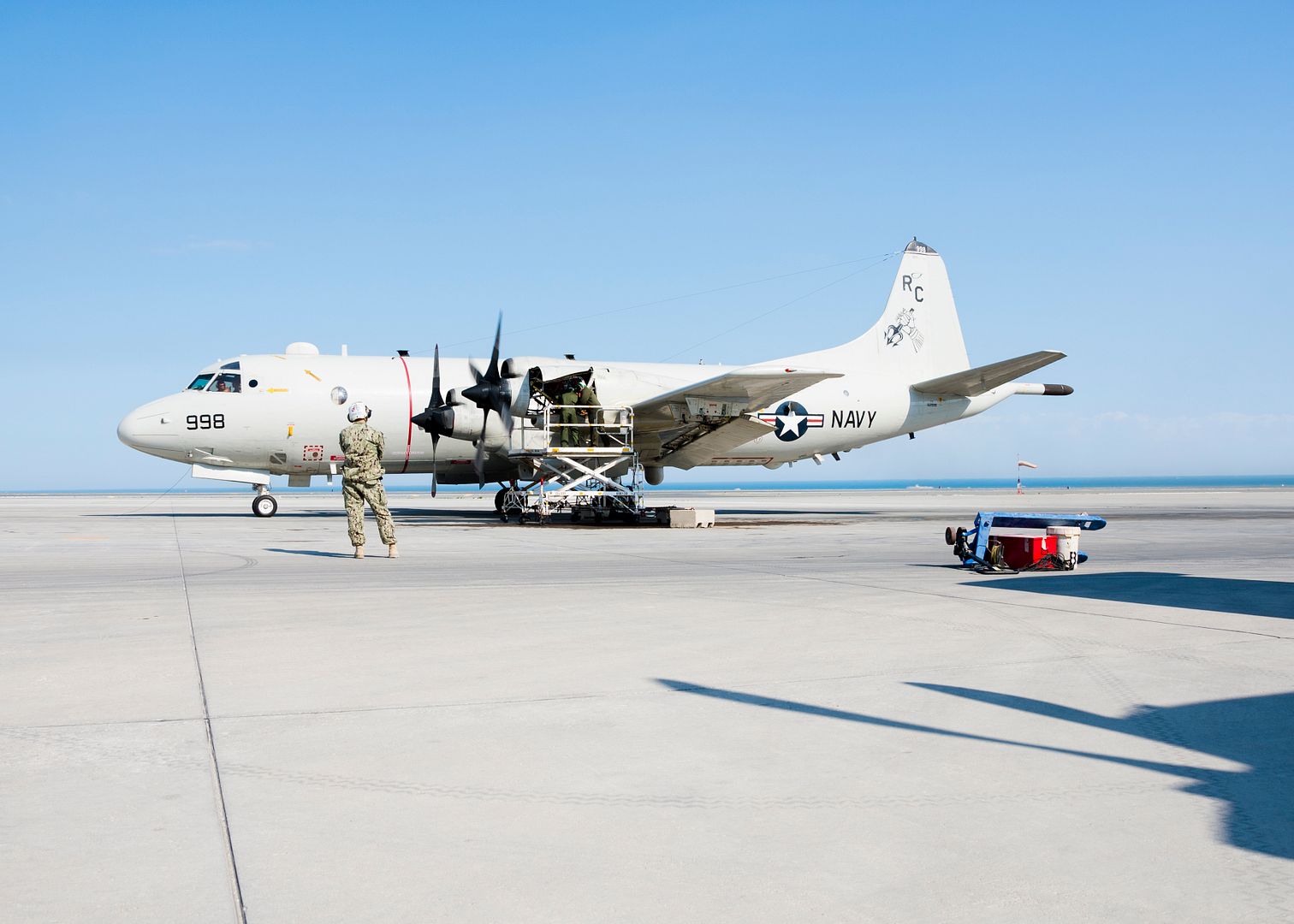
LONDON ? Feb. 12, 2019 ? Northrop Grumman Corporation (NYSE: NOC) welcomes the announcement by the F-35 Joint Program Office (JPO) in the U.S. that the U.K.?s European repair hub for F-35 avionics and aircraft components, based in North Wales, has been awarded a second major assignment of work.
This builds on the global assignment awarded to the U.K. in November 2016 to provide maintenance, repair, overhaul and upgrade (MRO&U) services for F-35 Lightning II Air Vehicle Depot-Level Repairable Components.
Northrop Grumman is a full partner in the Sealand Support Services Ltd. (SSSL) joint venture with the U.K. government-owned, Defence Electronics and Components Agency and BAE Systems. SSSL will provide maintenance and repair of avionics and aircraft components for hundreds of European-based F-35 aircraft at MOD Sealand.
?The selection of the U.K. and SSSL to undertake this work recognises the military aircraft support skills and capabilities that we have here,? said Nick Chaffey, chief executive, Northrop Grumman U.K. and Europe. ?Northrop Grumman?s commitment to the U.K. and the F-35 programme, deep expertise in air systems and proven experience working alongside global customers delivering support solutions, will ensure that engineering excellence and world-class innovation will be brought to F-35 component MRO&U services.?
This new assignment of work, worth some ?500 million, will support hundreds of additional F-35 jobs in the U.K. - many of them at the MOD?s Defence and Electronics Components Agency (DECA) at MOD Sealand, where the majority of the work will be carried out. It will see crucial maintenance, repair, overhaul and upgrade services for an even wider range of F-35 avionic, electronic and electrical systems for hundreds of European-based F-35 aircraft.
Rear-Admiral Rick Thompson, SSSL managing director said, ?From 2020, there will be hundreds of F-35s flying across the globe and SSSL will be central to sustaining operations in the European region and around the world, providing essential MRO&U services. Together with our partners from DECA, BAE Systems and Northrop Grumman, as Team U.K., SSSL will be able to offer the F-35 programme engineering excellence, world-class innovation and agility. It is hoped that this will be the start of a 40-year endeavour that continues the U.K.?s already long and proud involvement in the F-35 programme, which makes us very much part of this aircraft?s DNA and the F-35 global enterprise.?
?MRO&U components are one element of the Northrop Grumman F-35 global sustainment solutions. As the U.S., partner nations and global customers activate their fleets, Northrop Grumman and the industry team will continue to ensure F-35 Lightning II weapon systems are available for tasking and mission training,? said Steve Hogan, sector vice president, global sustainment and technology services supply chain, Northrop Grumman.
This award builds upon the significant contribution made by Northrop Grumman in the development and production of the aircraft as a principal member of the F-35 industry team, together with its strong pedigree in platform support, upgrade and sustainment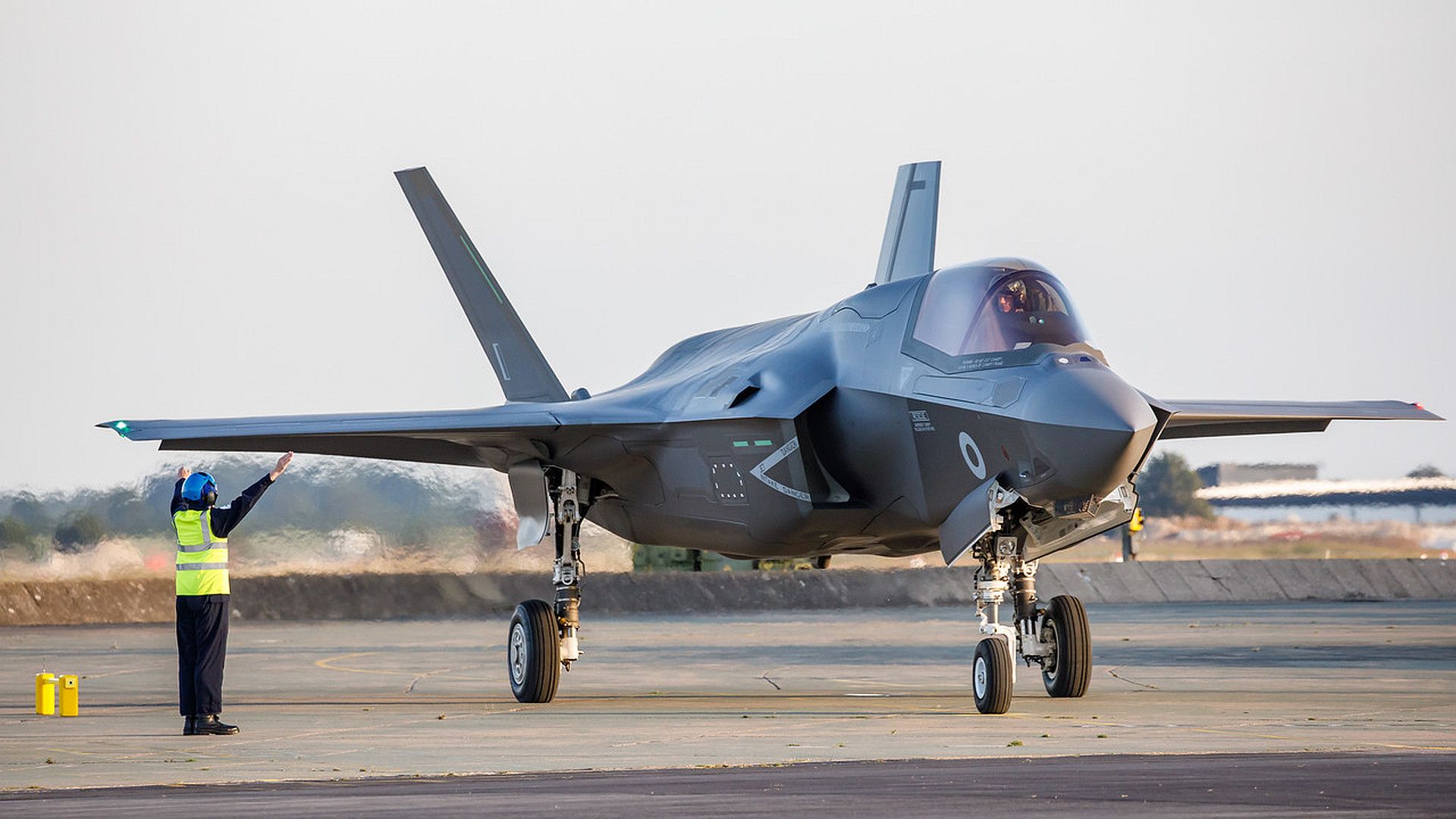
F-35 1st UK arrival RAF Marham. (Photo Credit: Thinh D Nguyen/Lockheed Martin)
As Exercise #RedFlag continues until the end of this week, an RAF Voyager air-to-air refuelling tanker has been busy at work over the Nevada Test and Training Range, refuelling not only RAF Typhoons but US F/A-18s too.
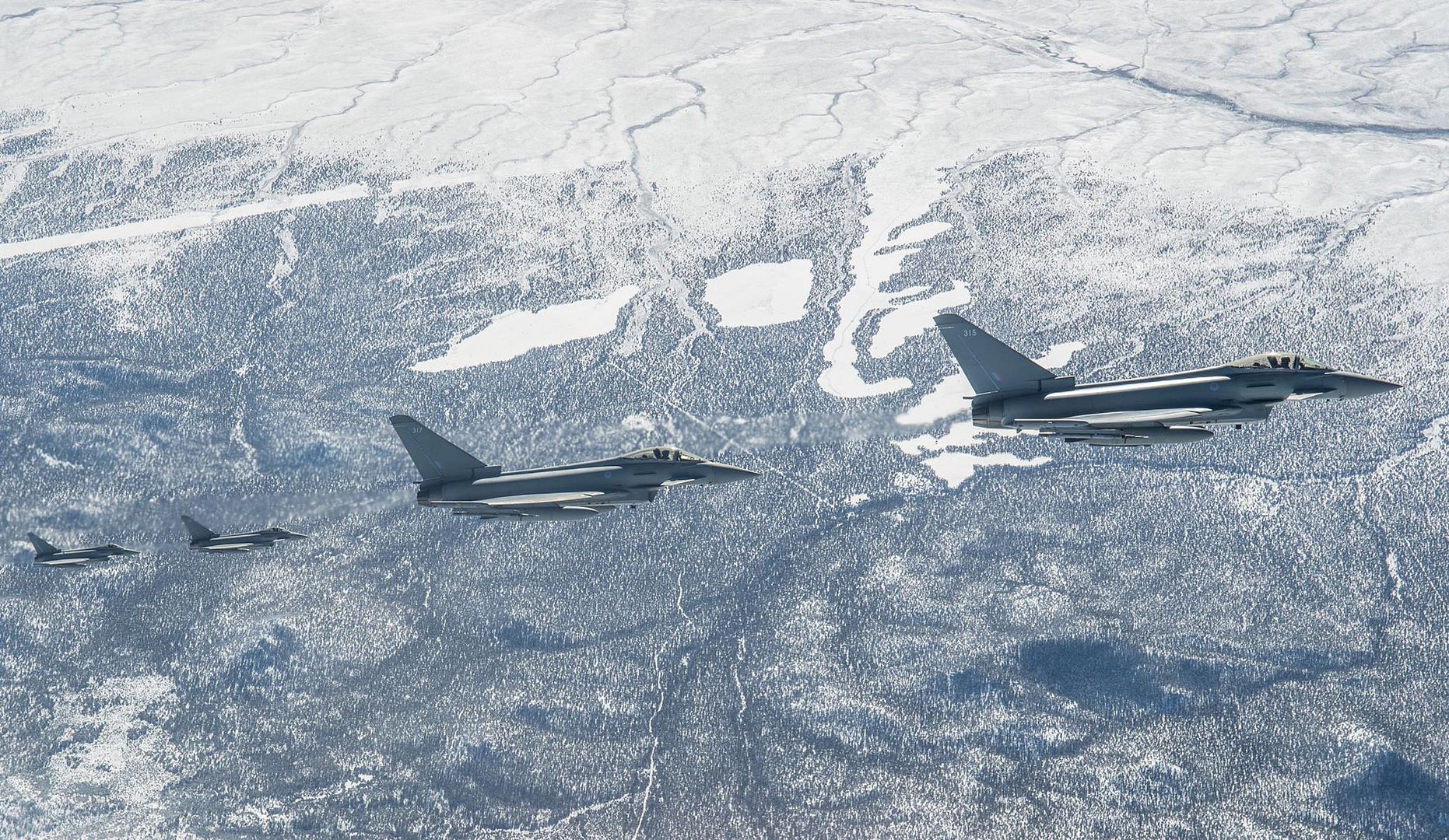

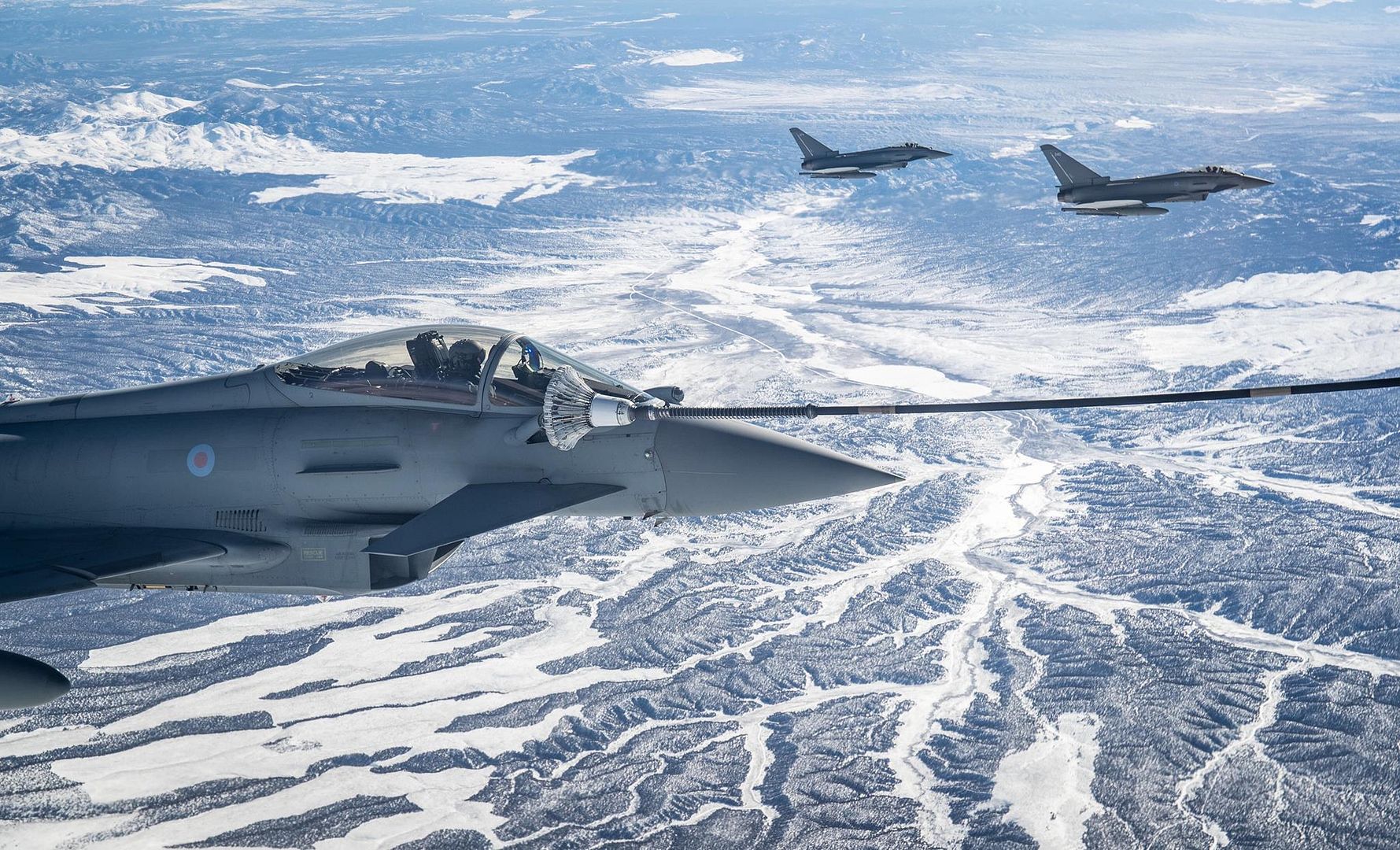
-
 Main AdminA Coast Guard Air Station Kodiak HC-130 Hercules aircrew offloads equipment needed to open the St. Paul forward operating location in St. Paul, Alaska, Feb. 12, 2019. As the commercial fishing fleets migrate through the Bering Sea, having a geographically located Coast Guard FOL reduces distances and response times for search and rescue cases. U.S. Coast Guard photo by Petty Officer 3rd Class Lauren Dean.
Main AdminA Coast Guard Air Station Kodiak HC-130 Hercules aircrew offloads equipment needed to open the St. Paul forward operating location in St. Paul, Alaska, Feb. 12, 2019. As the commercial fishing fleets migrate through the Bering Sea, having a geographically located Coast Guard FOL reduces distances and response times for search and rescue cases. U.S. Coast Guard photo by Petty Officer 3rd Class Lauren Dean.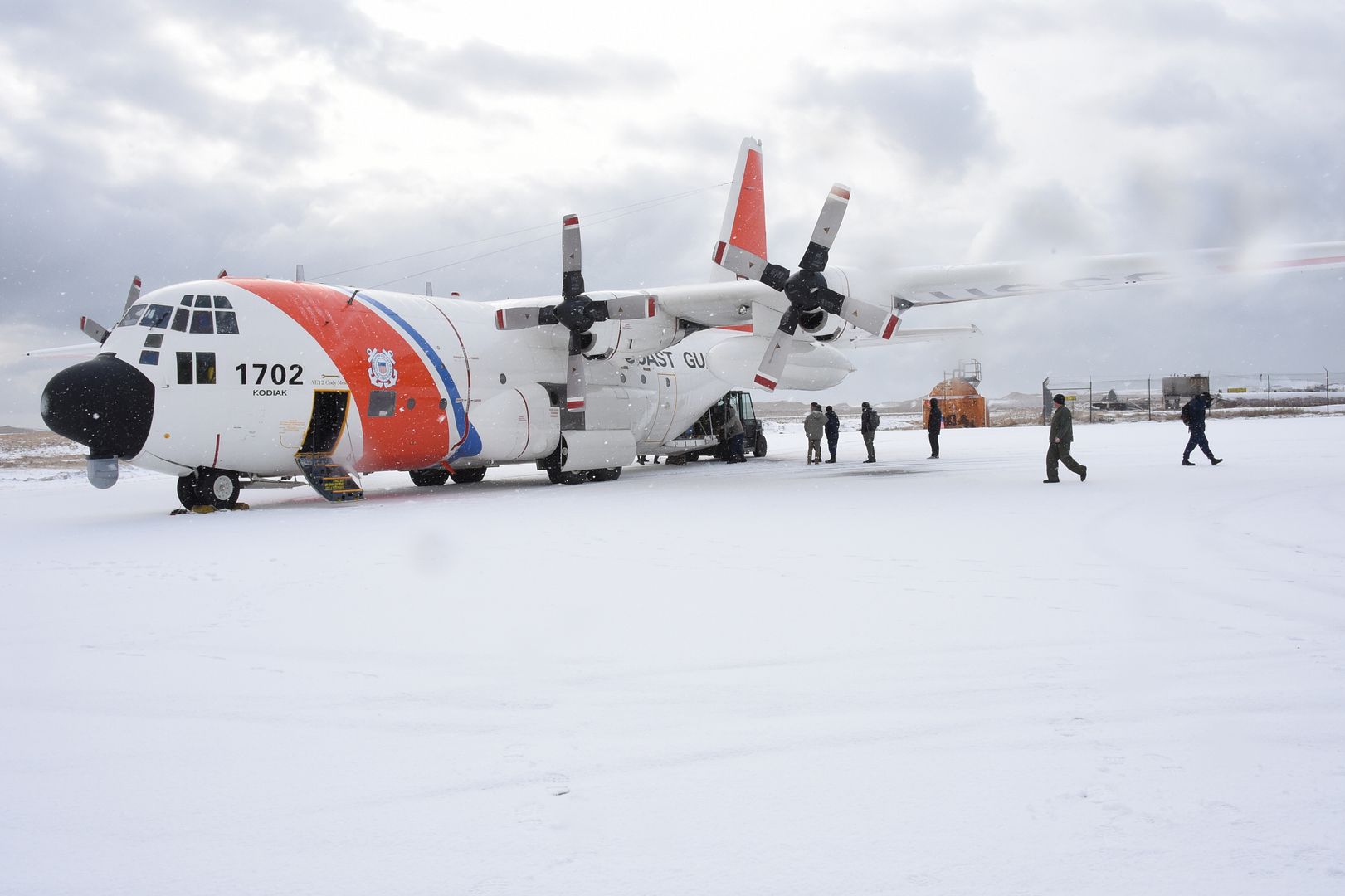
Airmen assigned to the 1st Fighter Wing and 192nd Wing prepare F-22 Raptors for routine night flying training on Feb. 11, 2019, at Joint Base Langley-Eustis, Virginia. The total force integrated F-22 mission on JBLE includes Air National Guard and active duty Airmen. (U.S. Air National Guard photo by Senior Airman Bryan Myhr)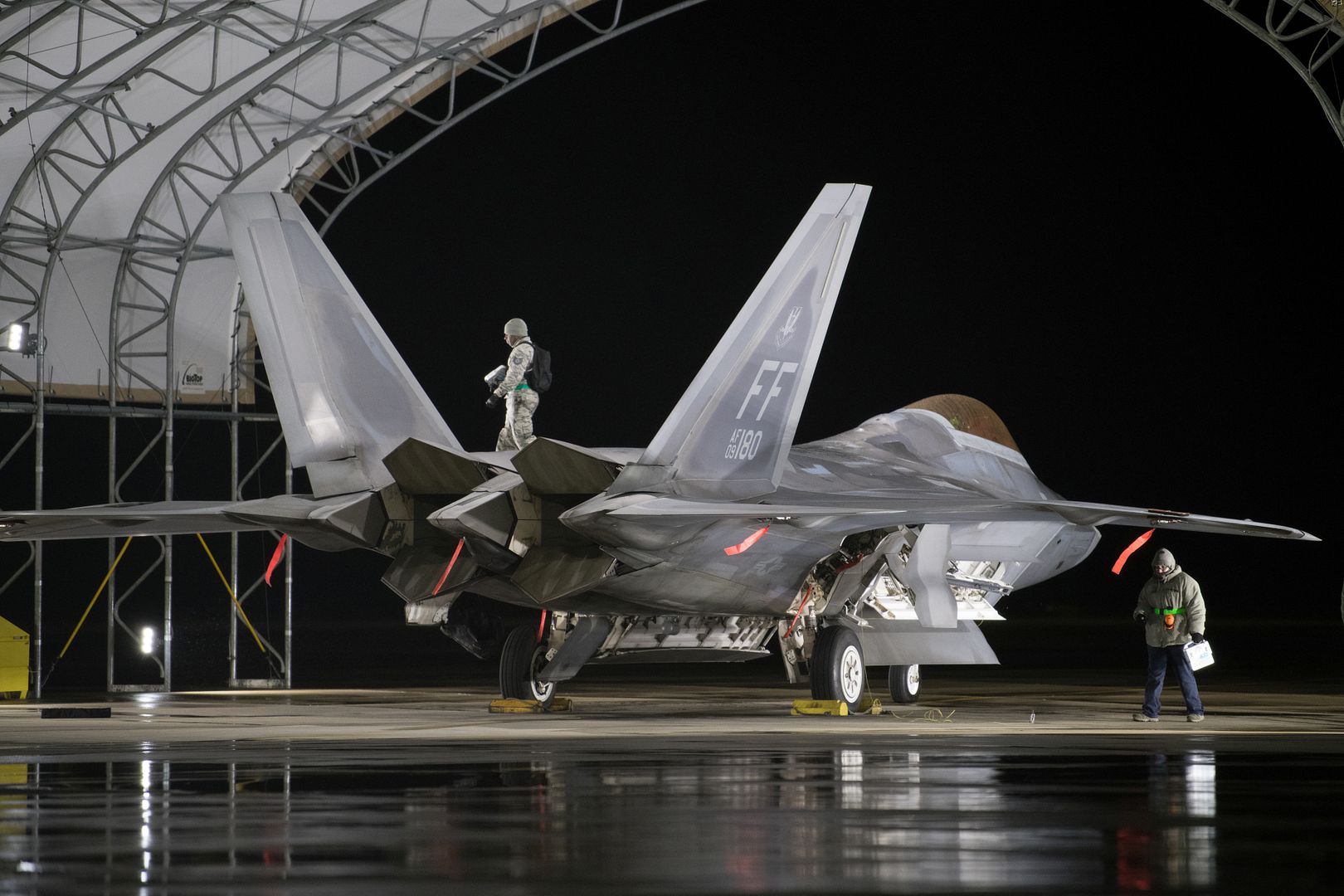
A U.S. Air Force F-16 Fighting Falcon takes flight from Aviano Air Base, Italy, Feb. 12, 2019. Fighter jets from Aviano AB flew to Poland as part of an exercise to test mission readiness. (U.S. Air Force photo by Airman 1st Class Caleb House)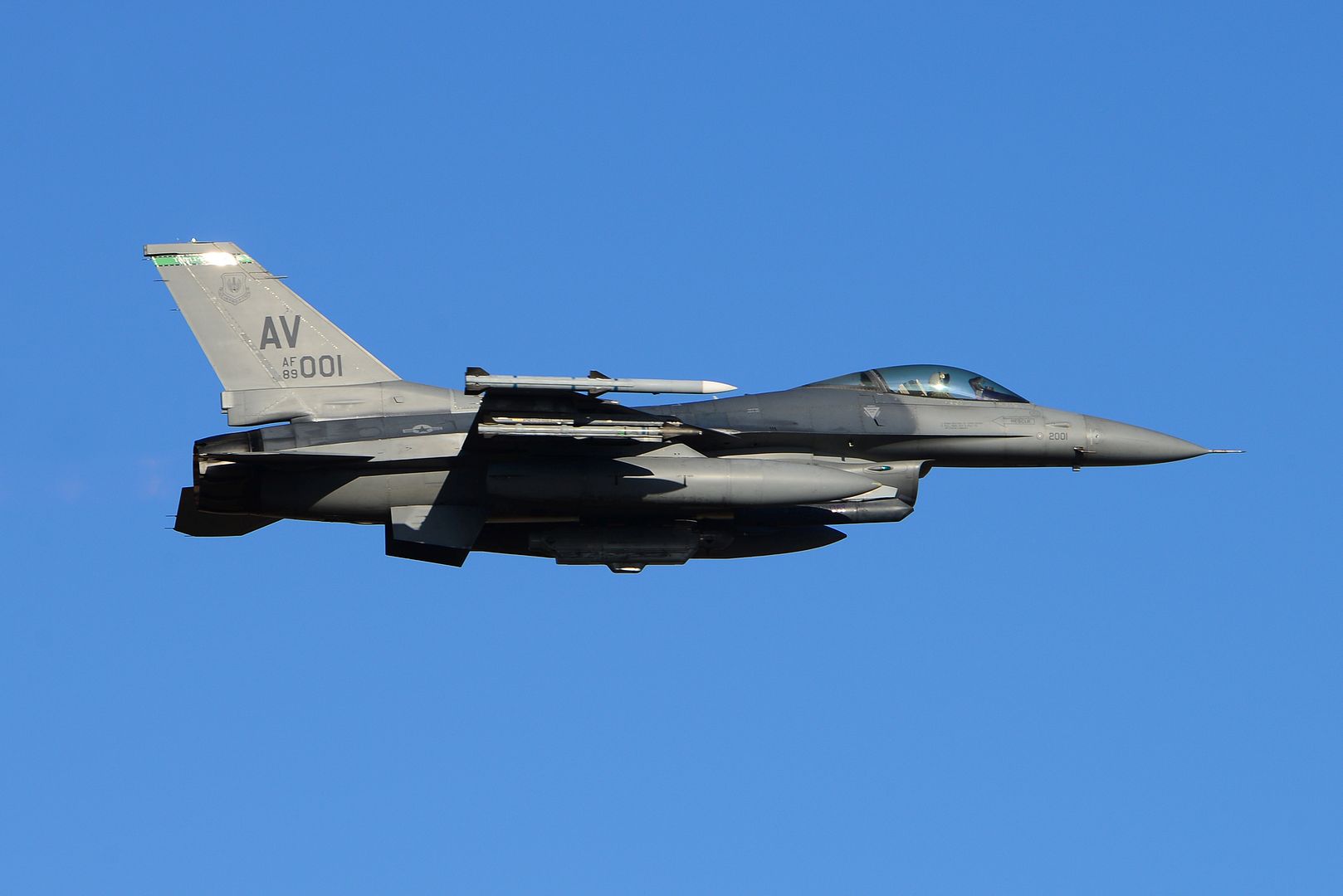
An F-16 Fighting Falcon pilot waits to be marshaled on the flight line during a Flying Training Deployment at Monte Real Air Base, Portugal, Feb. 13, 2019. FTDs challenge both pilots and ground crews to quickly adapt to unfamiliar surroundings. (U.S. Air Force photo by Staff Sgt. Jonathan Snyder)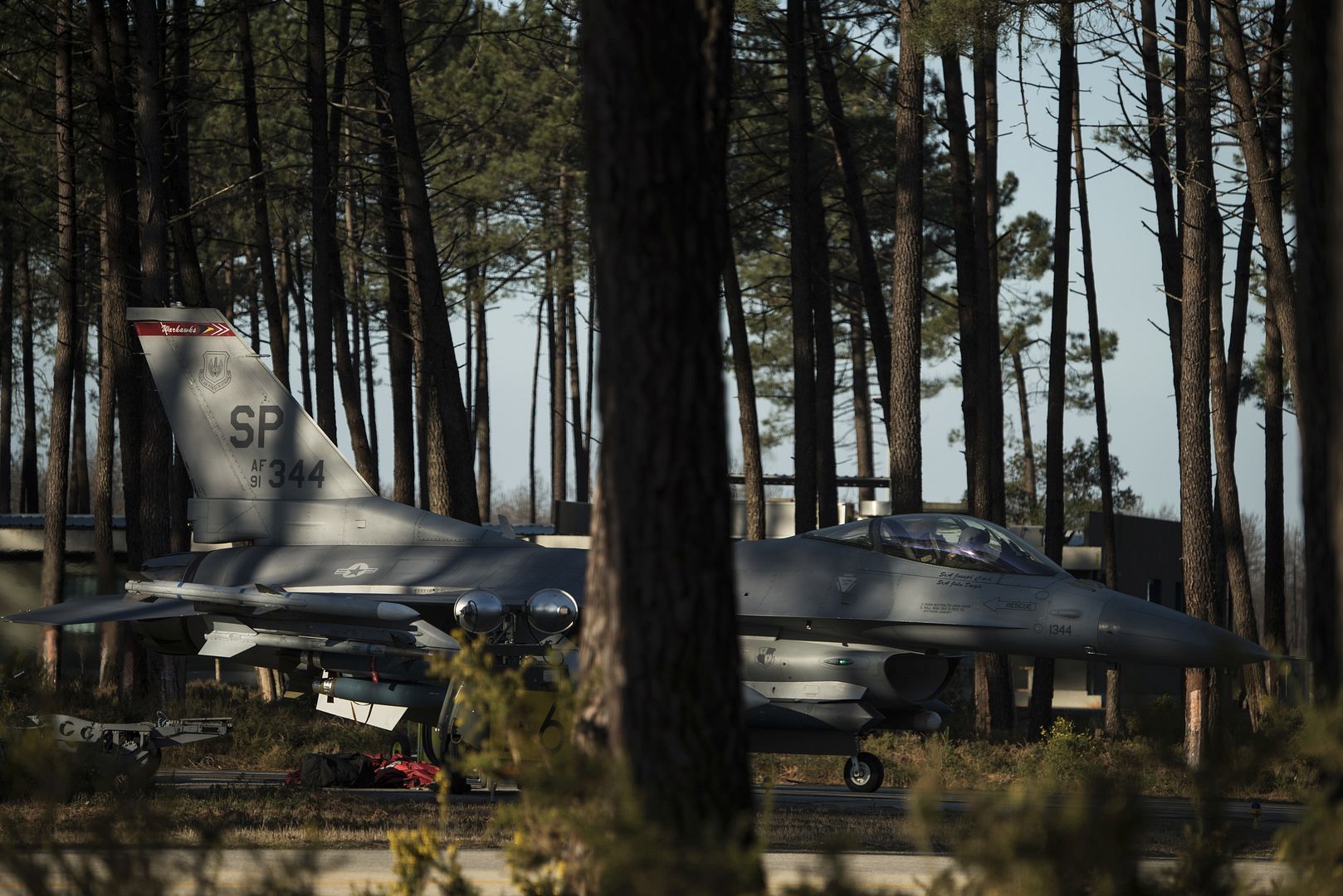
An F-16 Fighting Falcon assigned to the 480th Expeditionary Fighter Squadron taxis down the flight line during a Flying Training Deployment at Monte Real Air Base, Portugal, Feb. 13, 2019. FTDs serve to enhance readiness and improve interoperability between the U.S. and NATO allies across Europe. (U.S. Air Force photo by Staff Sgt. Jonathan Snyder)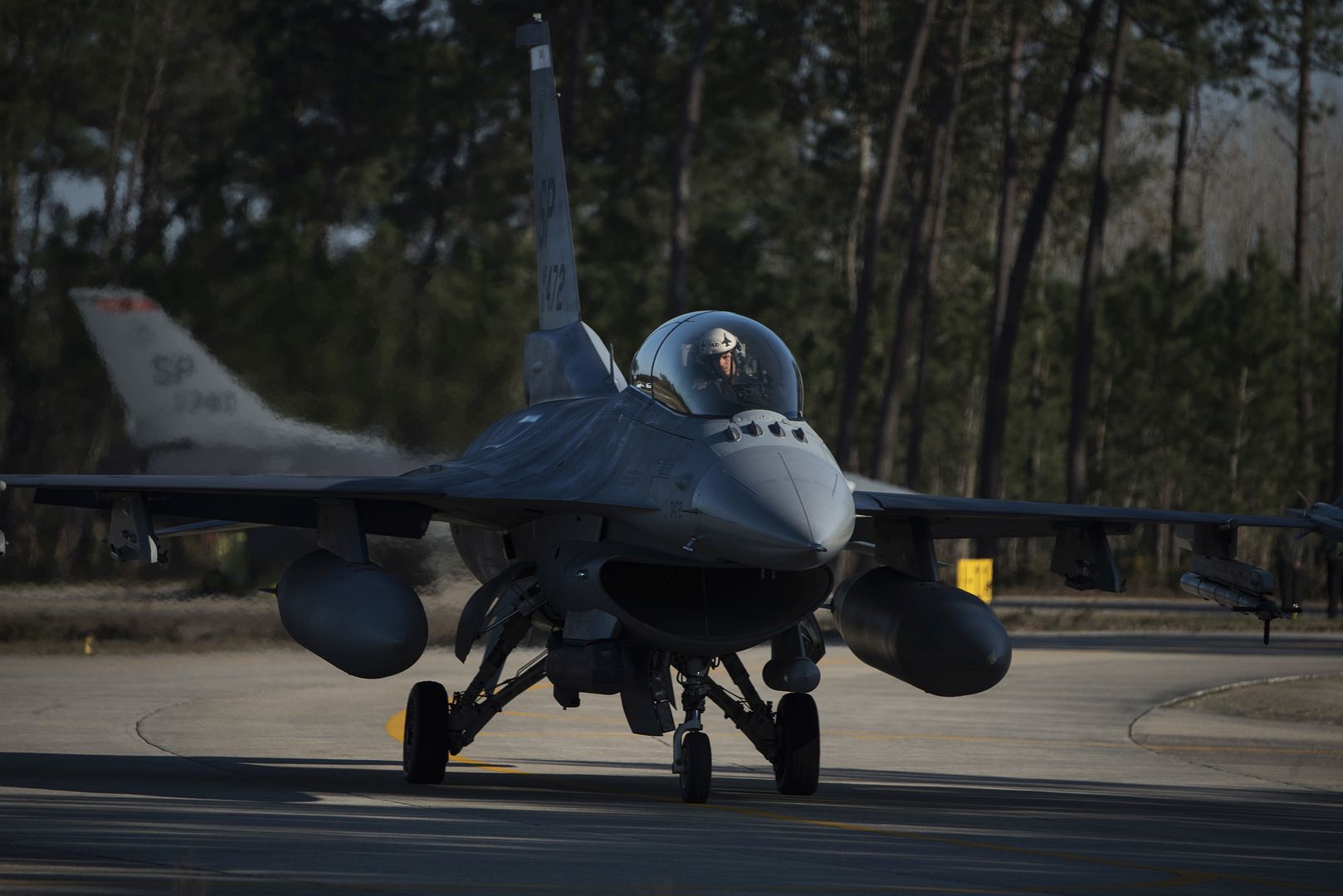
ATLANTIC OCEAN (Feb. 10, 2019) An F/A-18E Super Hornet from the "Pukin' Dogs" of Strike Fighter Squadron (VFA) 143 launches from the flight deck of the Nimitz-class aircraft carrier USS Abraham Lincoln (CVN 72). Abraham Lincoln is underway conducting composite training unit exercise (COMPTUEX) with Carrier Strike Group (CSG) 12. The components of CSG-12 embody a team-of-teams concept, combining advanced surface, air and systems assets to create and sustain operational capability. This enables them to prepare for and conduct global operations, have effective and lasting command and control, and demonstrate dedication and commitment to becoming the strongest warfighting force for the Navy and the nation. (U.S. Navy photo by Mass Communication Specialist 2nd Class Matt Herbst/Released)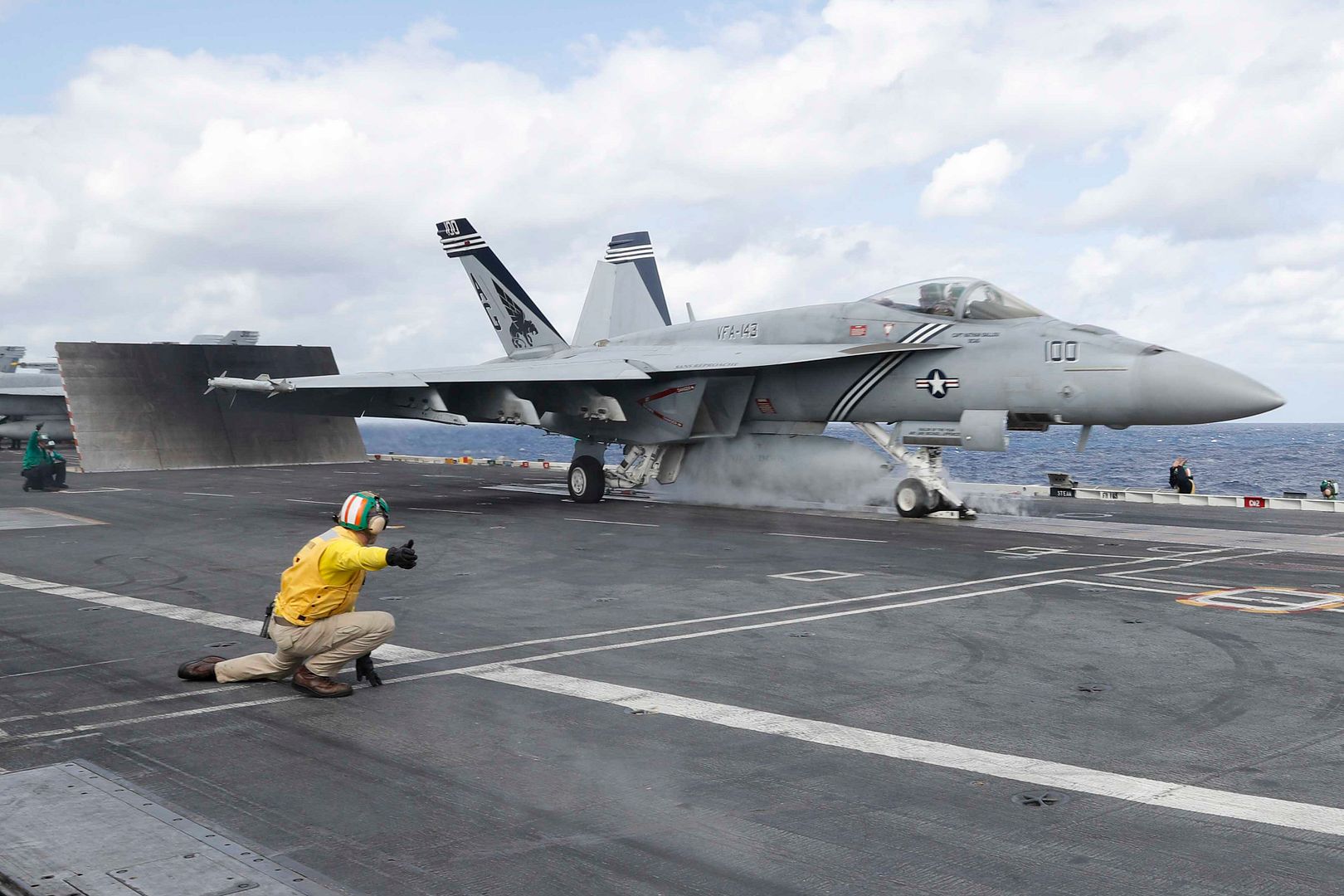
Amsterdam, The Netherlands, February 13th, 2019 ? Embraer and Air Astana, a flag carrier of Kazakhstan, have reached a multiyear agreement on a Flight Hour Pool Program to support the component needs for the airline?s new E2 fleet, Embraer?s second generation of the E-Jets family of commercial aircraft.
The E2?s entry into service marks the beginning of Air Astana's fleet renewal. Currently the airline operates a fleet of nine E190s aircraft, the first of which was delivered in 2011, when the airline joined Embraer Pool Program. Now, with the extension of the pool program for the new E190-E2s, Air Astana have extended their trust in our strong partnership.
Air Astana took delivery of its first E190-E2 jet in December 2018 and flies the new aircraft on domestic and Commonwealth of Independent States (CIS) routes. The airline will receive four additional E190-E2s in 2019, with the last of the five aircraft, all of which are leased by AerCap, being delivered in the final quarter of 2019.
The Pool Agreement for the airline?s E190-E2 fleet will cover unlimited access and full repair coverage for more than 325 components with almost a third of them exclusively placed at airline?s main base to ensure high fleet availability.
?We are proud that Air Astana has chosen to place its trust in us to support its new E2 fleet, further reinforcing Embraer's commitment to customers in the region with TechCare portfolio of solutions. It is a strong endorsement for the program and Embraer services, proving customers loyalty to the state of the art support of the OEM (Original Equipment Manufacturer) with a competitive value,? said Johann Bordais, President and CEO of Embraer Services & Support.
?The support of the OEM is a natural fit for Air Astana as we transition into our new fleet of Embraer?s second generation of E-Jets. This was fundamental in our decision to join the program, which will allow us to upkeep our daily operations as it offers cost effective and practical solutions, guaranteeing efficiency and competitive results,? said Peter Foster, CEO of Air Astana.
Embraer?s Flight Hour Pool Program, which currently supports more than 40 airlines worldwide, is designed to allow airlines to minimize their upfront investment on expensive repairable inventories and resources and to take advantage of Embraer?s technical expertise and its vast component repair service provider network. The results are significant savings on repair and inventory carrying costs, reduction in required warehousing space, and the elimination of resources required for repair management, while ultimately providing guaranteed performance levels.
The E190-E2 is the first of three new aircraft types that will make up the Embraer E2 family of aircraft developed to succeed the first-generation of E-Jets. Embraer Services & Support has implemented the E2 Pool Program to support operators from the very first day of delivery. Wider?e, the largest regional airline in Scandinavia and launch customer for the E190-E2, received its first E2 aircraft on April 2018. Currently, 100% of the delivered E2 E-Jets are supported by the program.
This Pool Program is part of a suite of services that Embraer offers to support the worldwide growing fleet of Embraer aircraft through TechCare, the new Embraer platform that assembles the entire portfolio of products and solutions to deliver the best experience of services and support.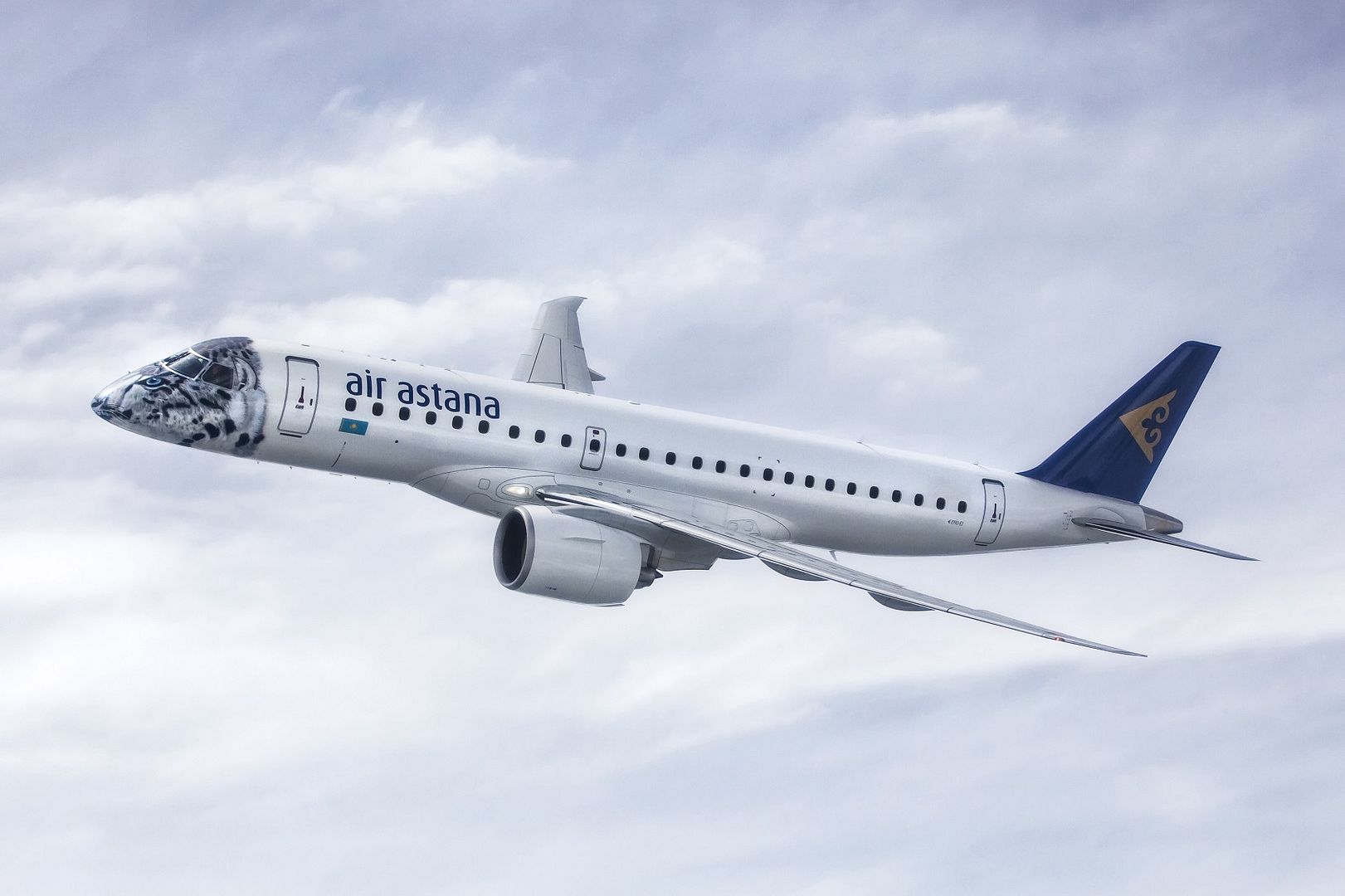
-
 Main AdminA Portuguese air force F-16 Fighting Falcon takes off for a training mission with the 480th Expeditionary Fighter Squadron at Monte Real Air Base, Portugal, Feb. 14, 2019. Airmen of the 480th EFS work closely with their Portuguese counterparts to plan and execute training missions together throughout the Flying Training Deployment. (U.S. Air Force photo by Staff Sgt. Jonathan Snyder)
Main AdminA Portuguese air force F-16 Fighting Falcon takes off for a training mission with the 480th Expeditionary Fighter Squadron at Monte Real Air Base, Portugal, Feb. 14, 2019. Airmen of the 480th EFS work closely with their Portuguese counterparts to plan and execute training missions together throughout the Flying Training Deployment. (U.S. Air Force photo by Staff Sgt. Jonathan Snyder)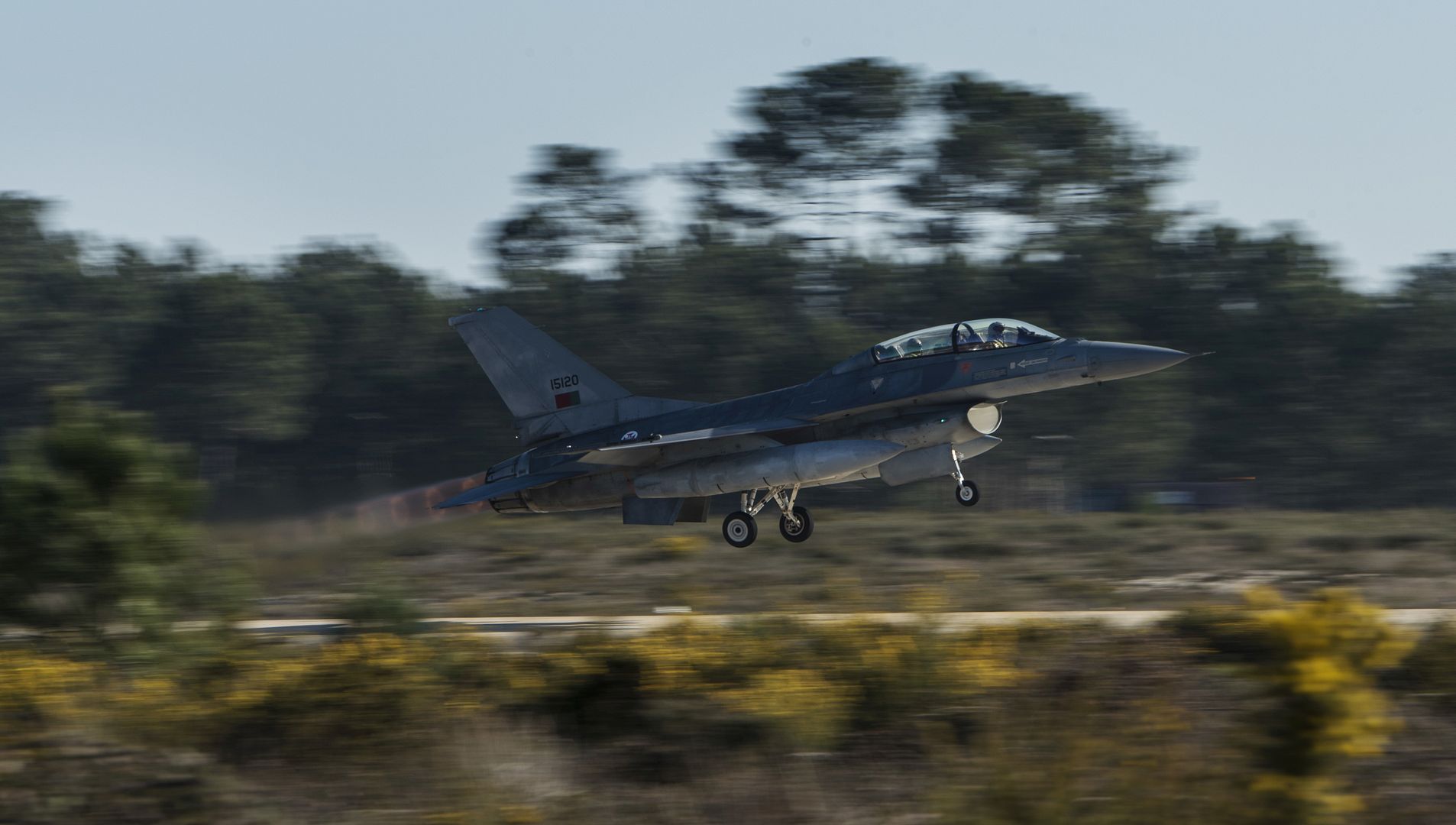
An F-16 Fighting Falcon assigned to the 480th Expeditionary Fighter Squadron takes off during a Flying Training Deployment at Monte Real Air Base, Portugal, Feb. 14, 2019. FTDs which serves to enhance readiness and improve interoperability between the U.S. and NATO allies across Europe by giving Airmen a chance to integrate with their counterparts. (U.S. Air Force photo by Staff Sgt. Jonathan Snyder)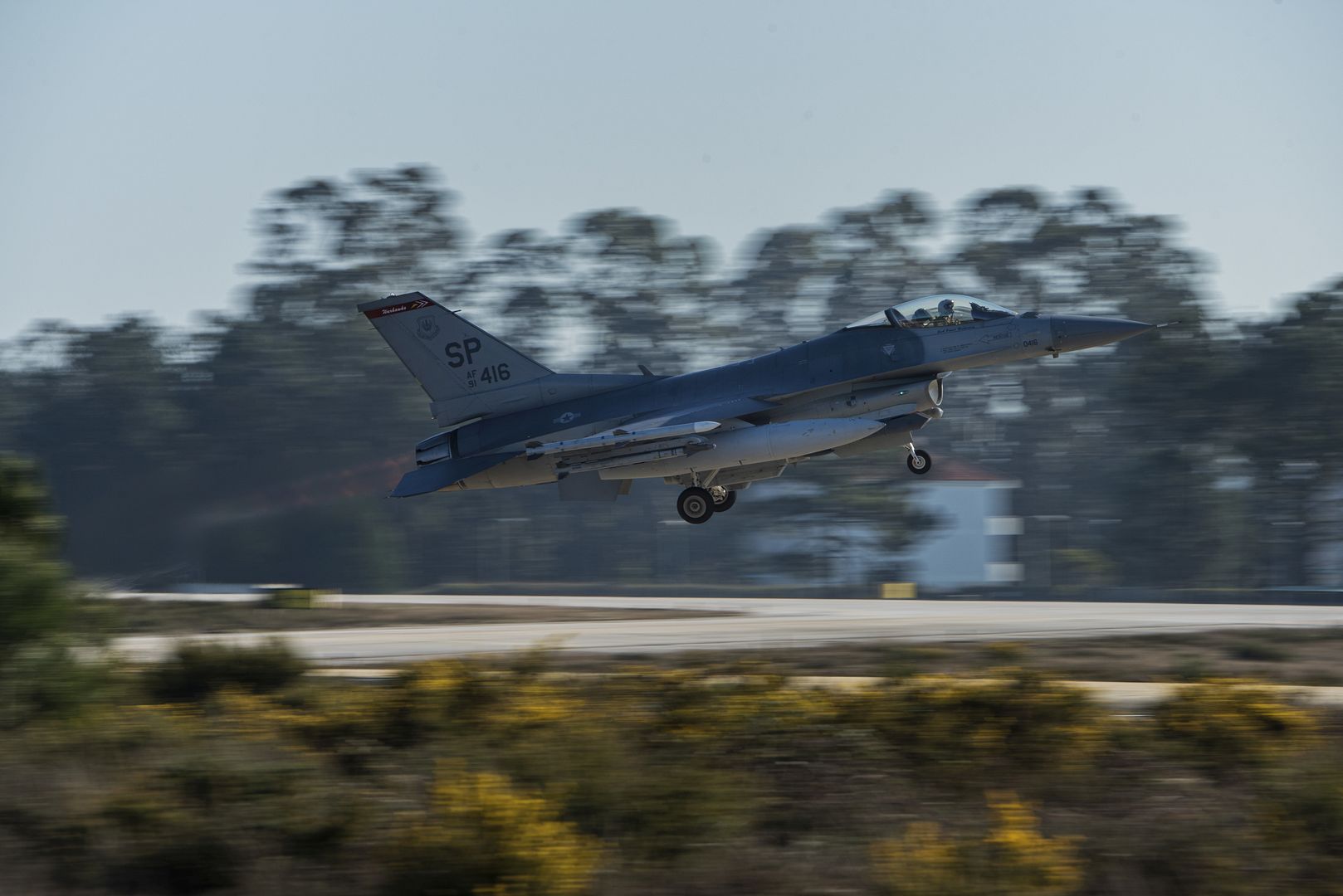
U.S. Air Force F-16C Fighting Falcons assigned to the 20th Fighter Wing sit on the flightline during Red Flag 19-1 at Nellis Air Force Base, Nev., Feb. 13, 2019. During the three-week exercise, the 79th FS worked alongside coalition partners and built on their in-unit comradery as well as with allied forces. (U.S. Air Force photo by Senior Airman Christopher Maldonado)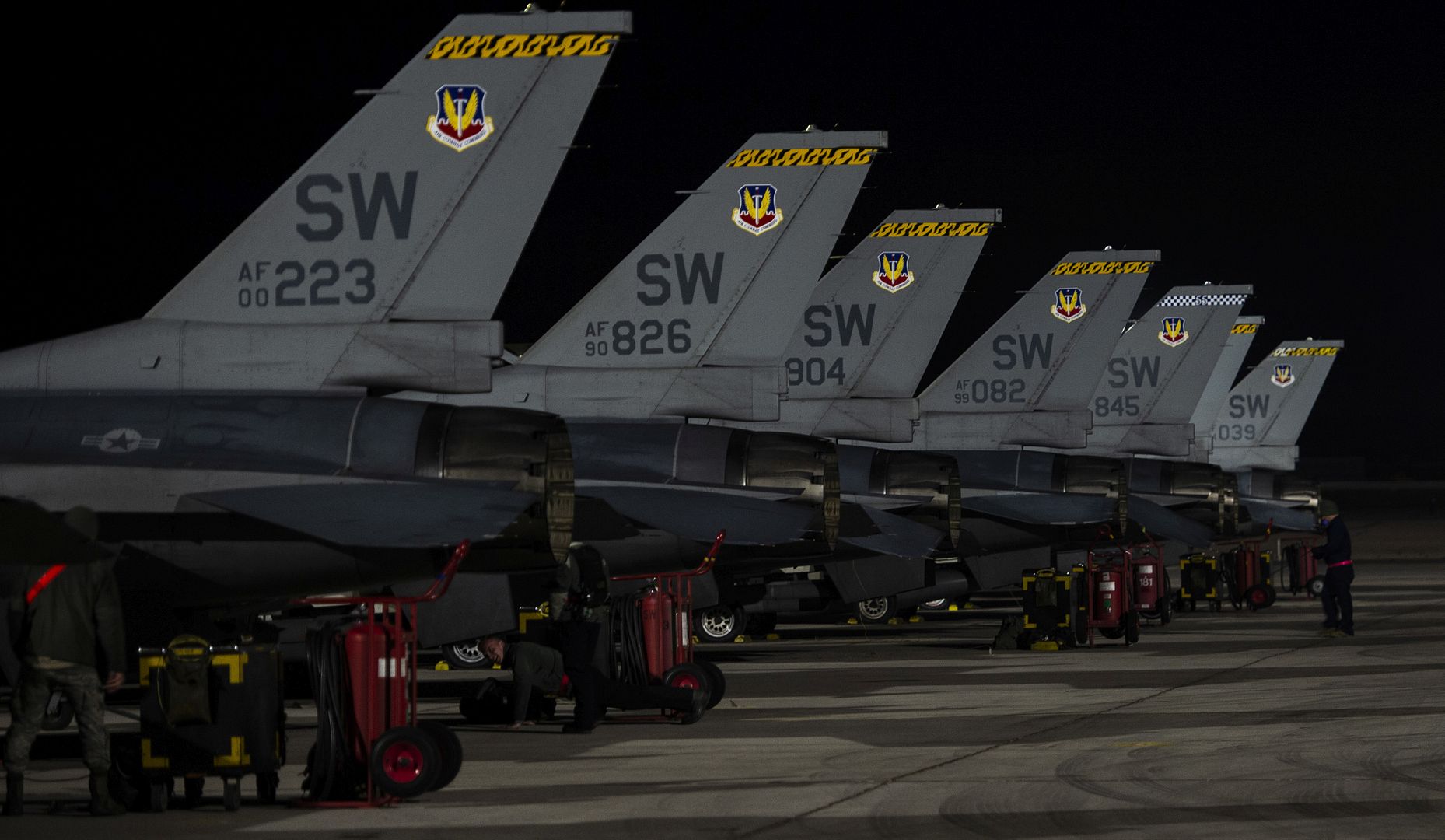
Following a review of its operations, and in light of developments in aircraft and engine technologies, Emirates is reducing its A380 orderbook from 162 to 123 aircraft. Emirates will take delivery of 14 further A380s over the next two years. As a consequence and given the lack of order backlog with other airlines, Airbus will cease deliveries of the A380 in 2021.
Emirates has also decided to continue growing with Airbus? newest generation, flexible widebody aircraft, ordering 40 A330-900 and 30 A350-900 aircraft.
?As a result of this decision we have no substantial A380 backlog and hence no basis to sustain production, despite all our sales efforts with other airlines in recent years. This leads to the end of A380 deliveries in 2021,? said Airbus Chief Executive Officer Tom Enders. ?The consequences of this decision are largely embedded in our 2018 full year results?.
?The A380 is not only an outstanding engineering and industrial achievement. Passengers all over the world love to fly on this great aircraft. Hence today?s announcement is painful for us and the A380 communities worldwide. But, keep in mind that A380s will still roam the skies for many years to come and Airbus will of course continue to fully support the A380 operators,? Tom Enders added.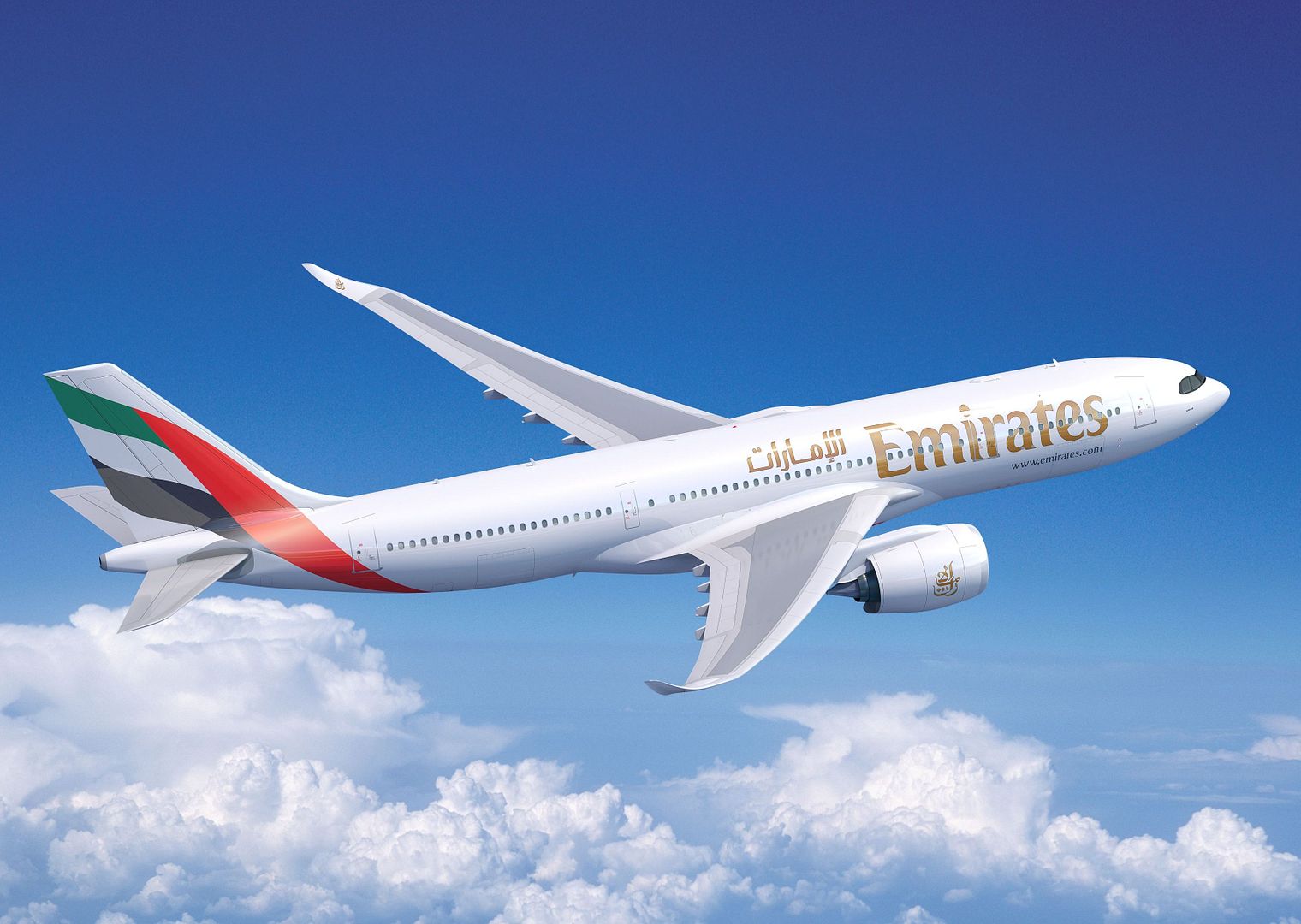
?The A380 is Emirates? flagship and has contributed to the airline?s success for more than ten years. As much as we regret the airline?s position, selecting the A330neo and A350 for its future growth is a great endorsement of our very competitive widebody aircraft family,? said Guillaume Faury, President of Airbus Commercial Aircraft and future Airbus CEO. ?Going forward, we are fully committed to deliver on the longstanding confidence Emirates is placing in Airbus.?
Airbus will start discussions with its social partners in the next few weeks regarding the 3,000 to 3,500 positions potentially impacted over the next three years. However, the ongoing A320 ramp-up and the new widebody order from Emirates Airline will offer a significant number of internal mobility opportunities.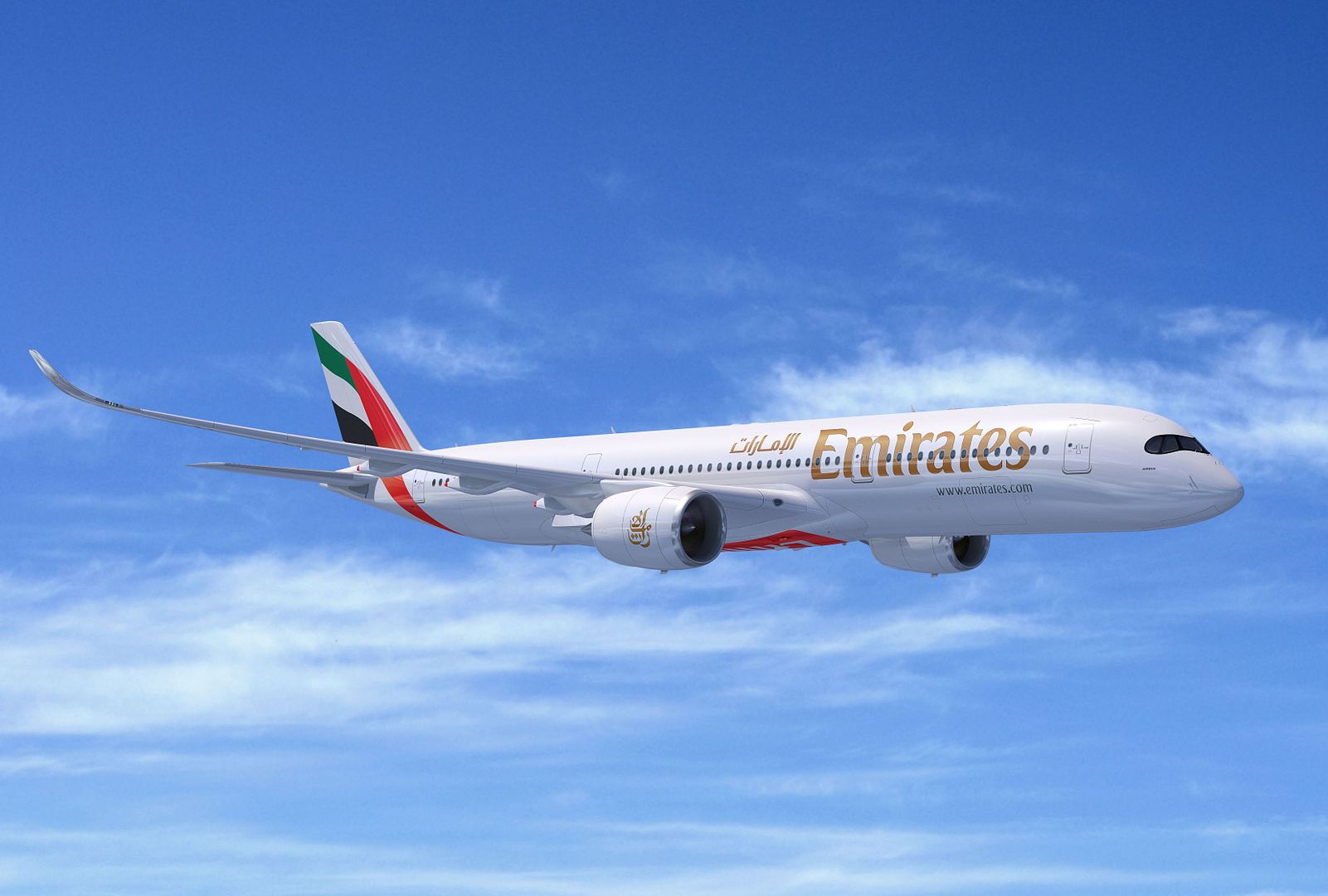
-
 Main AdminA B-2 Spirit bomber, deployed from Whiteman Air Force Base, Missouri, is staged on the flightline at Joint Base Pearl Harbor-Hickam, Hawaii, Jan. 30, 2019. Three B-2 Spirit stealth bombers and more than 200 Airmen deployed here in support of U.S. Strategic Command?s Bomber Task Force (BTF) mission. During the BTF mission 37 sorties were flown for a total of 171 hours, with eight of the missions including F-22 Raptor integration. (U.S. Air Force photo by Senior Airman Thomas Barley)
Main AdminA B-2 Spirit bomber, deployed from Whiteman Air Force Base, Missouri, is staged on the flightline at Joint Base Pearl Harbor-Hickam, Hawaii, Jan. 30, 2019. Three B-2 Spirit stealth bombers and more than 200 Airmen deployed here in support of U.S. Strategic Command?s Bomber Task Force (BTF) mission. During the BTF mission 37 sorties were flown for a total of 171 hours, with eight of the missions including F-22 Raptor integration. (U.S. Air Force photo by Senior Airman Thomas Barley)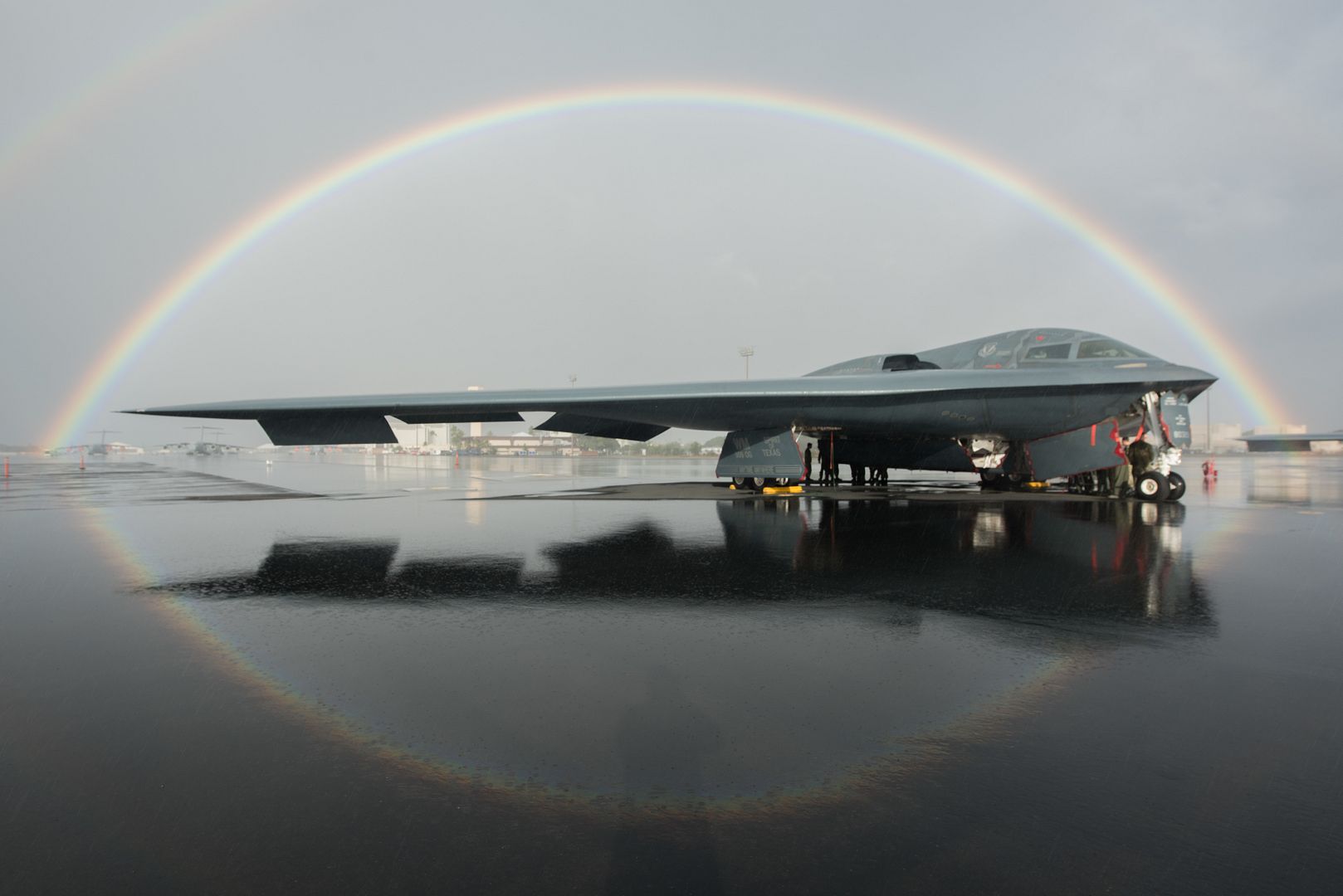
U.S. Airmen assigned to the 442d Fighter Wing from Whiteman Air Force Base, Mo., prepare A-10 Thunderbolt II aircraft for takeoff Feb. 13, 2019, at Marine Corps Air Station Kaneohe Bay, Marine Corps Base Hawaii. The unit will be participating in joint training exercises with units based in Hawaii. (U.S. Air Force photo by Senior Airman Taylor Davis)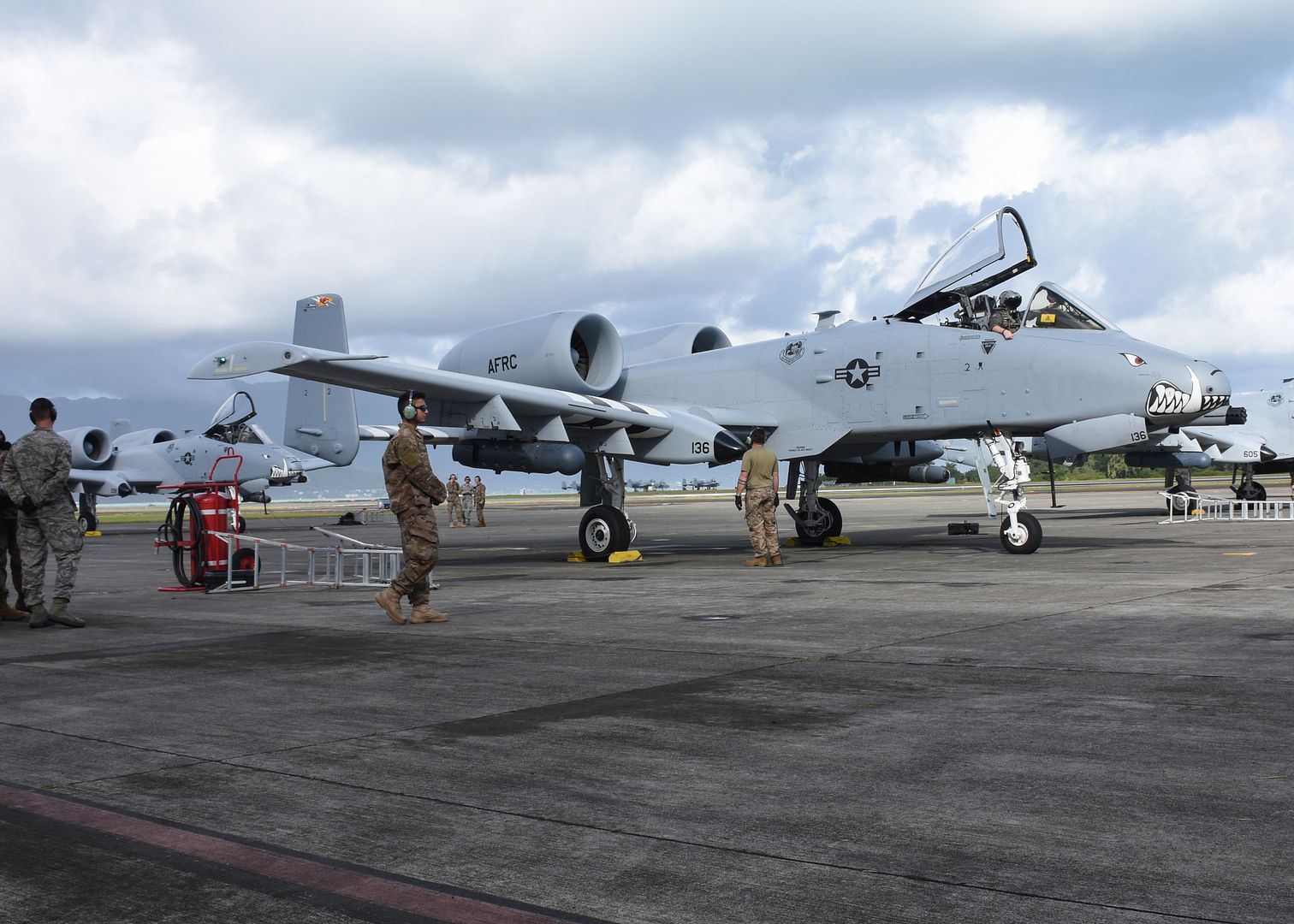
A U.S. Air Force F-15E Strike Eagle from Royal Air Force Lakenheath, England, arrives at Albacete Air Base, Spain, during the NATO Tactical Leadership Programme 19-1 flying course, Feb. 15, 2019. During TLP, U.S. Air Force F-15Es will conduct flying training with other NATO air forces including Spain, France, Greece, Italy, Germany, the United Kingdom and Belgium. (U.S. Air Force photo by Staff Sgt. Alex Fox Echols III)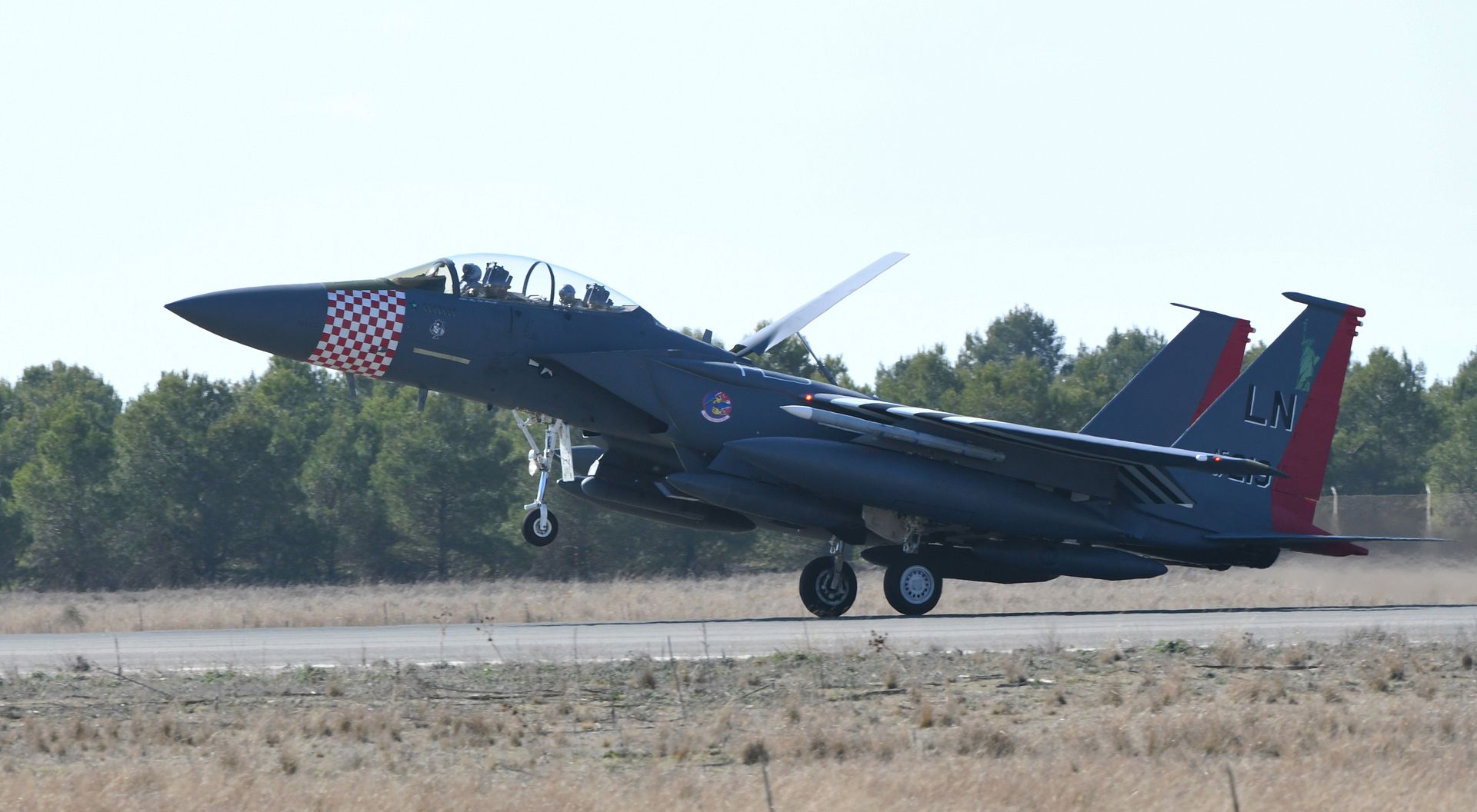
U.S. Air Force F-15E Strike Eagles from Royal Air Force Lakenheath, England, park on the flightline at Albacete Air Base, Spain during the NATO Tactical Leadership Programme 19-1 flying course, Feb. 15, 2019. The multilateral training course is designed to focus on developing tactical air expertise and leadership skills. (U.S. Air Force photo by Staff Sgt. Alex Fox Echols III)
An F-16 Fighting Falcon of the 480th Fighter Squadron, marked as the flagship of the 52nd Fighter Wing, lines up with the runway of Monte Real Air Base, Portugal, as a group of Portuguese F-16s undergo final preflight checks, Feb. 15, 2019. Airmen of the 480th EFS and their Portuguese counterparts worked, planned and flew together over the course of the three-week Flying Training Deployment. (U.S. Air Force photo by 1st Lt. Casey Rodriguez)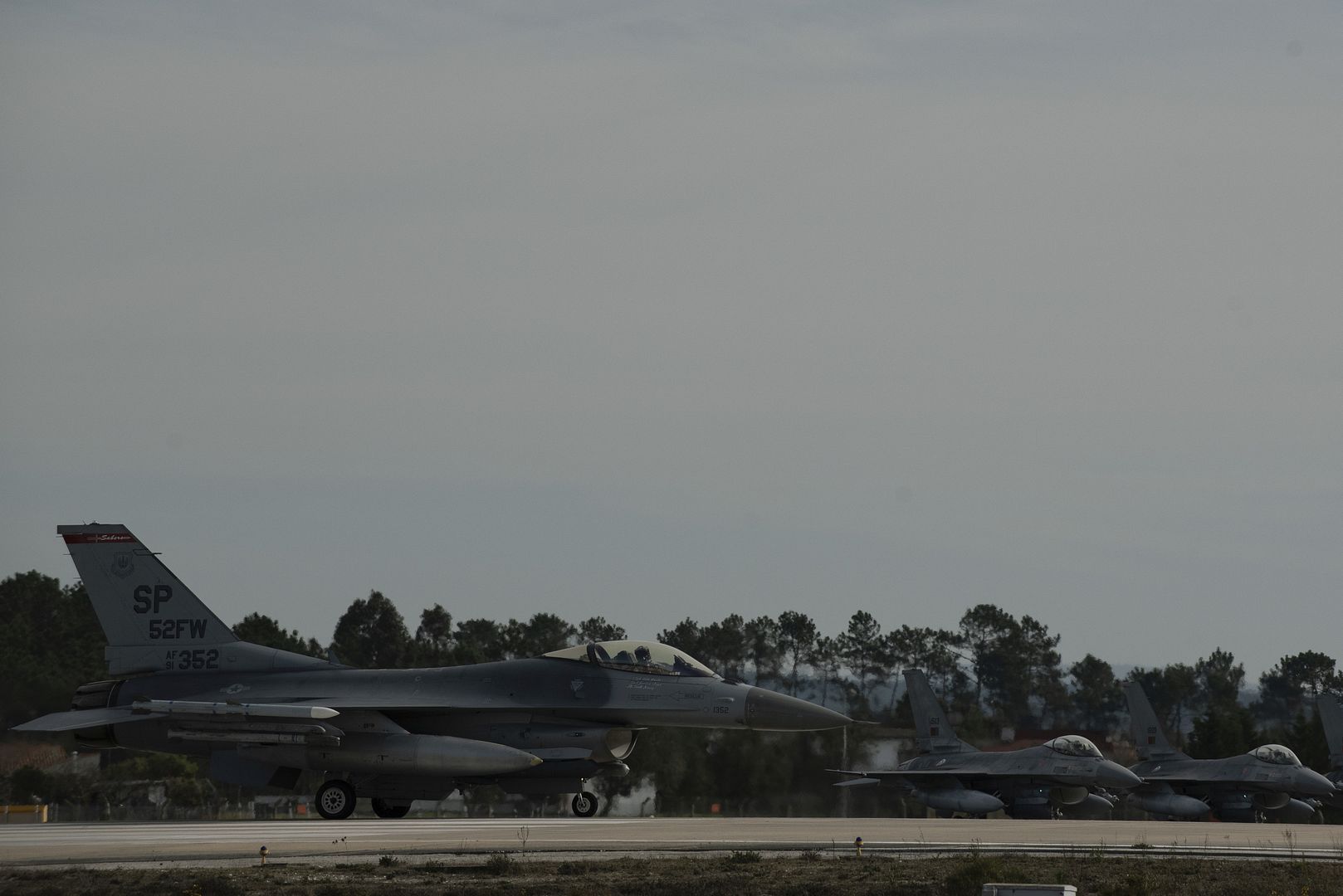
GULF OF THAILAND (Feb. 14, 2019) ? An S-70B Seahawk helicopter assigned to the Royal Thai Navy landing platform dock ship HTMS Angthong (LPD 791) lands on the flight deck of the amphibious transport dock ship USS Green Bay (LPD 20) during cross deck flight operations. Green Bay, part of the Wasp Amphibious Ready Group, with embarked 31st Marine Expeditionary Unit (MEU), is in Thailand to participate in Exercise Cobra Gold 2019. Cobra Gold is a multinational exercise co-sponsored by Thailand and the United States that is designed to advance regional security and effective response to crisis contingencies through a robust multinational force to address common goals and security commitments in the Indo-Pacific region. (U.S. Navy photo by Mass Communication Specialist 2nd Class Anaid Banuelos Rodriguez)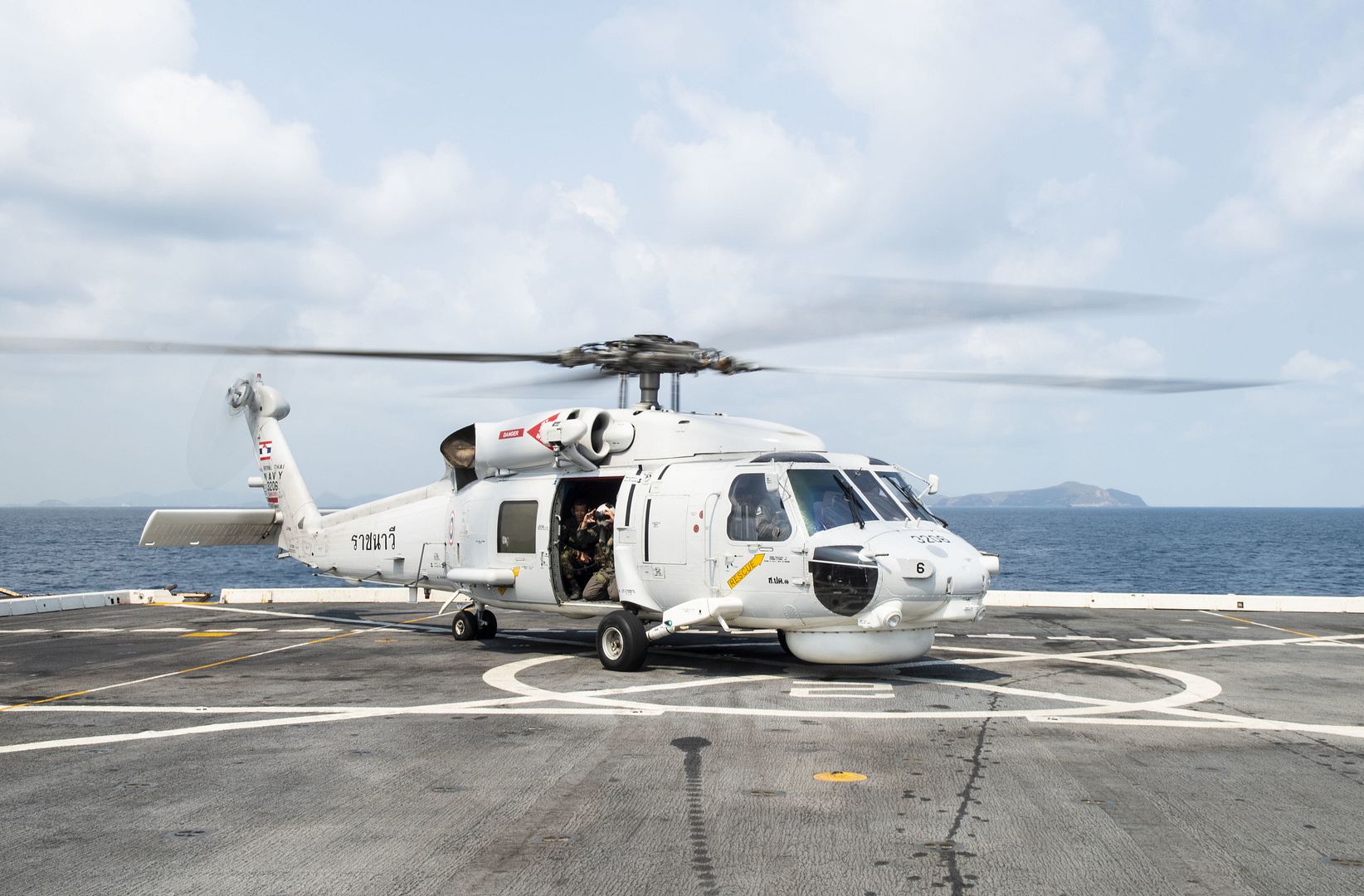
Final assembly of the first A350-900 for Japan Airlines (JAL) has begun and is taking shape at the Final Assembly Line (FAL) in Toulouse, France. The wing-fuselage junction and the installation of the vertical and horizontal tailplane have been completed.
After this station, the first JAL A350 XWB will be in the next assembly station for final structural completion ? such as the installation of winglets ? and ground testing of mechanical, electrical and avionics systems.
JAL placed an order for 31 A350 XWBs (18 A350-900s and 13 A350-1000s) in 2013. It was JAL?s first ever order for Airbus aircraft.
The carrier?s first A350-900 is scheduled for delivery in the middle of the year. JAL?s A350 fleet will enter service on major domestic routes starting with its Haneda-Fukuoka route from September and later fly on international routes, replacing older-generation widebody types.
The A350 XWB is an all-new family of mid-size widebody long-haul airliners shaping the future of air travel. It is the world?s most modern widebody family and the long-range leader, ideally positioned in the 300-400 seat category. The A350-900 and the A350-1000, and derivatives, are the longest range airliners in operation, with a range capability of up to 9,700nm. The A350 XWB features the latest aerodynamic design, carbon fibre fuselage and wings, plus new fuel-efficient Rolls-Royce engines. Together, these latest technologies translate into unrivalled levels of operational efficiency, with a 25% reduction in fuel burn and emissions.
The A350 XWB?s Airspace by Airbus cabin is the quietest of any twin-aisle and offers passengers and crews the most modern in-flight product for the most comfortable flying experience.
At the end of January 2019, Airbus has recorded a total of 894 firm orders for the A350 XWB from 48 customers worldwide, making it one of the most successful widebody aircraft ever.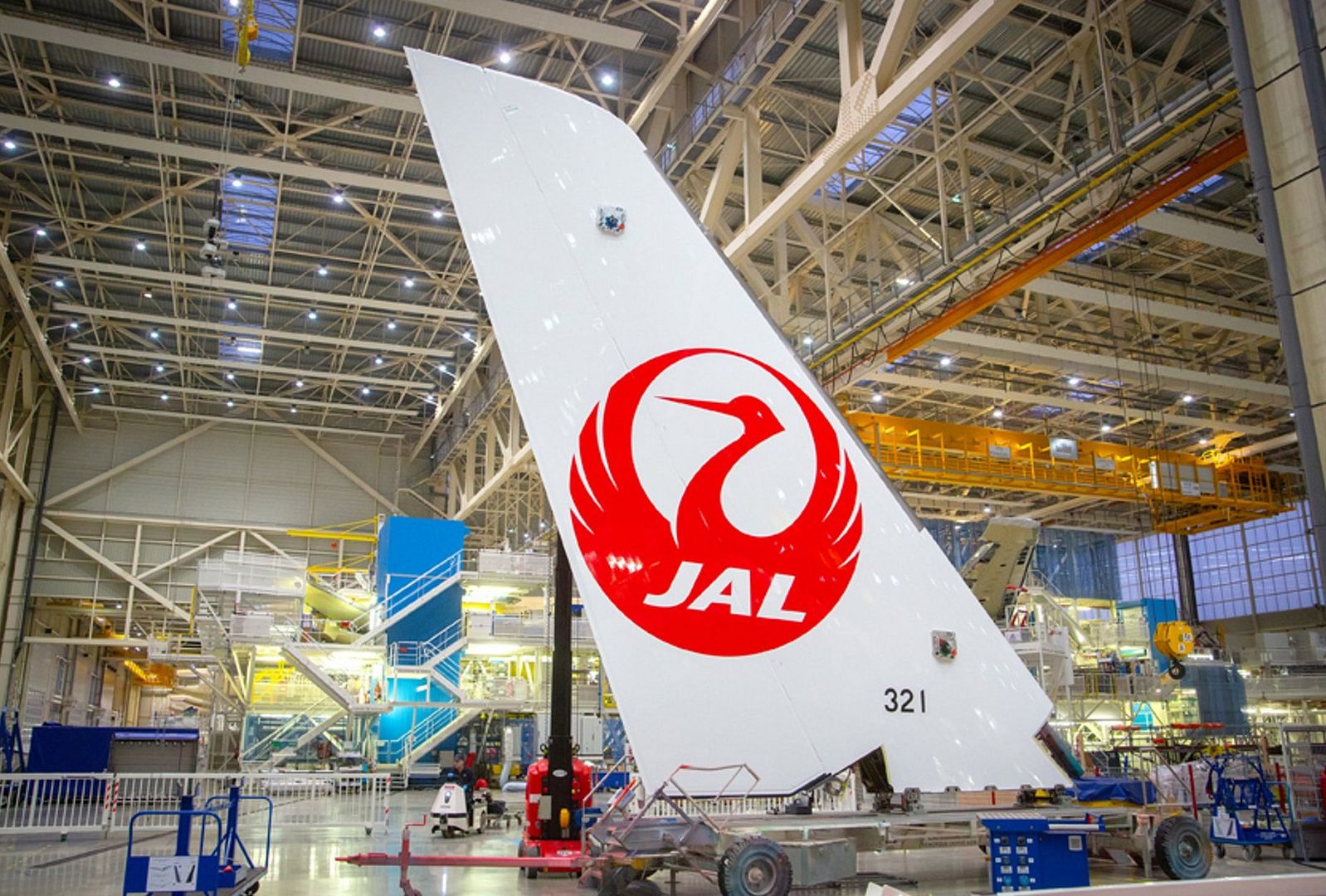
Rome 15/02/2019 18:15
The first two new Leonardo?s M-346 aircrafts, part of the International Flight Training School (IFTS) project, joined the other 18 Italian Air Force?s M-346s at 61st Wing?s base in Galatina (Lecce), in Southern Italy. The new airplanes will be used to meet the growing demand for training services at the IFTS, established under the Leonardo-Italian Air Force Agreement signed in July 2018 and aimed at strengthening the training services delivered by the Air Force.
The Leonardo-Italian Air Force IFTS Agreement was inspired by the common decision of these two preeminent national entities to foster synergies to the benefit of the Country: combining the capabilities of the largest Italian industrial player in the aerospace, defence and security sectors with the Air Force?s expertise in the military flight training domain.
The Galatina Air Base will play a key role leveraging on its long and well-established operational expertise. The reinforcement of the 61st Wing to achieve the highest operational capability is core to the establishment of the IFTS. This goal will be achieved starting from 2020 when the brand new integrated training system arrives in Galatina. This system is based on the M-345 HET ? High Efficiency Trainer aircraft (designated T-345 by the Air Force) which will progressively replace the T-339A (used for the Phase II of training) and the T-339C (used for the Phase III).
The IFTS will have Phase IV - Lead In to Fighter Training ? LIFT - at the core of its activities before pilots move to fighters, and will enable it to also meet the demand for pilot training from foreign air forces while foreseeing a possible further expansion with another base in Italy.
The Italian Air Force?s modular syllabus has already proven its effectiveness to train students to the requirements of many air forces. Many have already been trained at the 61st Wing Air Base to transition to 4th and 5th generation fighters.
Operational training, carried out by the Italian Air Force with the T-346A, prepares pilots to transition to the latest-generation combat aircraft including the Eurofighter and the F-35. The Galatina Air Force Base is also equipped with LVC (Live, Virtual and Constructive Simulation) technology including the advanced M-346 simulator, enabling trainees on the ground to interact with pilots in the air, flying real aircraft, during the same training missions.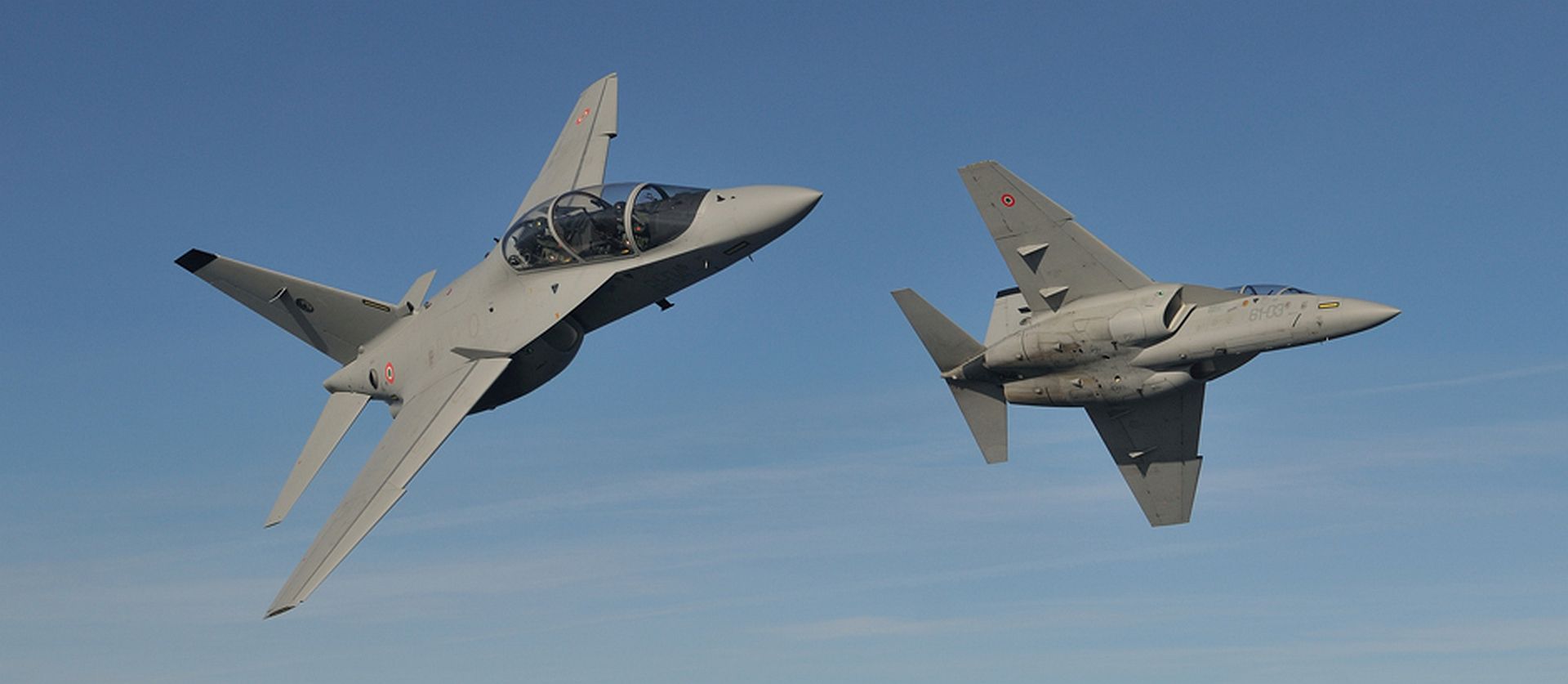
A pair of E-3D Sentry AEW.Mk1 aircraft deployed from RAF Waddington to Nellis Air Force Base to participate in Exercise #RedFlag. The Sentry monitors airspace to provide threat detection of adversary aircraft and situational awareness on friendly assets and has played a vital role on the exercise.
Photos M.O.D.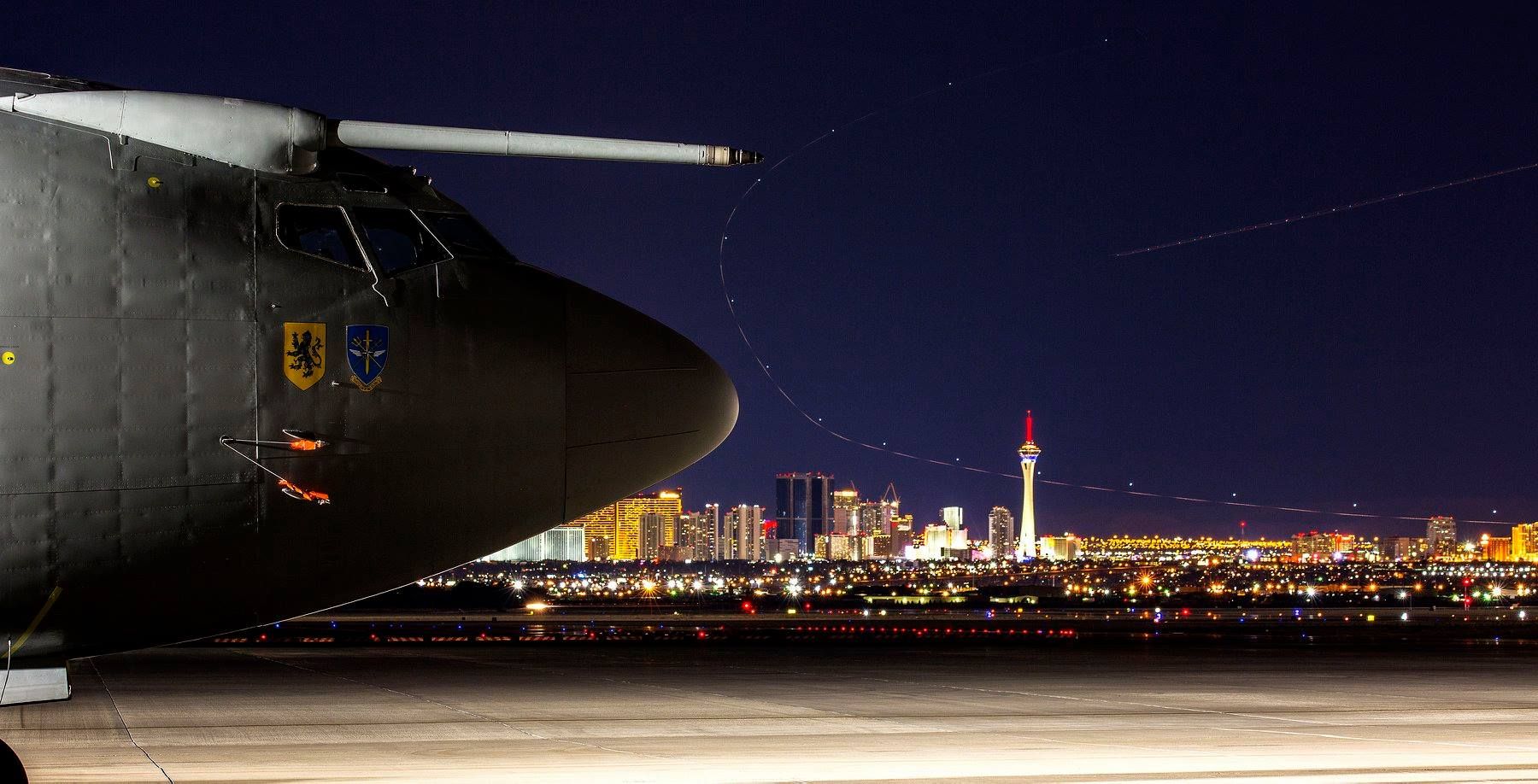
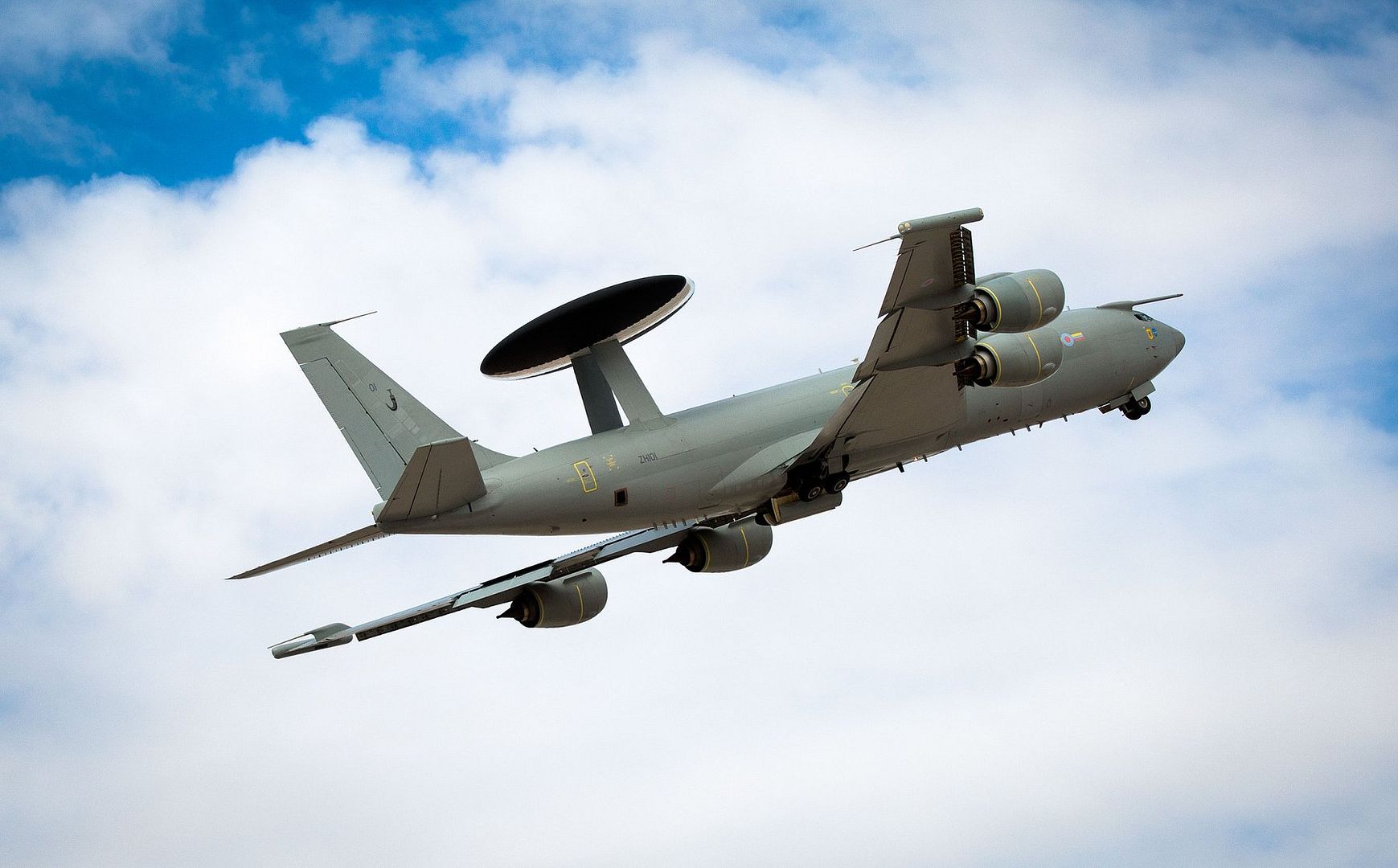
-
 Main AdminA C-17 Globemaster III delivers humanitarian aid from Homestead Air Reserve Base, FL to Cucuta, Colombia February 16, 2019. This mission was planned at the request of the U.S. Secretary of State, in close coordination with USAID and with the approval of the government of Colombia. The role of the U.S. military during this peaceful mission is to transport urgently needed aid to Colombia for eventual distribution by relief organizations on the ground for Venezuelans impacted by the rapidly deteriorating crisis in their country. This humanitarian mission underscores the United States? firm commitment and readiness to respond to the man-made political, economic, and humanitarian crisis in Venezuela. (U.S. Air Force Photo by Tech. Sgt. Gregory Brook)
Main AdminA C-17 Globemaster III delivers humanitarian aid from Homestead Air Reserve Base, FL to Cucuta, Colombia February 16, 2019. This mission was planned at the request of the U.S. Secretary of State, in close coordination with USAID and with the approval of the government of Colombia. The role of the U.S. military during this peaceful mission is to transport urgently needed aid to Colombia for eventual distribution by relief organizations on the ground for Venezuelans impacted by the rapidly deteriorating crisis in their country. This humanitarian mission underscores the United States? firm commitment and readiness to respond to the man-made political, economic, and humanitarian crisis in Venezuela. (U.S. Air Force Photo by Tech. Sgt. Gregory Brook)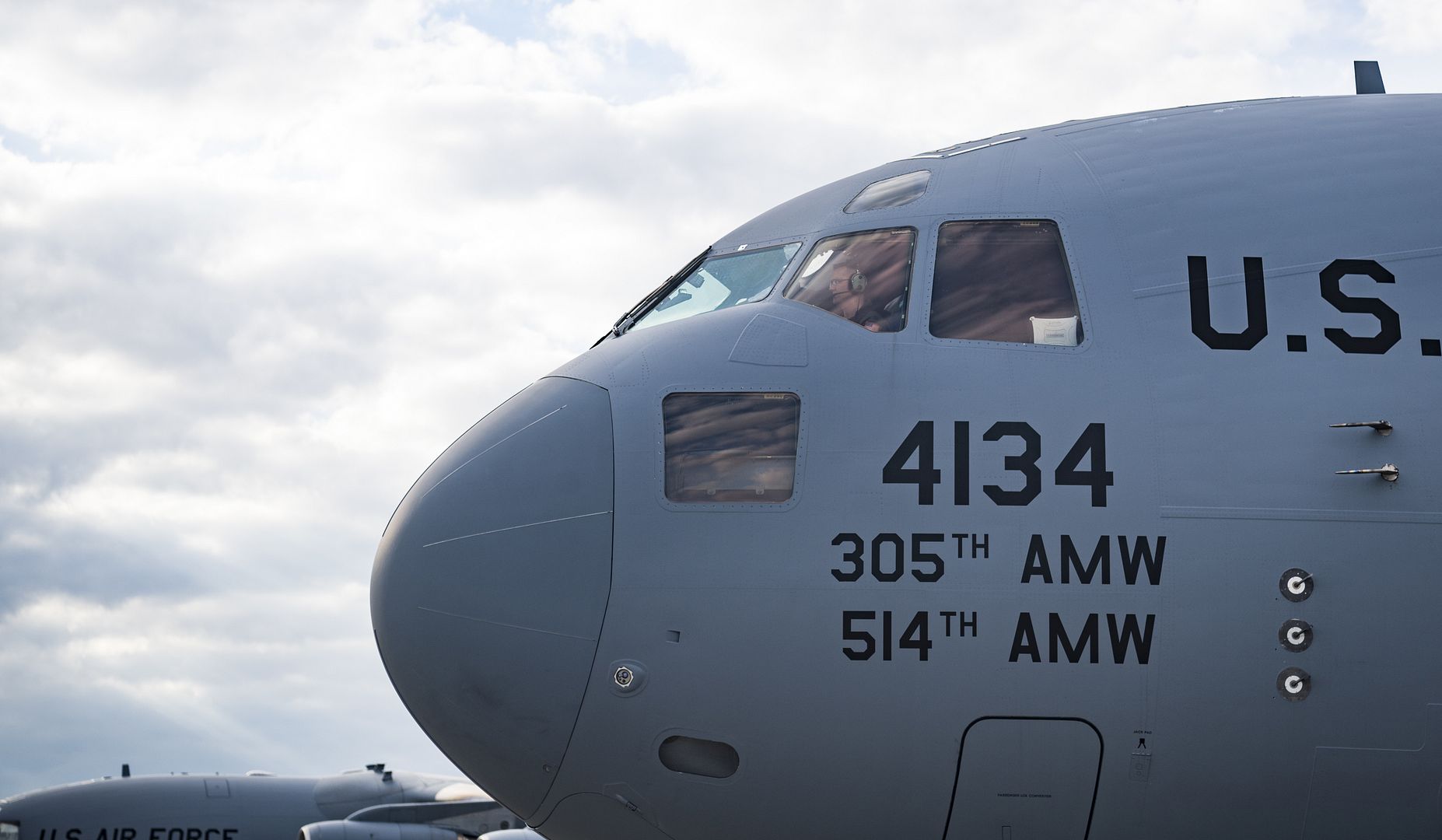
JOINT BASE PEARL HARBOR-HICKAM, HI, UNITED STATES
02.17.2019
A B-2 Spirit bomber, deployed from Whiteman Air Force Base, Missouri, is staged on the flightline at Joint Base Pearl Harbor-Hickam, Hawaii, Jan. 25, 2019. Three B-2 Spirit stealth bombers and more than 200 Airmen deployed here in support of U.S. Strategic Command?s Bomber Task Force (BTF) mission. During the BTF mission 37 sorties were flown for a total of 171 hours, with eight of the missions including F-22 Raptor integration. (U.S. Air Force photo by Senior Airman Thomas Barley)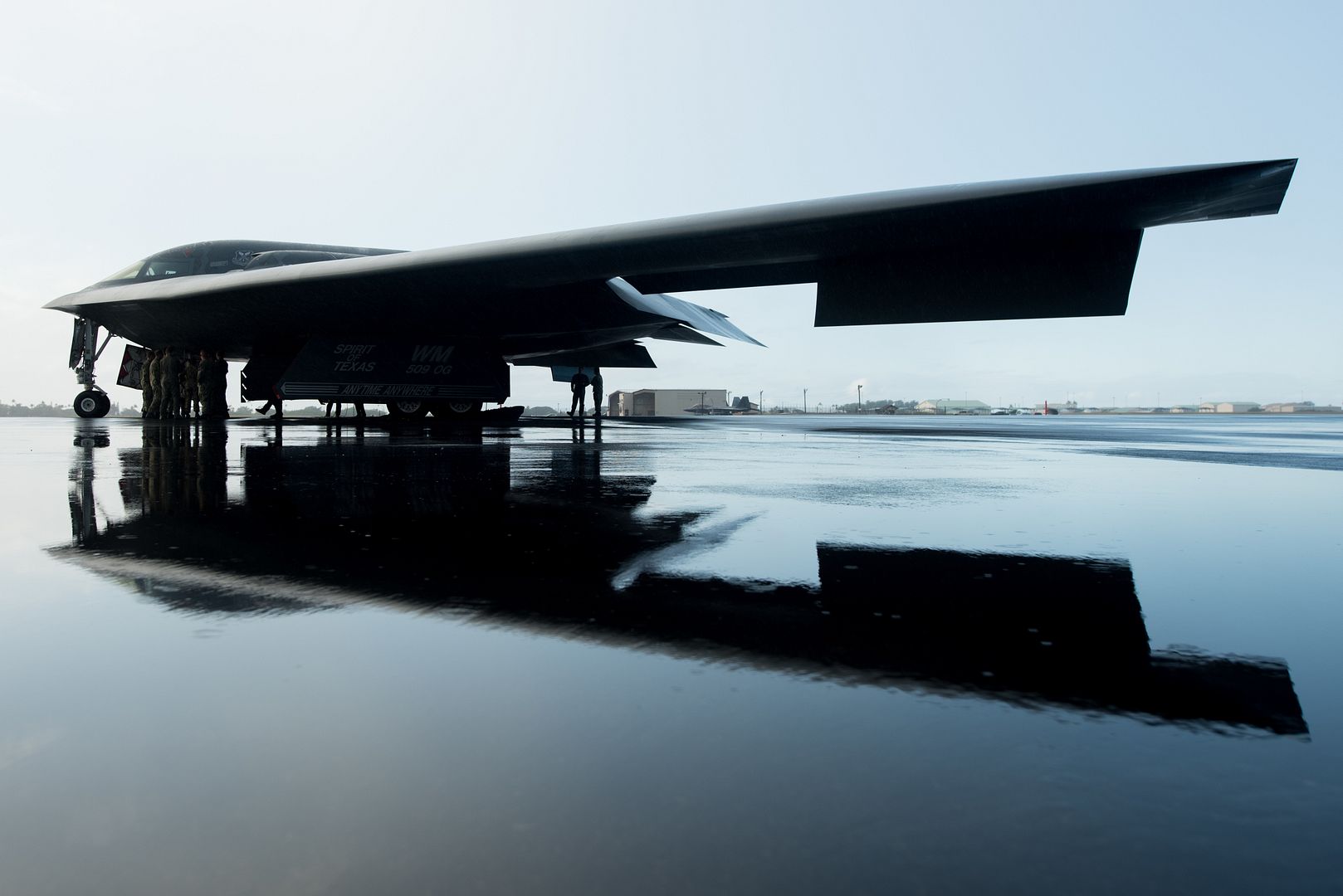
ATLANTIC OCEAN (Feb. 17, 2019) Two F/A-18E Super Hornets assigned to the Carrier Air Wing 7 taxi on the flight deck of the Nimitz-class aircraft carrier USS Abraham Lincoln (CVN 72). Abraham Lincoln is underway conducting composite training unit exercise (COMPTUEX) with Carrier Strike Group (CSG) 12. The components of CSG 12 embody a team-of-teams concept, combining advanced surface, air and systems assets to create and sustain operational capability. This enables them to prepare for and conduct global operations, have effective and lasting command and control, and demonstrate dedication and commitment to becoming the strongest warfighting force for the Navy and the nation. (U.S. Navy photo by Mass Communication Specialist 3rd Class Garrett LaBarge/Released)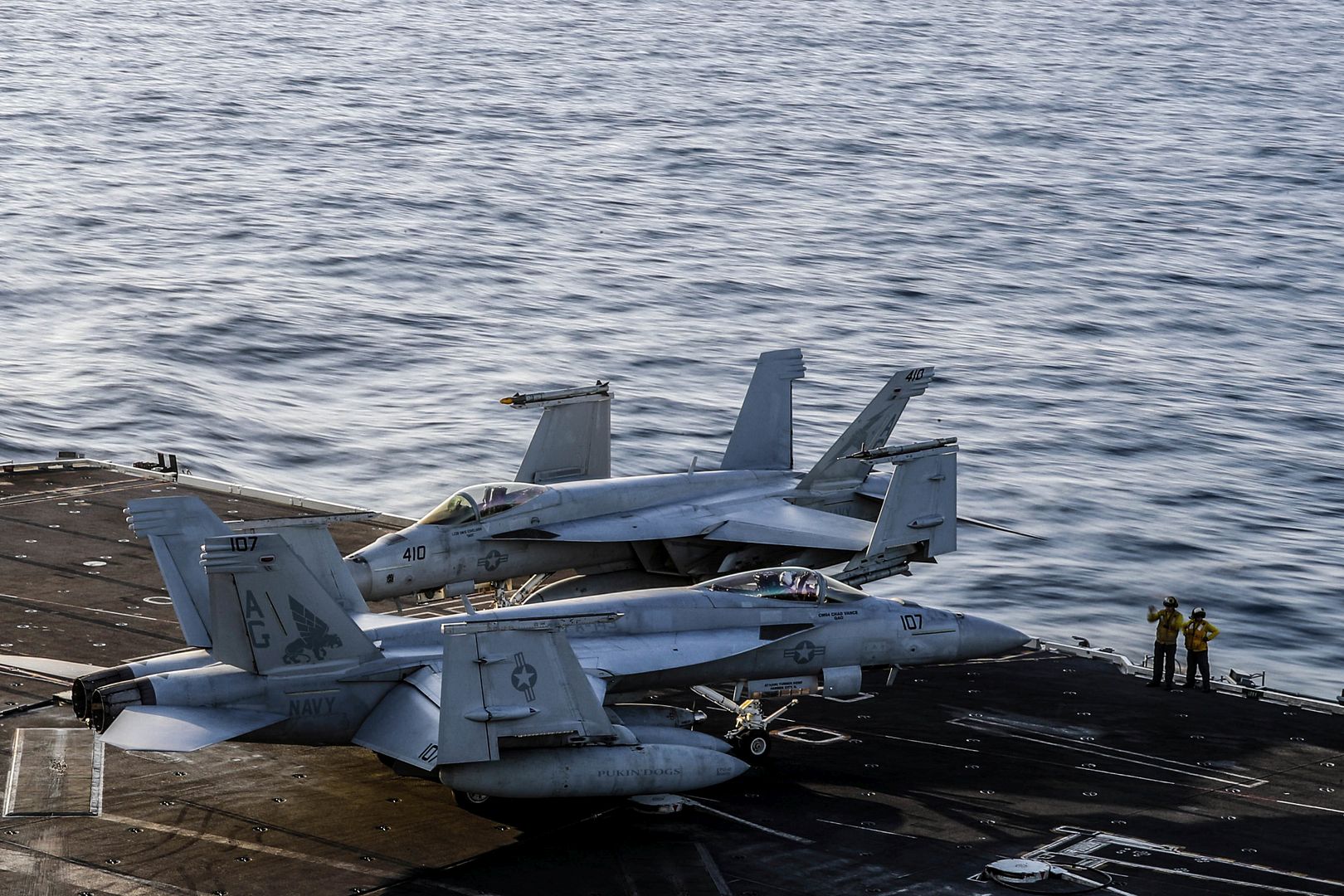
A U.S. Air Force F-16 Fighting Falcon assigned to the 18th Aggressor Squadron (AGRS) lifts off the ground at Eielson Air Force Base, Alaska, Feb. 15, 2019. Pilots from the 18th AGRS traveled to Andersen Air Force Base, Guam, in order to train alongside approximately 2,000 U.S. Airmen, Marines and Sailors for COPE North 2019. (U.S. Air Force photo by Airman Aaron Guerrisky)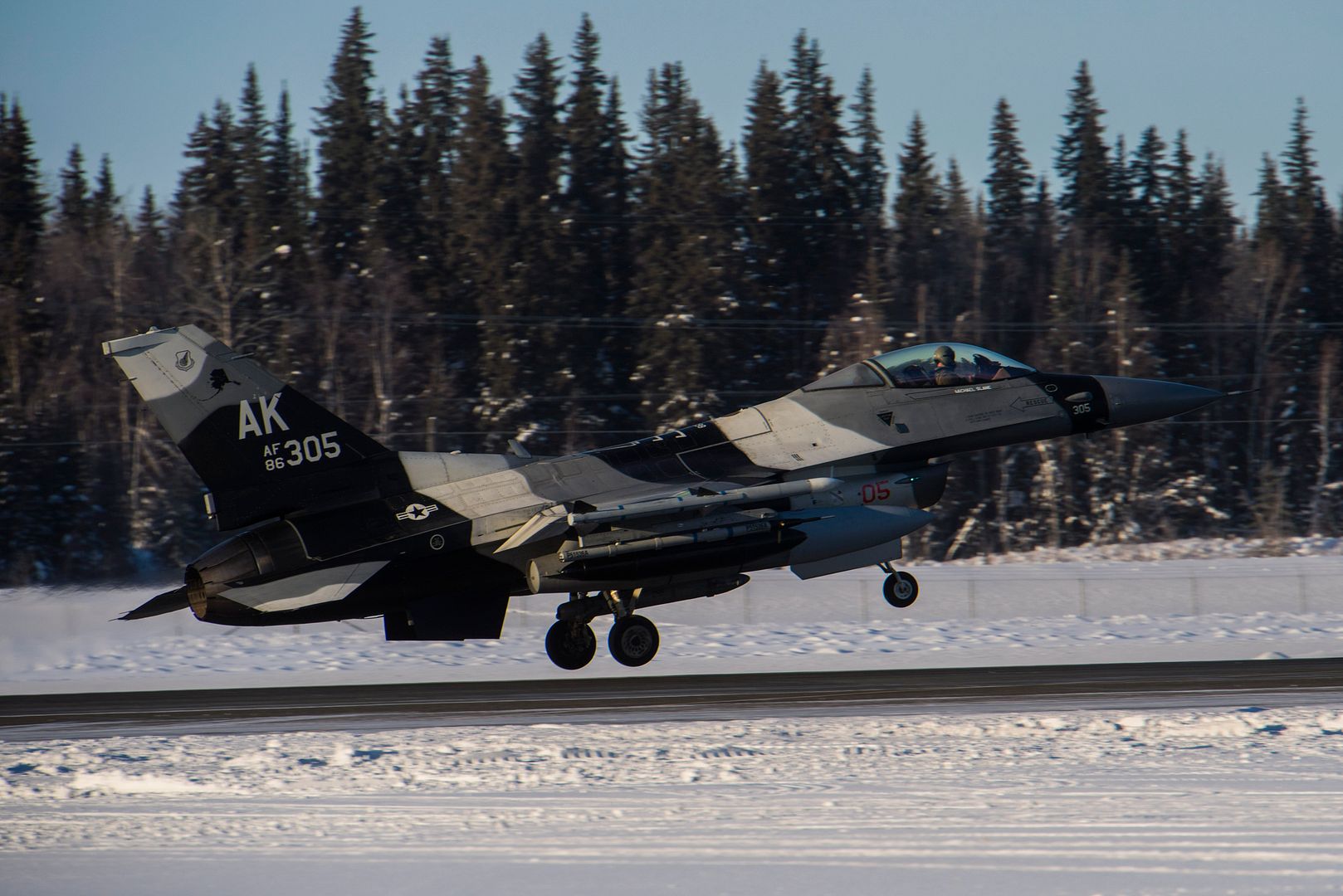
LUKE AIR FORCE BASE, Ariz. --
The former 56th Fighter Wing flagship F-16 Fighting Falcon, tail number 89-2056, got a paint job and it?s taking its new look to the skies above Luke Air Force Base, Ariz.
Per Air Force Instruction, only one aircraft is allowed to carry the lead 56th FW tail, and that title belongs to an F-35A Lightning II, tail number 12-5056. However, an exception was made using heritage approval guidance.
?The 19th AF approved the designation of a ?heritage tail? to allow dual lead aircraft,? said Tech. Sgt. Jason Stachowski, 56th Equipment Maintenance Squadron corrosion control non-commissioned officer in charge.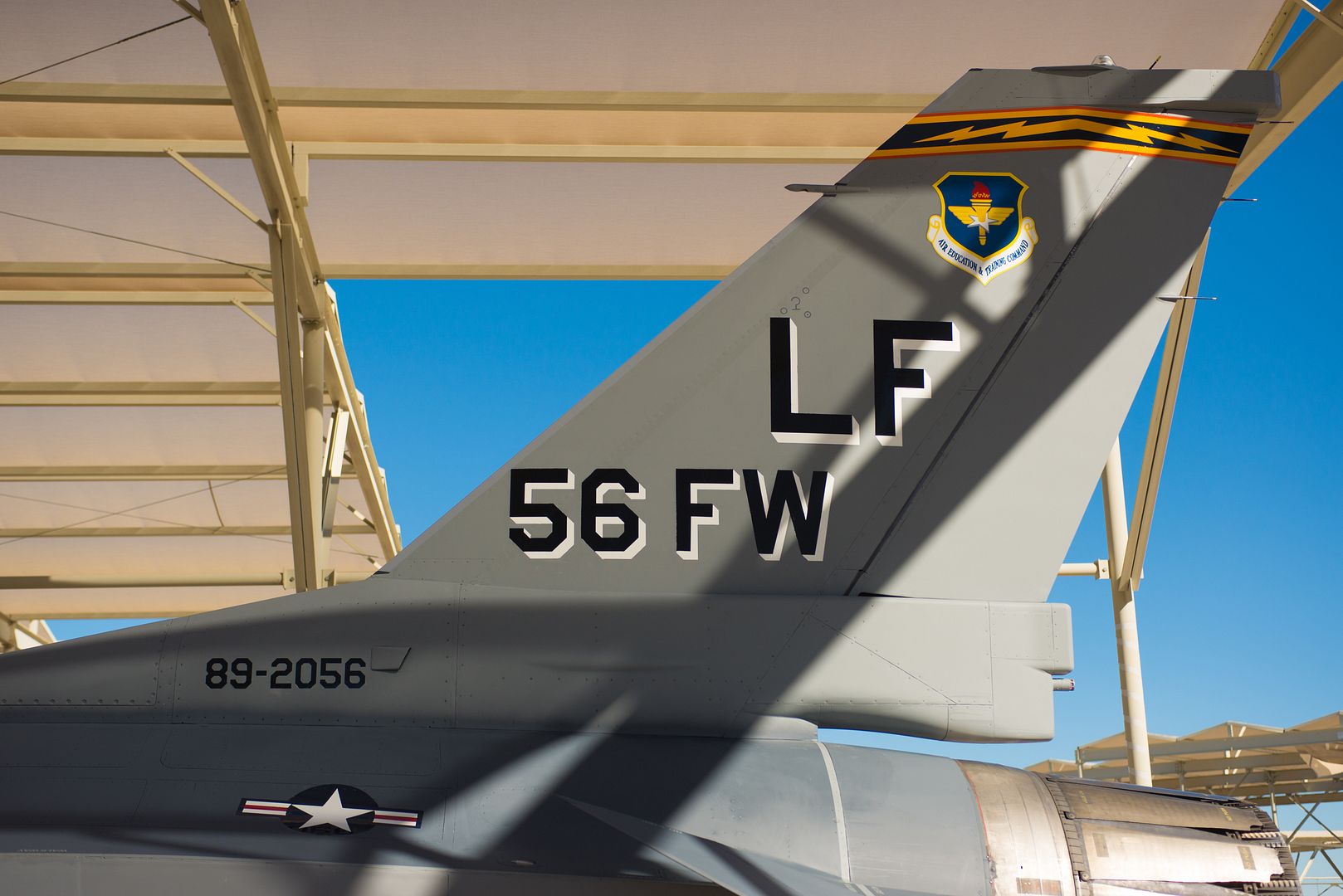
?Aircraft 89-2056 served as the wing?s flagship from 1993 until 2015, when the F-35 was designated as the flagship,? said Chief Master Sgt. Jonathan Veal, 310th Aircraft Maintenance Unit superintendent. ?With its rich history as the commander?s aircraft and flown by several commanders, who went on to be senior leaders across the Air Force, it was the obvious choice to designate as the wing heritage flagship.?
The current paint scheme of most F-16s is subdued. However, the new look takes the jet back to its 1978 roots when the F-16 was first in service.
?We added the colored thunderbolt tail flash on the top of the aircraft, a black and white shadowed tail flash, color patches of all squadrons operating at Luke, as well as several other colored aircraft markings to make it stand-out,? Stachowski said.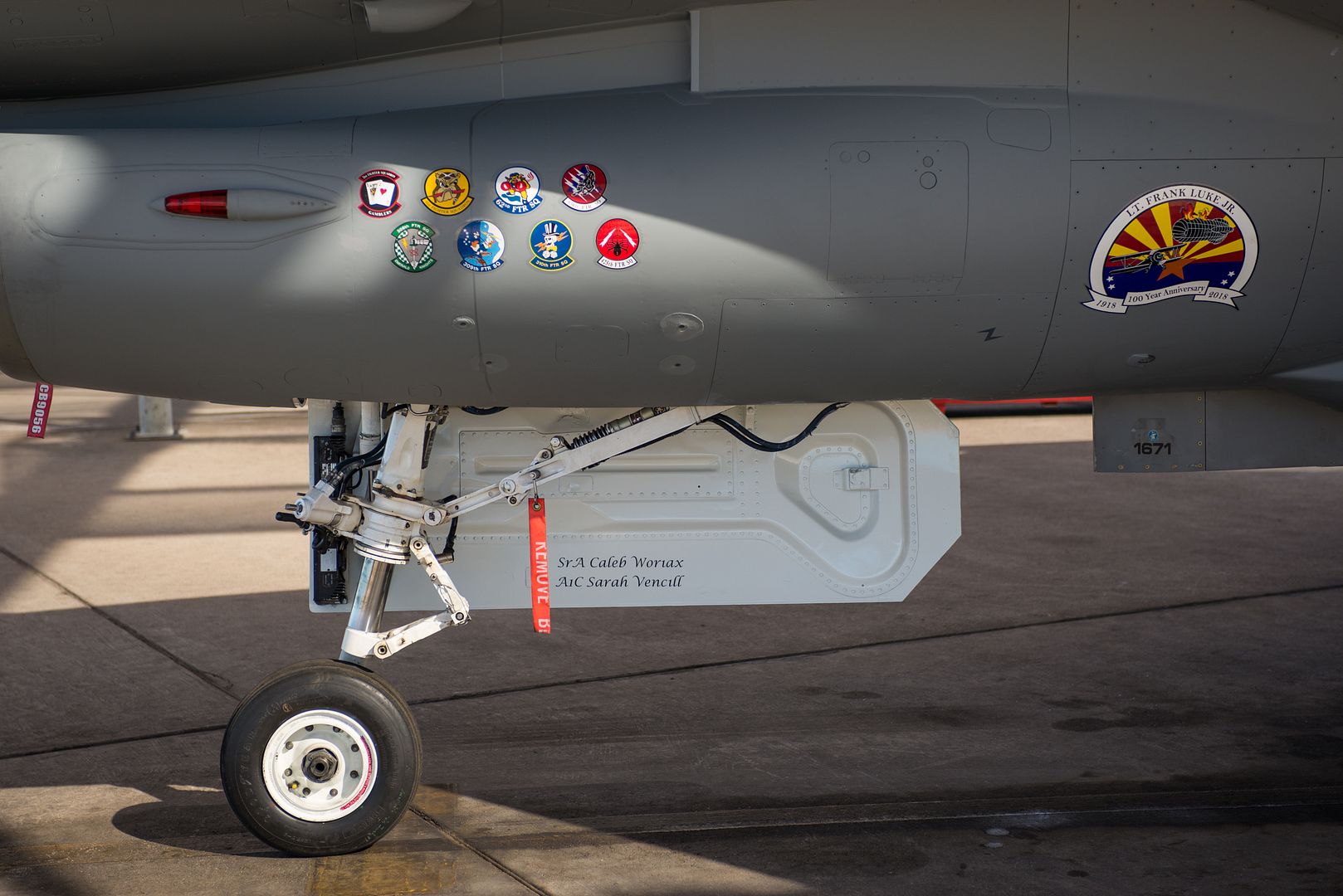
The paint job took three days to complete, but the project was in the works for months and involved a team of 16 Airmen taking the process from idea to fruition.
?When the F-35s came to Luke a lot of attention was diverted away from the F-16. We wanted to show the 56th Fighter Wing and the community that no matter which aircraft you work on or fly in or what your career field is, we?re all here to train the world?s greatest fighter pilots and combat ready Airmen,? Stachowski said.
Veal also talked about the Airmen?s sense of pride when they understand the heritage and history of the Air Force, wings, squadrons and their units.
?We owe it to our predecessors to carry the torch and preserve the unit?s success while creating our own,? Veal added.
With its new paint scheme, the heritage aircraft is well suited to fulfill the numerous requests for fly-overs, static displays and educational tours that highlight the hard-work and dedication of the Airmen across the 56th FW.
?We?re paying respect to the past with the F-16 and looking to the future with the F-35?, Stachowski concluded.
(U.S. Air Force photo's by Senior Airman Caleb Worpel)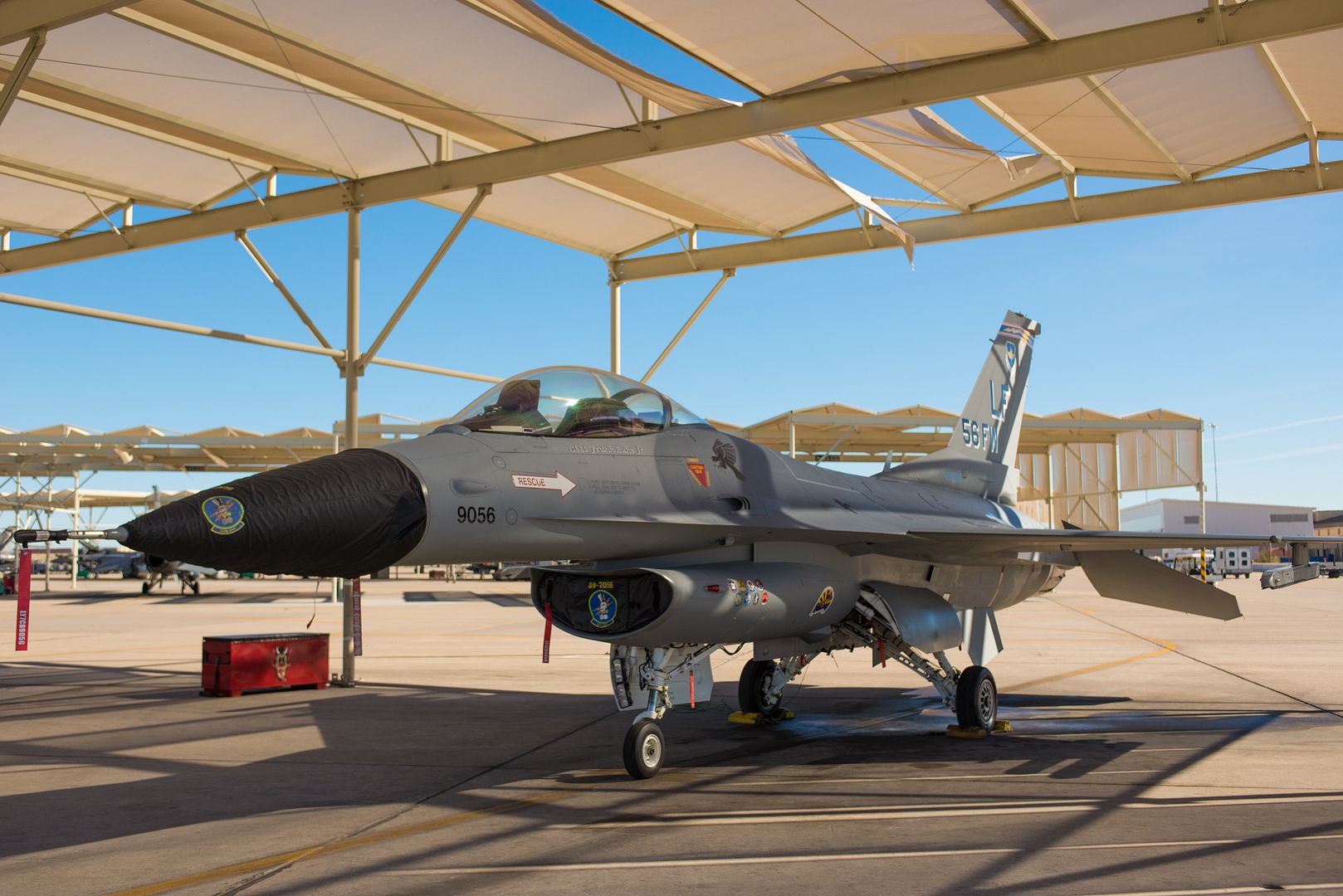
ARLINGTON, Va., February 18, 2019 ? Boeing [NYSE: BA] and the U.S. Navy have received U.S. Department of Defense approval to offer the EA-18G Growler to Finland. Previously only Australia had been authorized to purchase the airborne electronic attack (AEA) aircraft.
Boeing and the Navy have offered the Growler and F/A-18 Super Hornet in a response to query issued by the Finnish Ministry of Defense as part of their HX fighter program procurement.
?All strike fighter aircraft rely on Growler escort to increase survivability during high-threat missions,? said Dan Gillian, Boeing vice president, F/A-18 and EA-18G programs. ?The combination of the Super Hornet Block III and Growler would provide Finland with superior technological capability particularly suited to Finland?s HX mission requirements.?
An F/A-18 variant, the Growler is the world?s most advanced AEA platform and the only one in production today. It?s capable of disrupting, deceiving or denying a broad range of military electronic systems including radar and communication systems.
In addition to the U.S. Navy, the Growler is flown by the Royal Australian Air Force.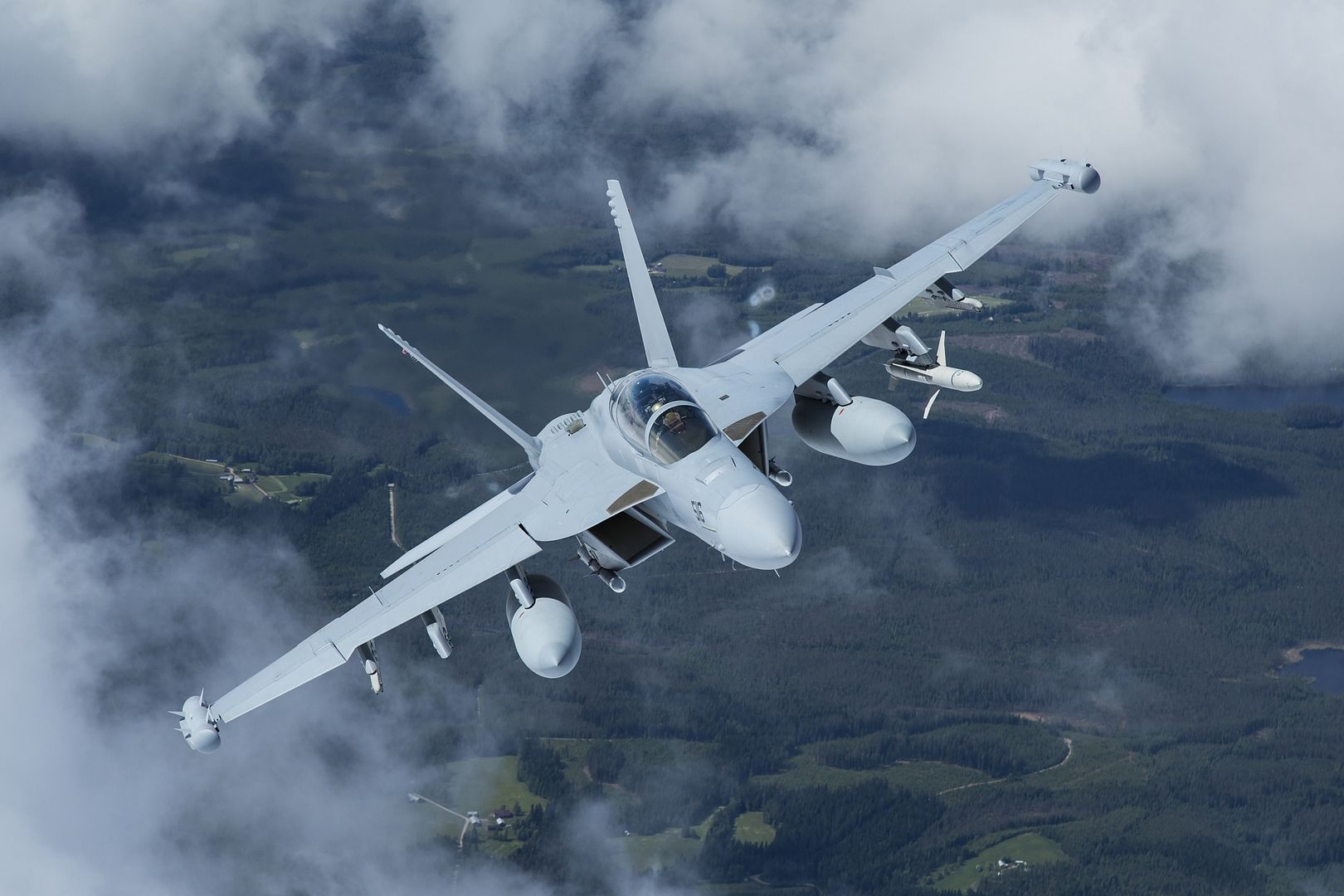
News Article / February 18, 2019
On February 17, 2019, the Royal Canadian Air Force (RCAF) marked the arrival of the first two interim fighter aircraft, an important milestone and investment in sustaining our current CF-18 Hornet fleet.
Through Canada?s defence policy, Strong, Secure Engaged, the Government of Canada is ensuring we have the mission ready aircraft we need to meet our domestic and international obligations in advance of the arrival of jets to replace the entire CF-18 fleet.
?The interim fighter fleet is key to ensuring the Royal Canadian Air Force can continue to fulfill their missions and ensure the safety of Canadians and Canada,? said Defence Minister Harjit S. Sajjan. ?We are familiar with these aircraft and are confident that they can provide the additional support our current fleet requires. They were flown in yesterday by the Royal Australian Air Force and I look forward to seeing them fly again soon in our Canadian colours.?
Canada is procuring 18 fighter aircraft and parts from the Government of Australia to rapidly increase availability of the CF-18 fleet in order to ensure the RCAF can meet all obligations simultaneously.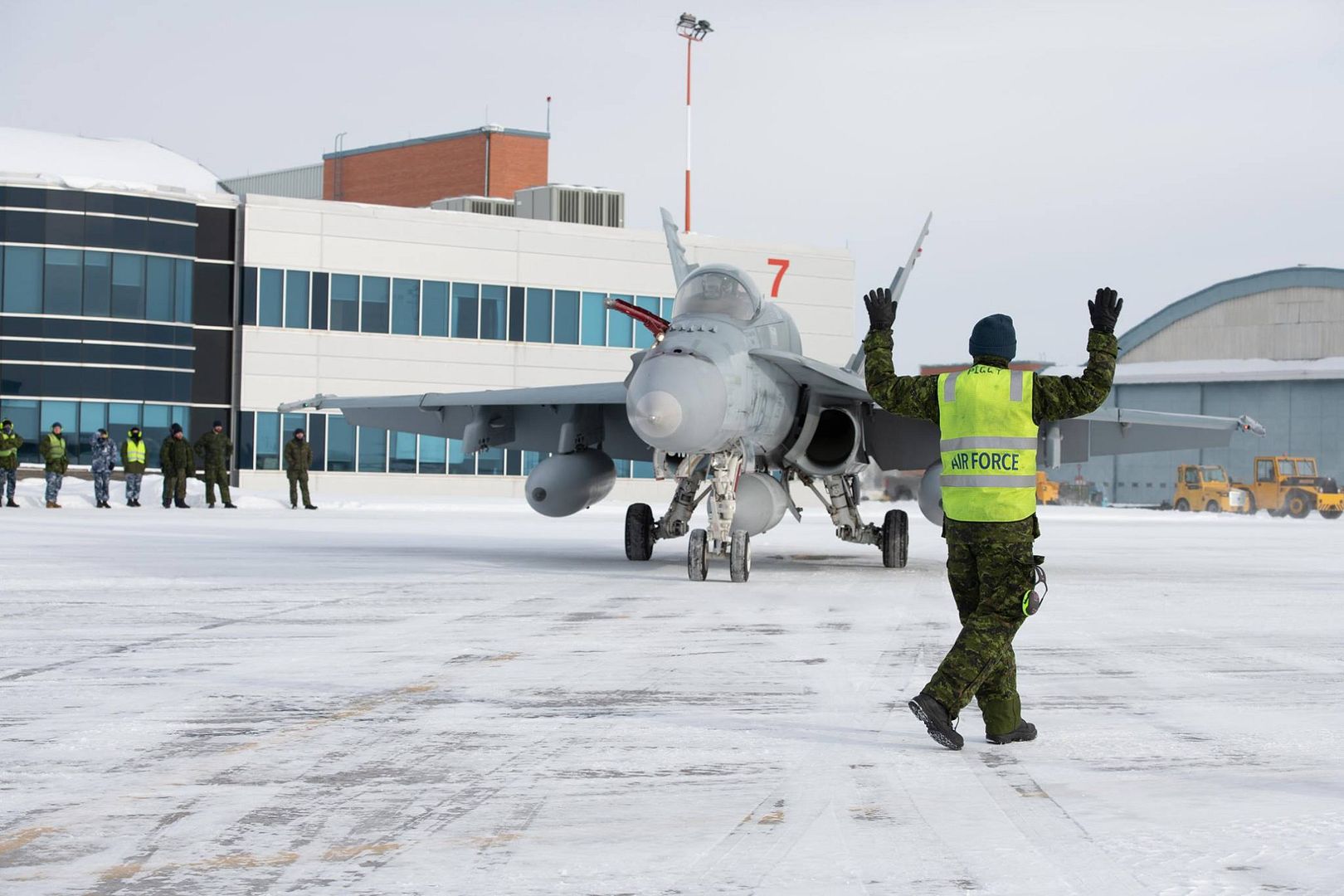
These aircraft are the same type as Canada?s current CF-18 fleet and can be integrated quickly into our fleet. Modifications and technical work will begin immediately so they can be brought to a similar configuration to Canada?s CF-18 aircraft. The work will continue to be done by Canadian companies.
Deliveries will continue at regular intervals for the next three years, and aircraft will be integrated into the CF-18 fleet as modifications are completed. The final aircraft are expected to arrive by the end of 2021.
The first two aircraft are the F/A-18A model, which means they are single-seat aircraft. They were flown to Cold Lake, Alberta, from Nellis, Nevada, where they were participating in Exercise Red Flag, and will be employed at 3 Wing Bagotville and 4 Wing Cold Lake.
Modifications and maintenance of the current CF-18 fleet will continue to be required until the RCAF transitions to a future fighter. A review of combat capability improvements is currently underway.
Canada continues to make progress toward replacing its fighter fleet. The formal request for proposals for the future fighter fleet is expected to be released in spring 2019, with a contract award in 2021-22 and deliveries to begin in 2025.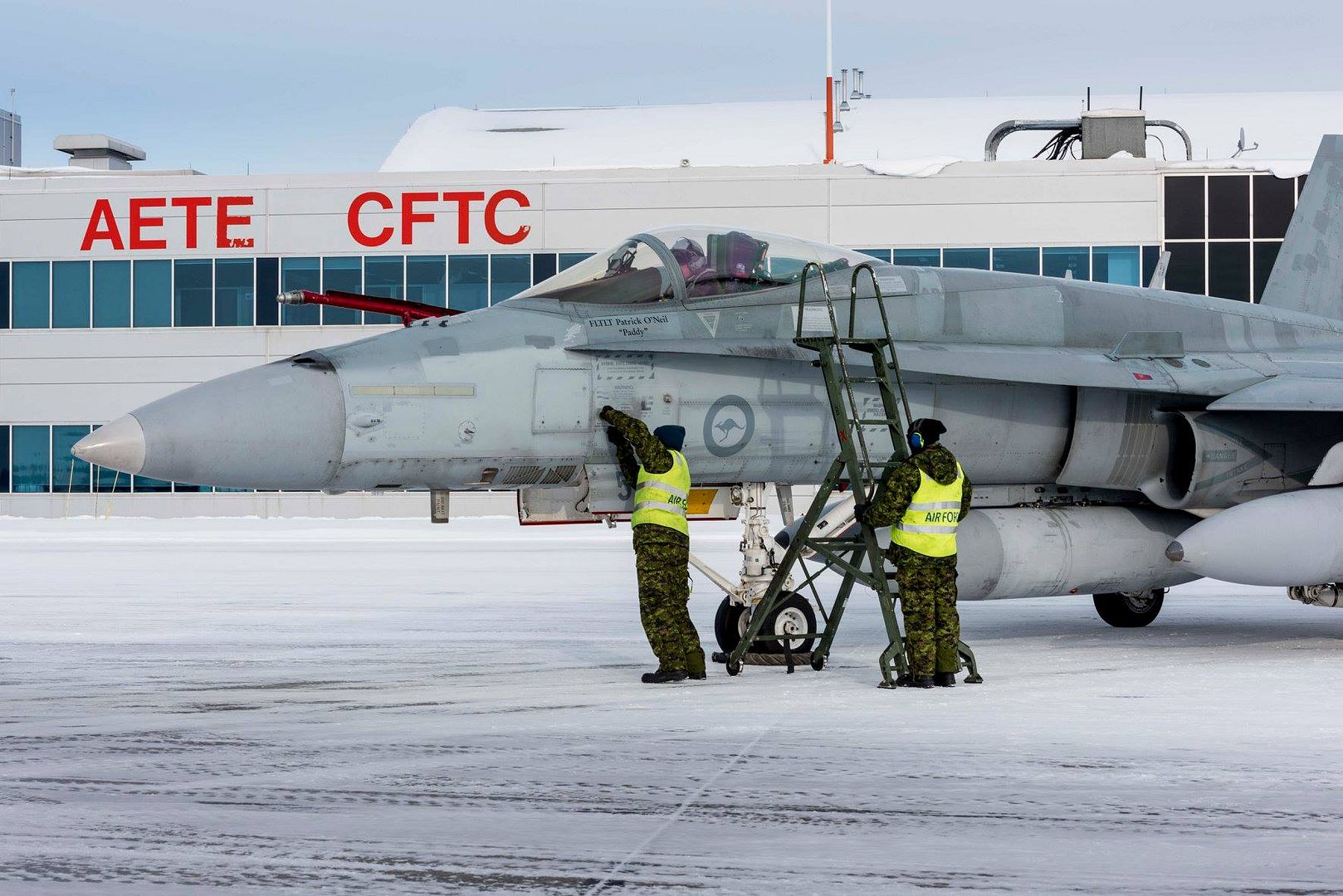
-
 Main AdminNELLIS AIR FORCE BASE, Nev. (AFNS) -- The 388th Fighter Wing?s 4th Fighter Squadron wrapped up flying operations with the F-35A Lightning II in an exponentially more challenging exercise Red Flag, 19-1 Feb. 15.
Main AdminNELLIS AIR FORCE BASE, Nev. (AFNS) -- The 388th Fighter Wing?s 4th Fighter Squadron wrapped up flying operations with the F-35A Lightning II in an exponentially more challenging exercise Red Flag, 19-1 Feb. 15.
The 4th FS integrated the F-35A into a large, capable ?Blue Force? in diverse missions against an equally capable ?Red Force.? Nearly 3,000 personnel from 39 separate units participated in the exercise, including the U.S. Navy, U.S. Air Force, Royal Air Force and Royal Australian Air Force.
The Red Force was made up of hybrid threats, combinations of the most advanced weapons systems out there, meant to replicate near-peer enemies in a large scale conflict. The shift closely aligns with the National Defense Strategy.
?The first time I came to Red Flag in 2004, our tactics were the same as they had been since the early 1980s. Now, the threat and complexity are at a whole different level,? said Col. Joshua Wood, 388th Operations Group commander. ?It?s no longer assumed that we will gain and maintain air superiority. That?s a big shift.?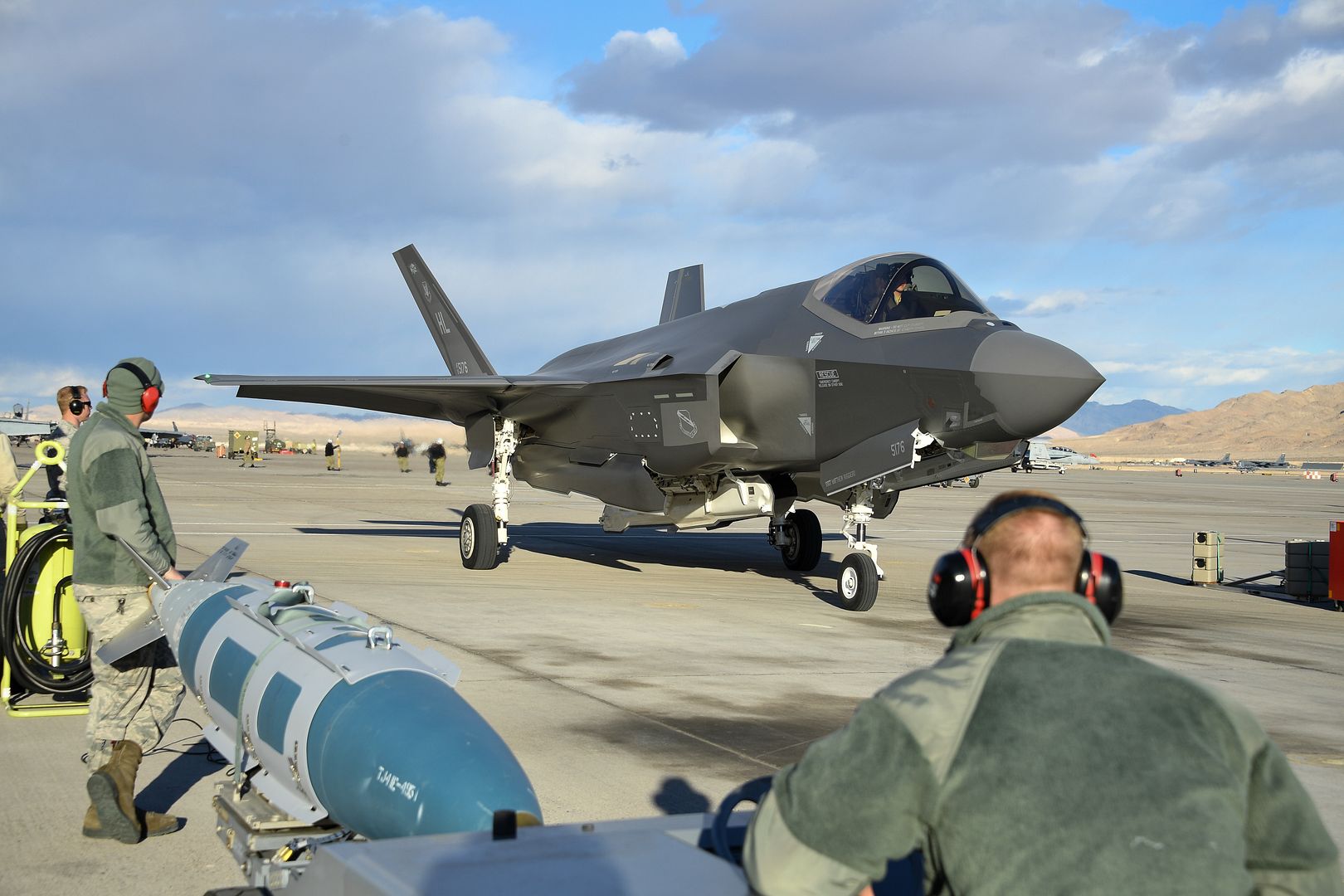
Red Flag aggressors encompass the whole spectrum of an adversary force ? advanced integrated air-defense systems, an adversary air force, cyber-warfare and information operations. Because of these diverse capabilities, many Red Flag missions are flown in ?contested or denied? environments with active electronic attack, communications jamming, and GPS denial.
?Those situations highlight the fifth-generation capabilities of the F-35. We?re still able to operate and be successful. In a lot of cases we have a large role as an integrated quarterback,? said Lt. Col. Yosef Morris, 4th FS commander. ?Our ability to continue to fuse and pass information to the entire package makes every aircraft more survivable.?
During the first week of Red Flag, the F-35 pilots flew in a larger force of Blue Air in a counter-air mission. More than 60 aggressor aircraft were flying against them, blinding many of the fourth-generation aircraft with ?robust? electronic attack capabilities.
?I?ve never seen anything like it before,? Wood said. ?This is not a mission you want a young pilot flying in. My wingman was a brand new F-35A pilot, seven or eight flights out of training. He gets on the radio and tells an experienced, 3,000-hour pilot in a very capable fourth-generation aircraft. ?Hey bud, you need to turn around. You?re about to die. There?s a threat off your nose.??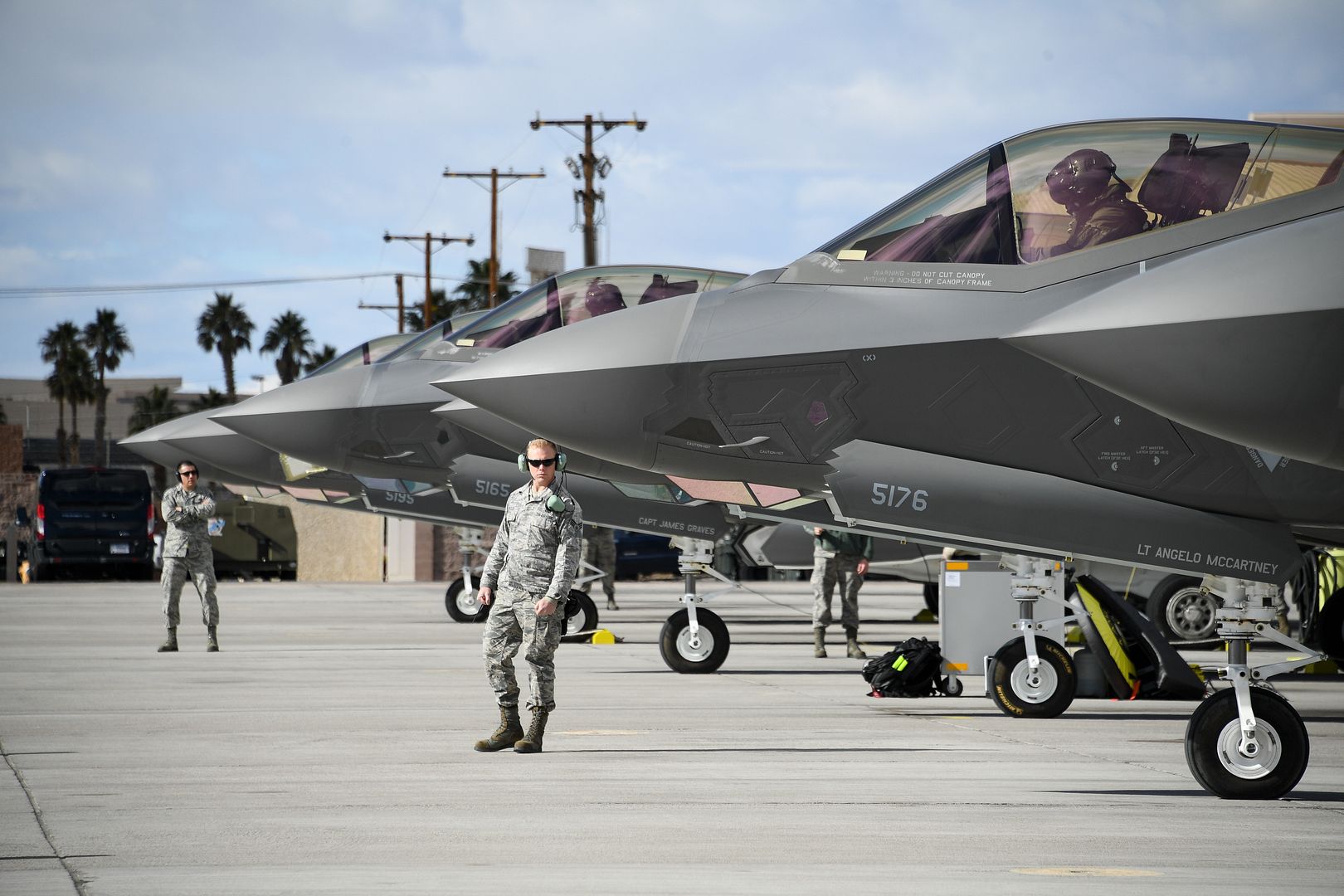
The young pilot then ?killed? the enemy aircraft and had three more kills in the hour-long mission.
?Even in this extremely challenging environment, the F-35 didn?t have many difficulties doing its job,? Wood said. ?That?s a testament to the pilot?s training and the capabilities of the jet.?
One of the most valuable things about this exercise for the 4th FS is the experience it provided younger pilots flying combat missions as part of an integrated force. Thirteen pilots in the squadron have never flown the F-35 in Red Flag, and four of them just graduated pilot training.
?They say it?s the most realistic thing to combat,? said 1st Lt. Landon Moores, a new F-35A pilot. ?It?s been pretty intense.?
Red Flag is not a rolling campaign. It is made up of different scenarios that increase in difficulty as the weeks go on. This allows the integrated force to learn how best to capitalize on the strengths and protect the weaknesses of each platform in very specific mission sets.
?With stealth, the F-35 can get closer to threats than many other aircraft can. Combined with the performance of the fused sensors on the F-35, we can significantly contribute to the majority of the missions,? Morris said.
The missions aren?t just 90-minute flights. They require 12-hours of intense planning the day prior, a two hour pre-brief, and then several hours of debriefing after the mission ? dissecting the outcome and looking for ways to improve.
?It?s not like we just come back and high-five if we?re successful,? Morris said. ?Could we have done better? Did we have all the resources we needed? Often the brief and debrief is the most valuable part of Red Flag, especially for younger pilots.?
The squadron brought 12 aircraft and more than 200 Airmen to the three-week exercise ? pilots, maintainers, intelligence officers, weapons crews, and support personnel, including reservists from the 419th Fighter Wing. Maintainers didn?t lose a single sortie to a maintenance ground-abort and had spare aircraft available for every mission.
?As this aircraft matures, we continue to see it be a significant force-multiplier in a threat-dense environment,? Morris said. ?Red Flag was a success for us and has made our younger pilots more lethal and more confident.?
(U.S. Air Force photo's by R. Nial Bradshaw)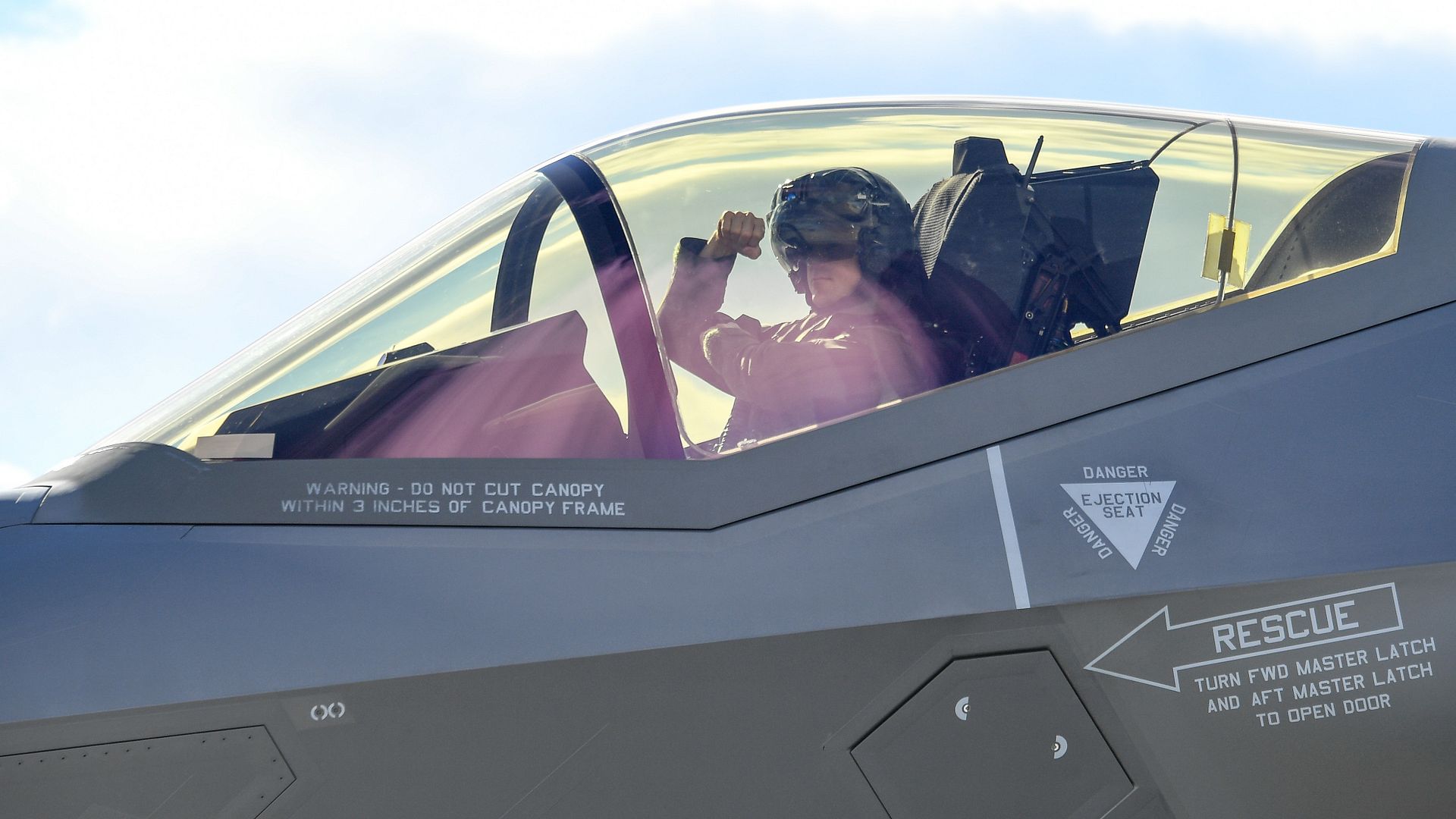
ATLANTIC OCEAN (Feb. 17, 2019) An F/A-18E Super Hornet assigned to the "Sidewinders" of Strike Fighter Squadron (VFA) 86 launches off the flight deck aboard the Nimitz-class aircraft carrier USS Abraham Lincoln (CVN 72). Abraham Lincoln is underway conducting a composite training unit exercise (COMPTUEX) with Carrier Strike Group (CSG) 12. The components of CSG-12 embody a team-of-teams concept, combining advanced surface, air and systems assets to create and sustain operational capability. This enables them to prepare for and conduct global operations, have effective and lasting command and control, and demonstrate dedication and commitment to becoming the strongest warfighting force for the Navy and the nation. (U.S. Navy photo by Mass Communication Specialist 3rd Class Garrett LaBarge/Released)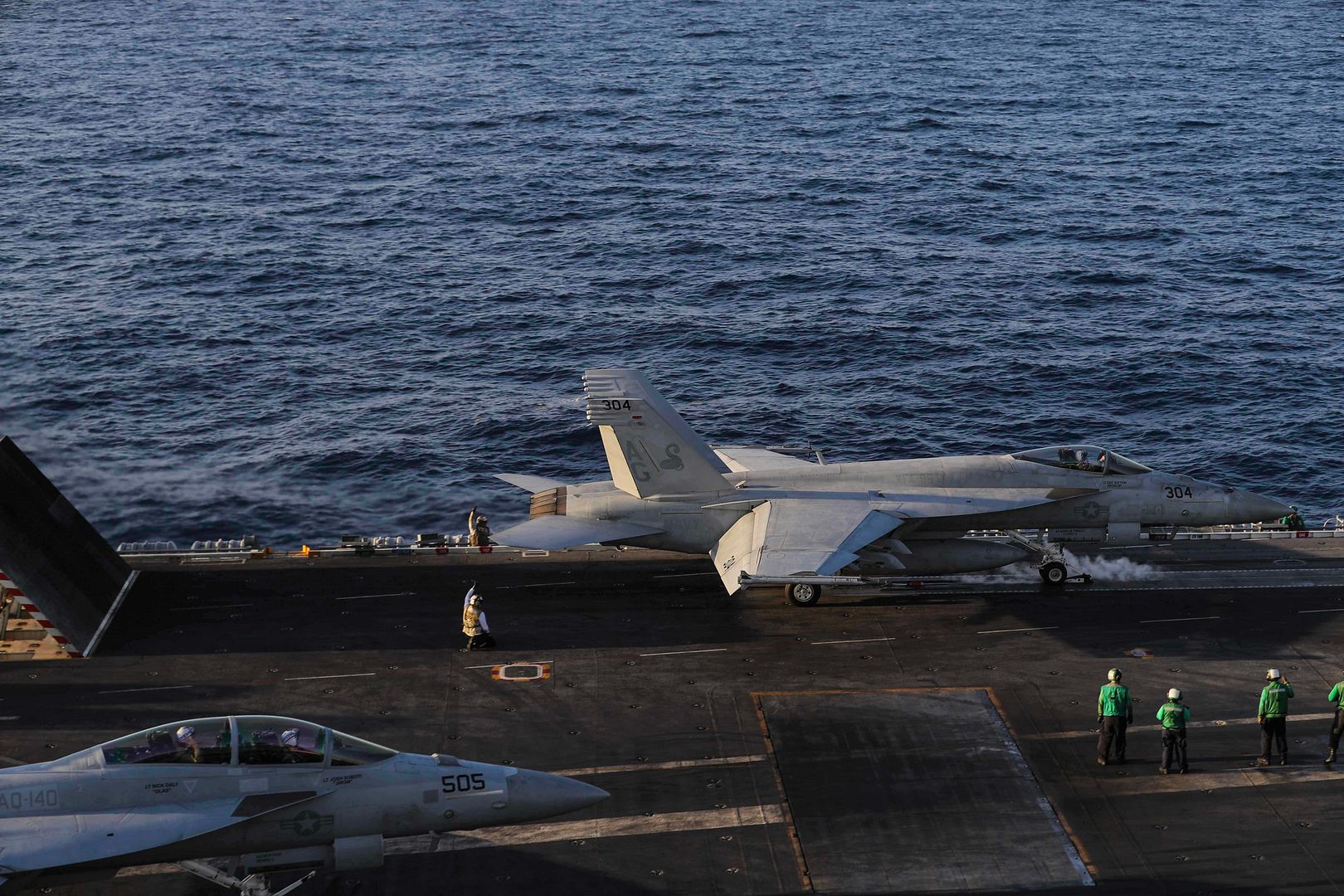
ATLANTIC OCEAN (Feb. 17, 2019) An EA-18G Growler assigned to the Patriots of Electronic Attack Squadron (VAQ) 140 prepares to launch off the flight deck of the Nimitz-class aircraft carrier USS Abraham Lincoln (CVN 72). Abraham Lincoln is underway conducting a composite training unit exercise (COMPTUEX) with Carrier Strike Group (CSG) 12. The components of CSG-12 embody a team-of-teams concept, combining advanced surface, air and systems assets to create and sustain operational capability. This enables them to prepare for and conduct global operations, have effective and lasting command and control, and demonstrate dedication and commitment to becoming the strongest warfighting force for the Navy and the nation. (U.S. Navy photo by Mass Communication Specialist 3rd Class Garrett LaBarge/Released)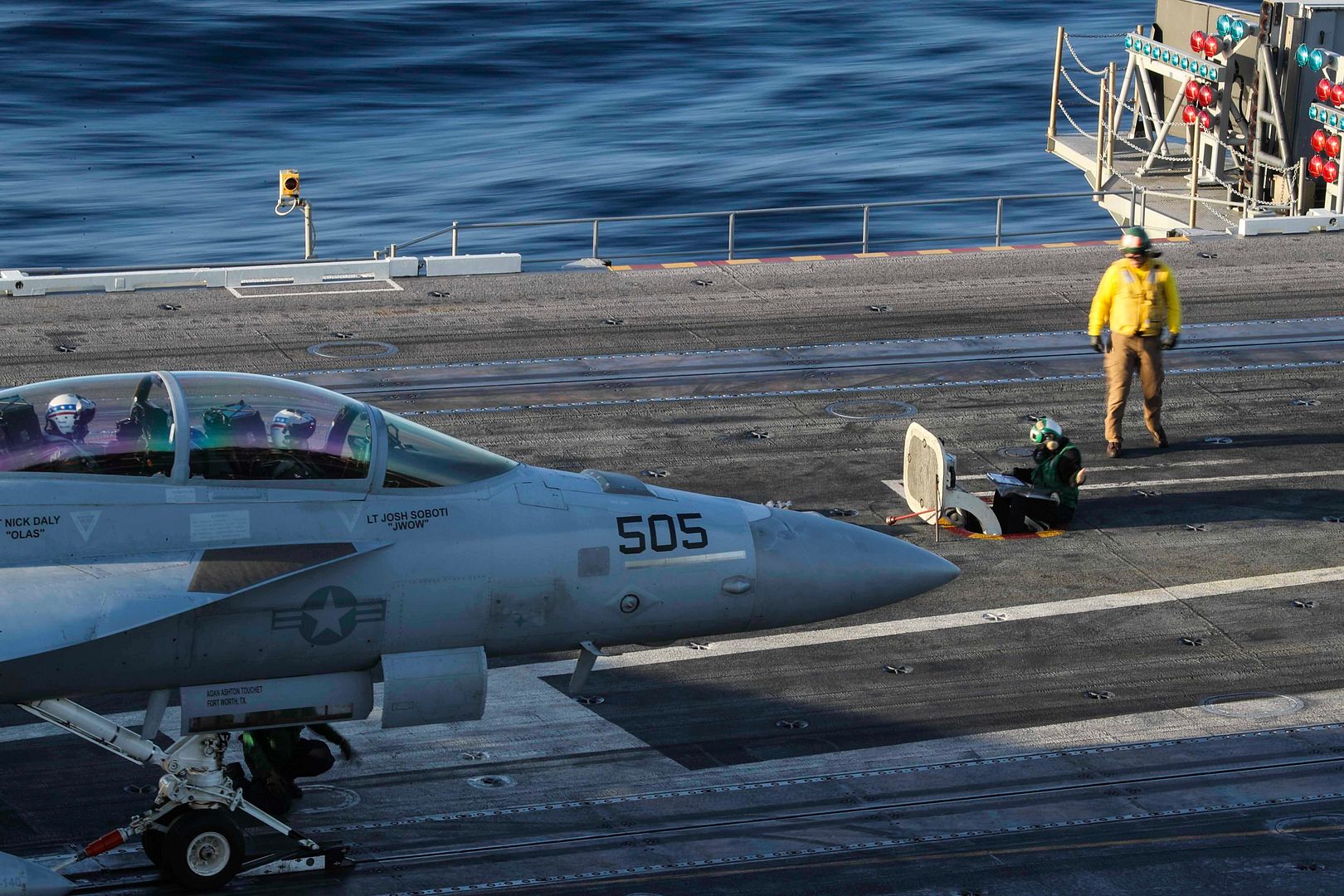
February 19, 2019 Montr?al Business Aircraft, Press Release
Bombardier today announced the latest addition to its expanding service and support network ? a dedicated Mobile Response Team (MRT) aircraft, based in Frankfurt, Germany. The Challenger 300 aircraft marked its entry-into-service by successfully completing its first mission, providing a European customer with efficient unscheduled maintenance support.
The strategically located Challenger 300 aircraft will deftly supplement the shipping of parts from Bombardier?s main European parts distribution hub at Frankfurt International Airport. Its 3,065-NM (5,646-km) range and impressive Mach 0.83 top speed capability will enhance the MRT?s reach and response times to a fleet size of more than 700 aircraft in Europe and the Middle East.
?With this investment, we are adding expertise and increasing accessibility to OEM support for our European operators and paving the way for the industry?s largest and longest-range business jet ? our flagship Global 7500 aircraft ? which is now in service,? said Jean-Christophe Gallagher, Vice-President and General Manager, Customer Experience, Bombardier Business Aircraft. ?The addition of a dedicated Challenger 300 aircraft will augment the worldwide efforts of our MRT, already ranked as one of the most comprehensive onsite, mobile and aircraft-on-ground resolution services in the industry.?
Bombardier Customer Support in Europe: There are a total of seven Bombardier line maintenance stations in Europe located in Luton, UK, Linz, Austria, Paris, Nice and Cannes in France, and Milan and Olbia in Italy. They complement the tip-to-tail heavy maintenance services provided by Bombardier?s newest wholly-owned service centre at London Biggin Hill Airport in the UK and jointly owned Lufthansa Bombardier Aviation Services in Berlin. Bombardier operators also have access to 12 Authorized Service Facilities in the region.
Bombardier Worldwide Mobile Response Services: In recent months, Bombardier has expanded its customer response capability significantly. Five new Mobile Response Team trucks have been deployed, bringing the current worldwide total to 30. The Challenger 300 aircraft in Frankfurt joins a dedicated Learjet 45 aircraft in Chicago, along with two maintenance control centres (MCCs) in Linz, Austria and Wichita, Kansas. The new MCCs work in conjunction with Bombardier?s Customer Response Centre, which operates 24/7 to streamline customer requests and optimize maintenance support.
-
 Main AdminAn HC-144B Ocean Sentry, Sector/Air Station Corpus Christi's newest addition, rests on an airstrip in Corpus Christi, Texas on Feb. 20, 2019. This upgraded aircraft contains improvements that will allow aircrews to gather and process surveillance information that can be transmitted to other platforms and units during flight. U.S. Coast Guard photo by Lt. j.g. Jessica Wright.
Main AdminAn HC-144B Ocean Sentry, Sector/Air Station Corpus Christi's newest addition, rests on an airstrip in Corpus Christi, Texas on Feb. 20, 2019. This upgraded aircraft contains improvements that will allow aircrews to gather and process surveillance information that can be transmitted to other platforms and units during flight. U.S. Coast Guard photo by Lt. j.g. Jessica Wright.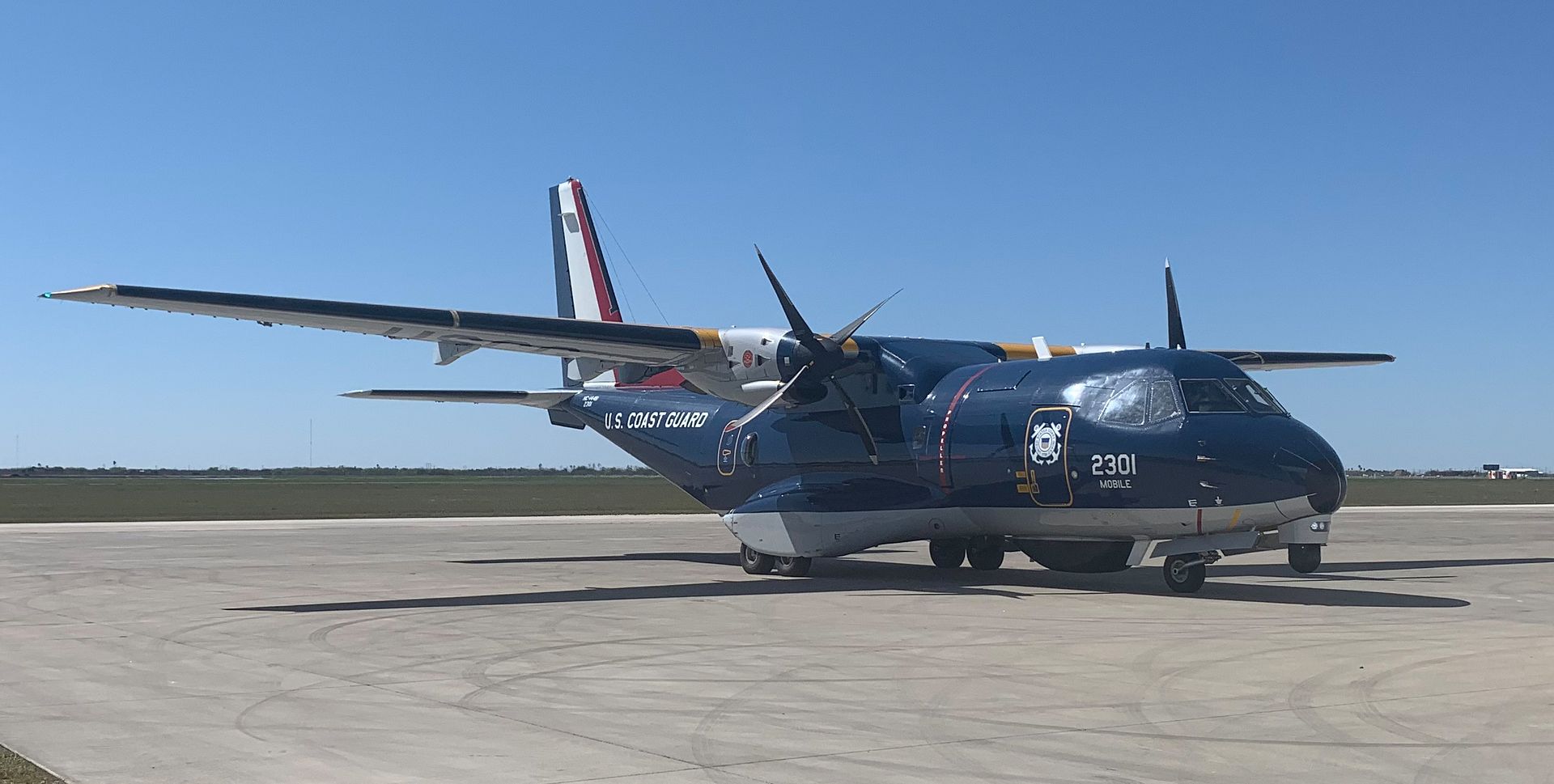
An F-15E Strike Eagle assigned to the 494th Fighter Squadron bares the names of the heroic 364th Bomb Squadron B-17 crew 'Mi Amigo' Feb 20, 2019, at Royal Air Force Lakenheath, England. The 494th FS will take part in a multi-aircraft flypast over Sheffield, England to honor the crew of Mi Amigo on Feb 22. (U.S. Air Force photo's/ Tech. Sgt. Matthew Plew)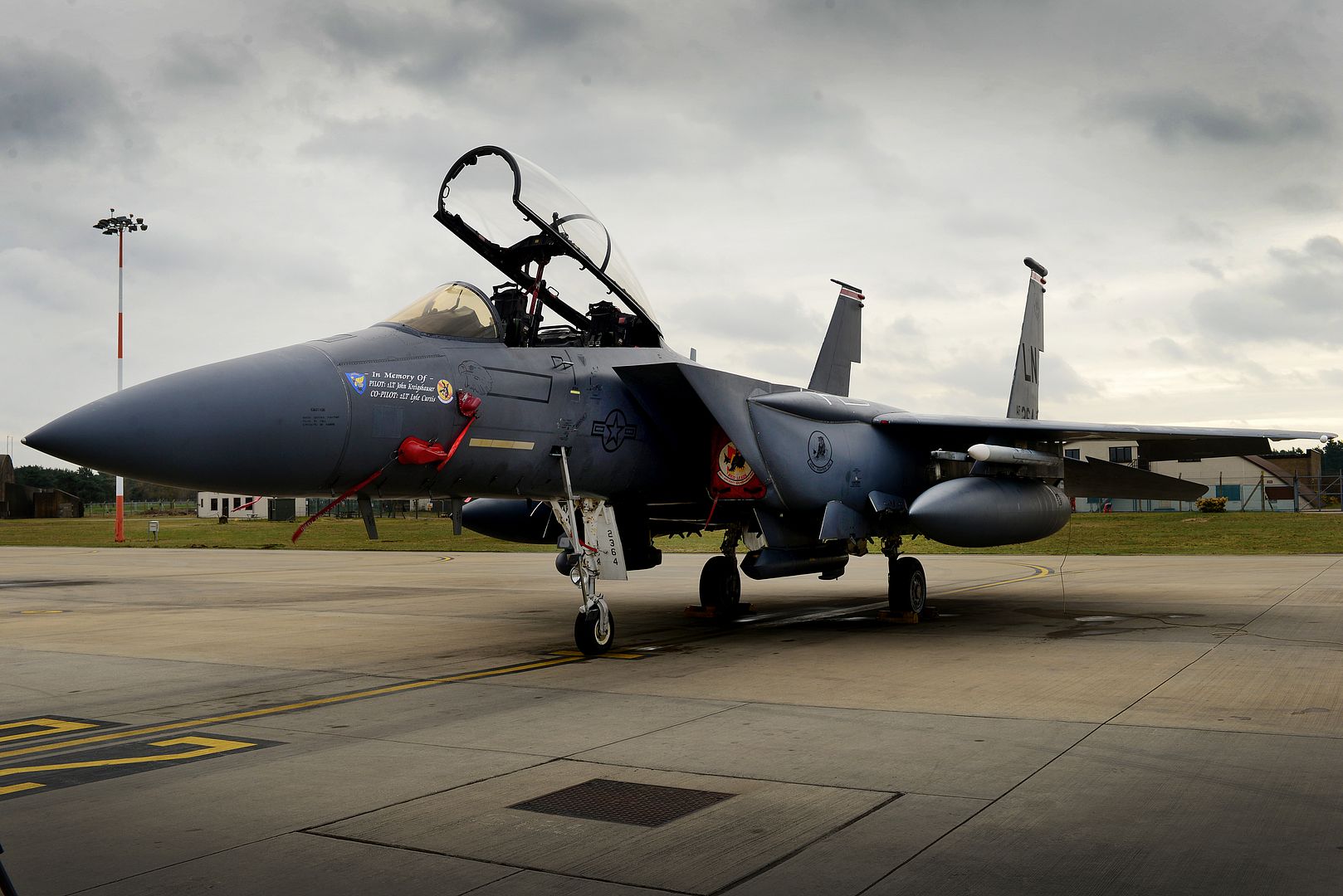
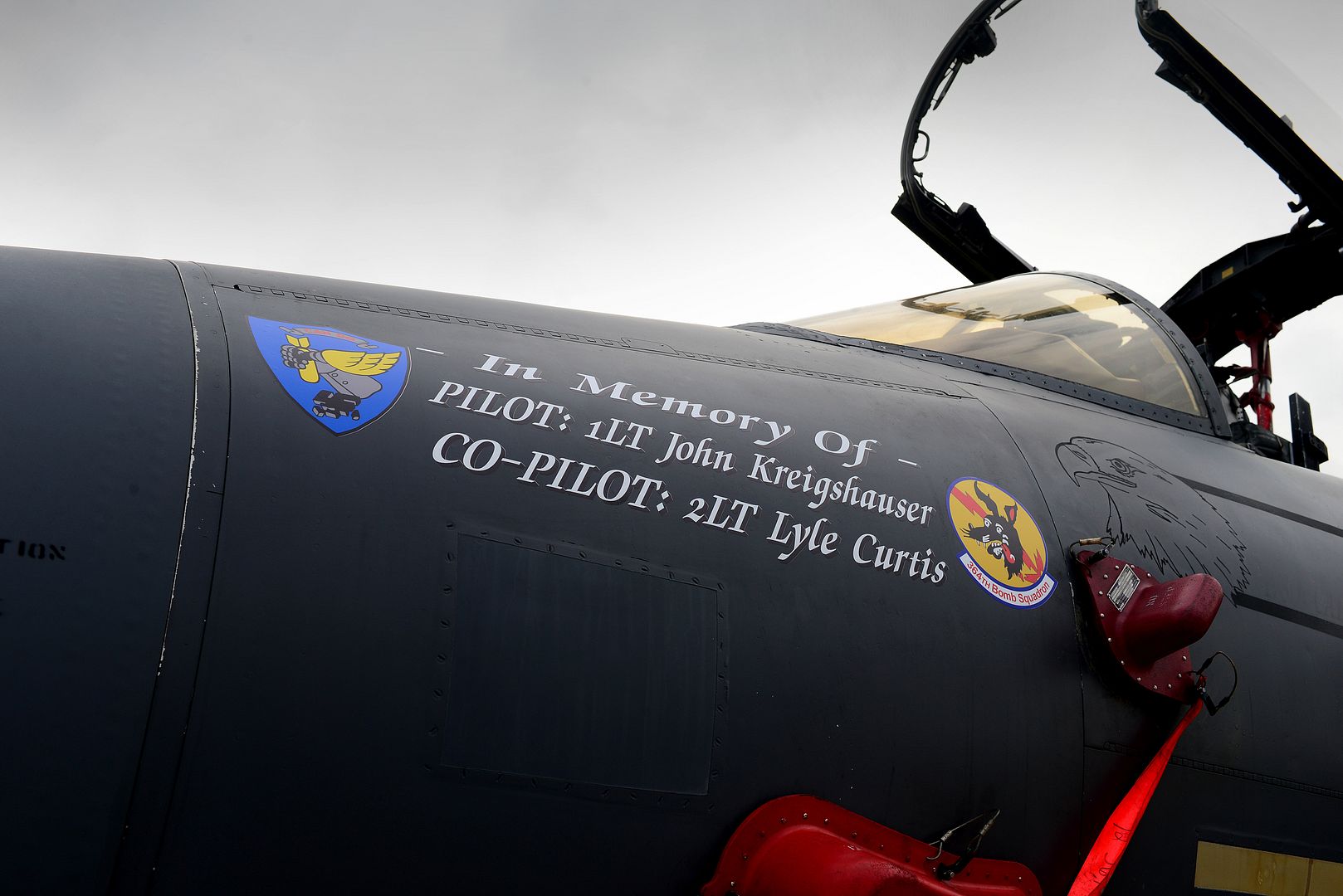
A British Royal Air Force Eurofighter Typhoon pilot provides simulated close-air support for U.S. Marines with Special Purpose Marine Air-Ground Task Force-Crisis Response-Africa 19.1 and Marine Rotational Force-Europe 19.1, Marine Forces Europe and Africa, during a training event at Holbeach Range, England, Feb. 19, 2019. SPMAGTF-CR-AF is a rotational force deployed to conduct crisis-response and theater-security operations in Europe and Africa. (U.S. Marine Corps photo by Sgt. Katelyn Hunter)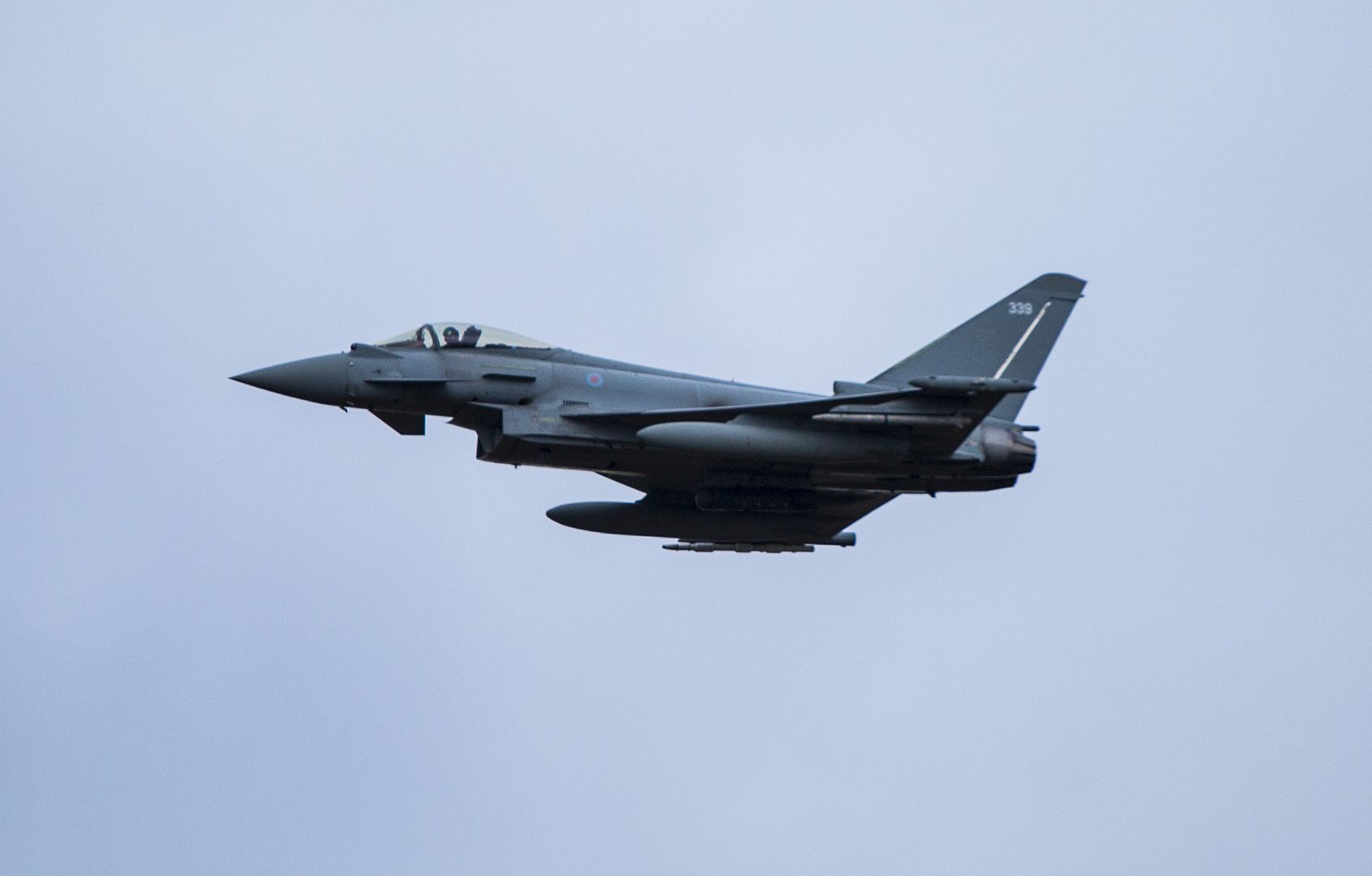
ATLANTIC OCEAN (Feb. 18, 2019) A C-2A Greyhound from the "Rawhides" of Fleet Logistics Support Squadron (VRC) 40 prepares to launch from the flight deck of the Nimitz-class aircraft carrier USS Abraham Lincoln (CVN 72). Abraham Lincoln is underway conducting composite unit training exercise (COMPTUEX) with Carrier Strike Group (CSG) 12. The components of CSG 12 embody a team-of-teams concept, combining advanced surface, air and systems assets to create and sustain operational capability. This enables them to prepare for and conduct global operations, have effective and lasting command and control, and demonstrate dedication and commitment to becoming the strongest warfighting force for the Navy and the nation. (U.S. Navy photo by Mass Communication Specialist 3rd Class Amber Smalley/Released)
ATLANTIC OCEAN (Feb. 18, 2019) An E-2D Hawkeye from the "Bluetails" of Carrier Airborne Early Warning Squadron (VAW) 121 performs an arrested landing on the flight deck of the Nimitz-class aircraft carrier USS Abraham Lincoln (CVN 72). Abraham Lincoln is underway conducting composite unit training exercise (COMPTUEX) with Carrier Strike Group (CSG) 12. The components of CSG 12 embody a team-of-teams concept, combining advanced surface, air and systems assets to create and sustain operational capability. This enables them to prepare for and conduct global operations, have effective and lasting command and control, and demonstrate dedication and commitment to becoming the strongest warfighting force for the Navy and the nation. (U.S. Navy photo by Mass Communication Specialist 3rd Class Amber Smalley/Released)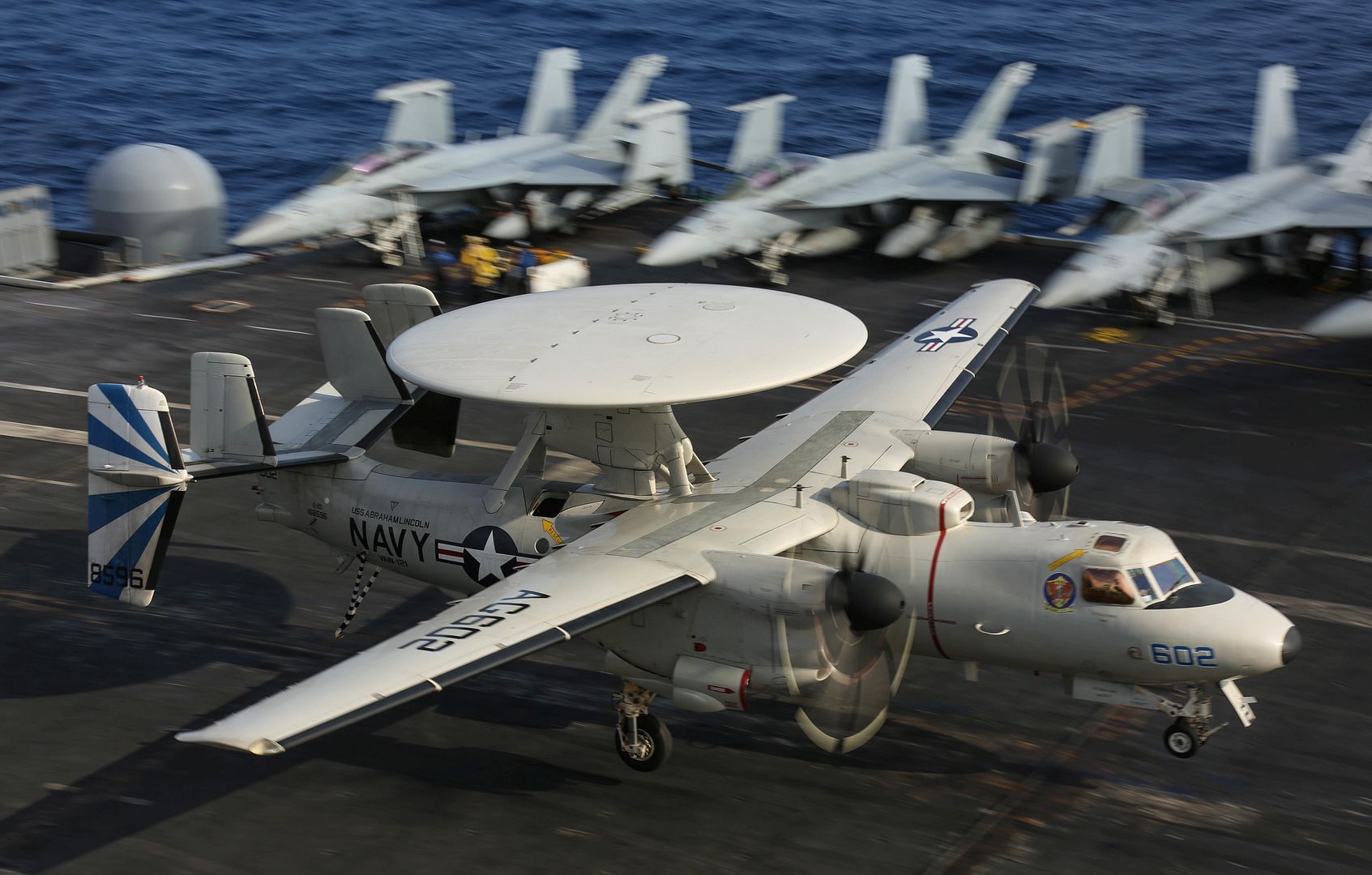
ATLANTIC OCEAN (Feb. 17, 2019) An F/A-18E Super Hornet from the ?Pukin? Dogs? of Strike Fighter Squadron (VFA) 143 launches from the flight deck of the Nimitz-class aircraft carrier USS Abraham Lincoln (CVN 72). Abraham Lincoln is underway conducting composite training unit exercise (COMPTUEX) with Carrier Strike Group (CSG) 12. The components of CSG 12 embody a team-of-teams concept, combining advanced surface, air and systems assets to create and sustain operational capability. This enables them to prepare for and conduct global operations, have effective and lasting command and control, and demonstrate dedication and commitment to becoming the strongest warfighting force for the Navy and the nation. (U.S. Navy photo by Mass Communication Specialist 1st Class Brian M. Wilbur/Released)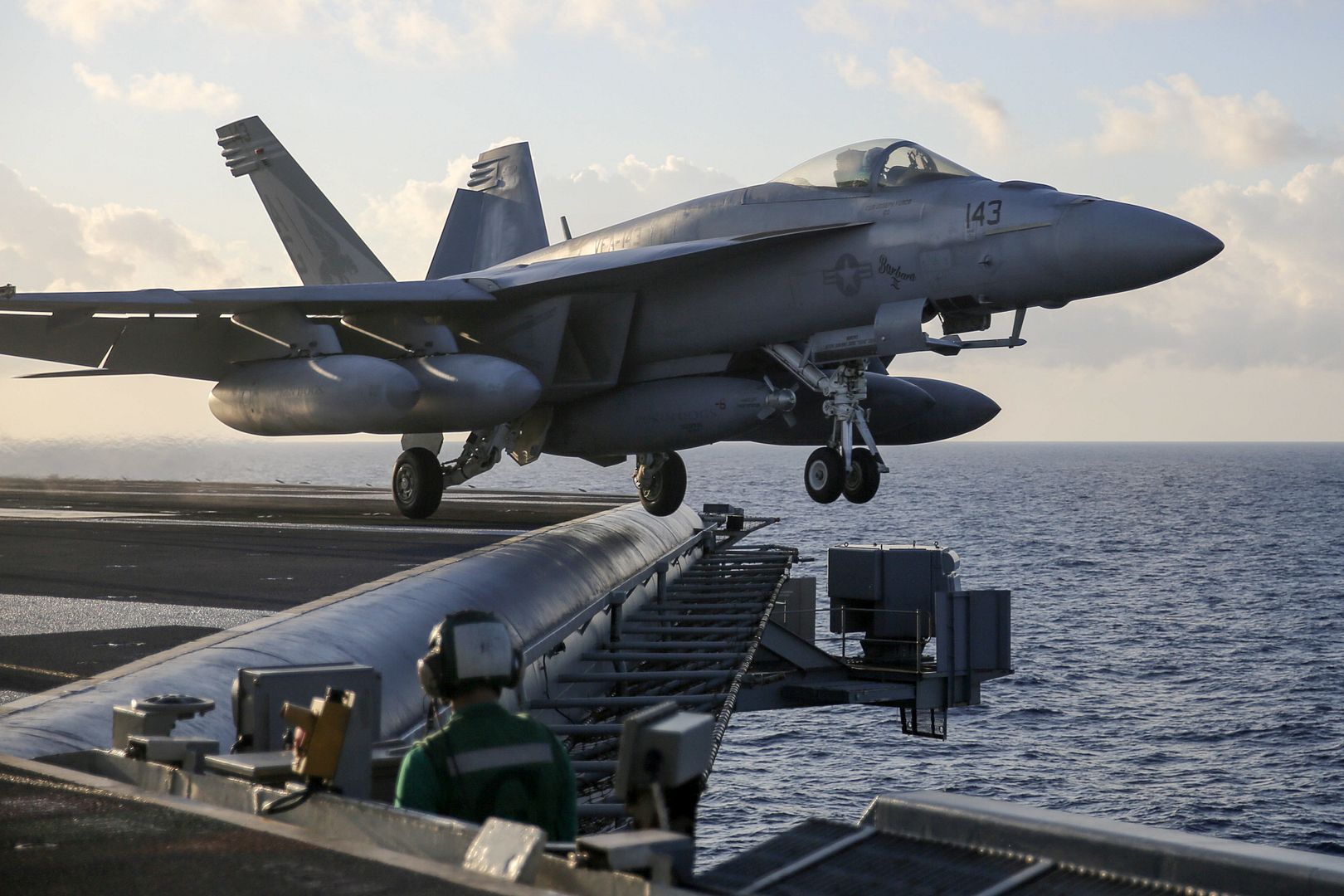
ATLANTIC OCEAN (Feb. 19, 2019) An F/A-18F Super Hornet assigned to the "Jolly Rogers" of Strike Fighter Squadron (VFA) 103 launches from the flight deck of the Nimitz-class aircraft carrier USS Abraham Lincoln (CVN 72). Abraham Lincoln is underway conducting composite training unit exercise (COMPTUEX) with Carrier Strike Group (CSG) 12. The components of CSG 12 embody a team-of-teams concept, combining advanced surface, air and systems assets to create and sustain operational capability. This enables them to prepare for and conduct global operations, have effective and lasting command and control, and demonstrate dedication and commitment to becoming the strongest warfighting force for the Navy and the nation. (U.S. Navy photo by Mass Communication Specialist 2nd Class Matt Herbst)
PACIFIC OCEAN (Feb. 19, 2019) An F/A-18E Super Hornet assigned to Strike Fighter Squadron (VFA) 151 flies over the aircraft carrier USS John C. Stennis (CVN 74) in the Pacific Ocean, Feb. 19, 2019. John C. Stennis is deployed to the U.S. 7th Fleet area of operations in support of security and stability in the Indo-Pacific region. (U.S. Navy photo's by Mass Communication Specialist 3rd Class Grant G. Grady/Released)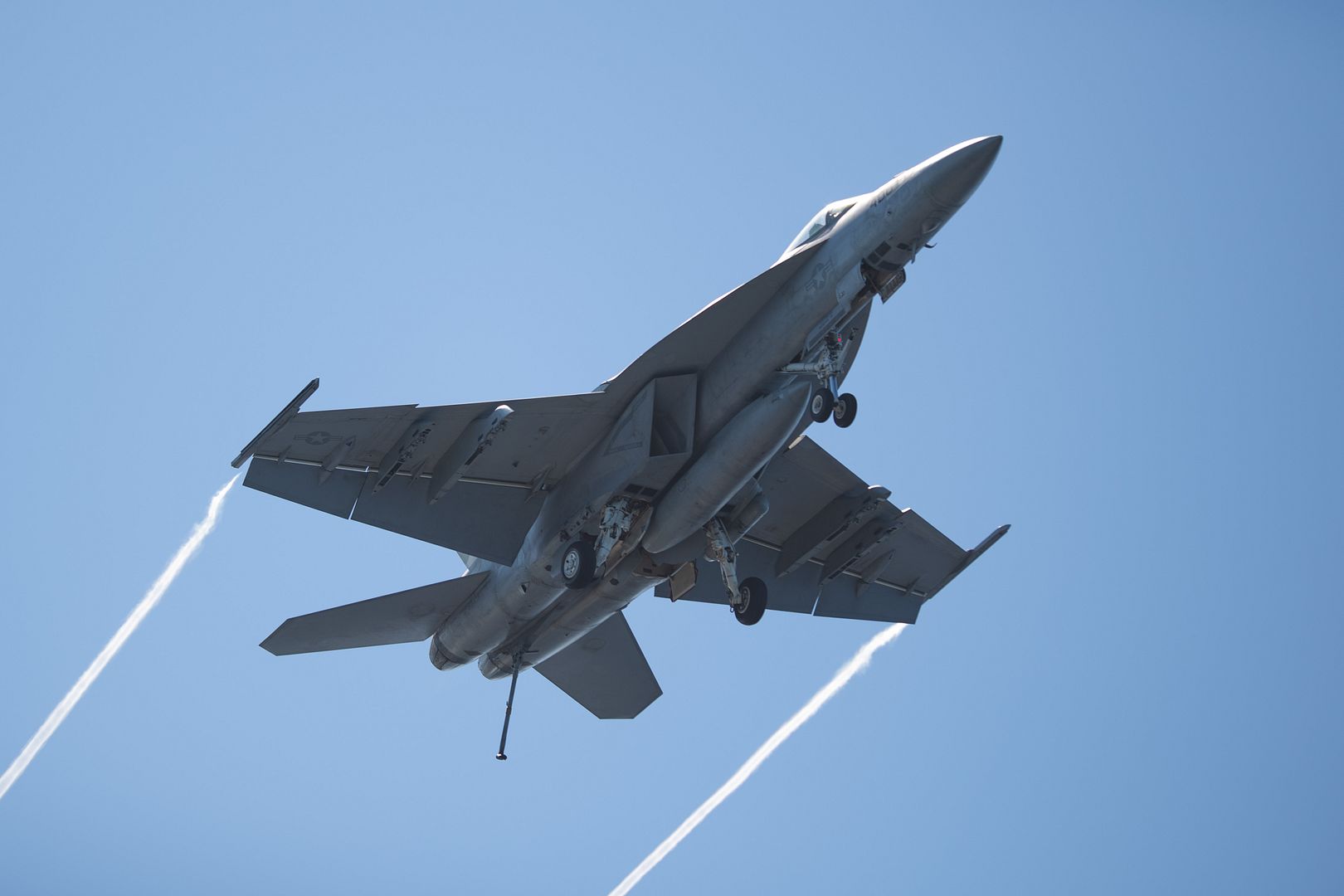

-
 Main AdminA U.S. Air Force F-16C from the 18th Aggressor Squadron out of Eielson Air Force Base, Alaska, breaks away after receiving air refueling from a KC-135 Stratotanker assigned to the 909th Air Refueling Squadron from Kadena Air Base, Japan, over the Pacific Ocean during COPE North 2019 at Andersen Air Force Base, Guam on Feb. 21, 2019. COPE North is an annual multilateral U.S. Pacific Air Forces-sponsored field training exercise conducted focused on combat air forces large-force employment and mobility air forces humanitarian assistance and disaster relief training to enhance interoperability among U.S., Australian and Japanese forces. (U.S. Air Force photo by Senior Airman Xavier Navarro)
Main AdminA U.S. Air Force F-16C from the 18th Aggressor Squadron out of Eielson Air Force Base, Alaska, breaks away after receiving air refueling from a KC-135 Stratotanker assigned to the 909th Air Refueling Squadron from Kadena Air Base, Japan, over the Pacific Ocean during COPE North 2019 at Andersen Air Force Base, Guam on Feb. 21, 2019. COPE North is an annual multilateral U.S. Pacific Air Forces-sponsored field training exercise conducted focused on combat air forces large-force employment and mobility air forces humanitarian assistance and disaster relief training to enhance interoperability among U.S., Australian and Japanese forces. (U.S. Air Force photo by Senior Airman Xavier Navarro)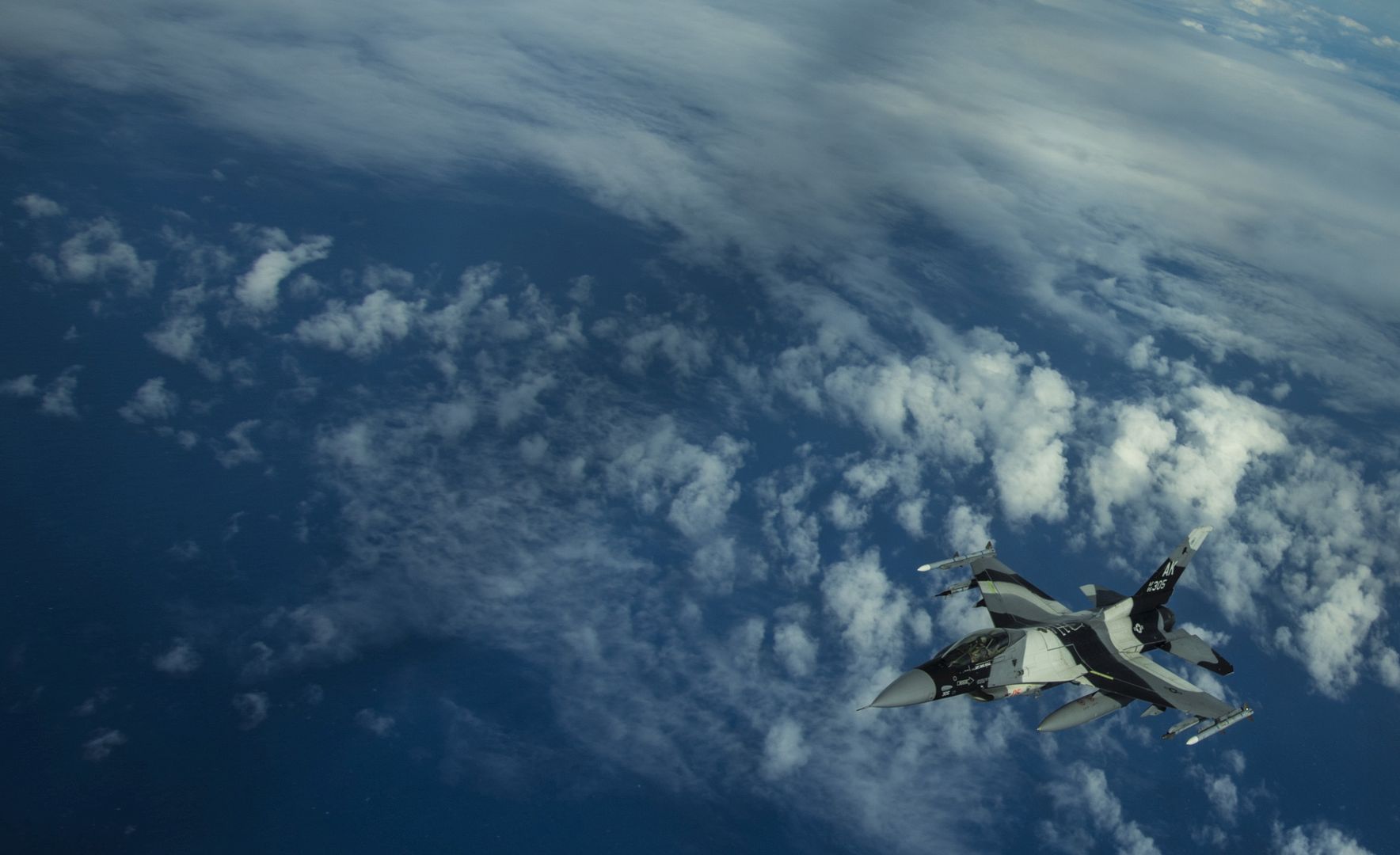
A 138th Fighter Wing F-16 Falcon lines up for a final approach Feb. 20, 2019 at Tulsa Air National Guard Base, Oklahoma. (U.S. Air National Guard Photo by Master Sgt. C.T. Michael)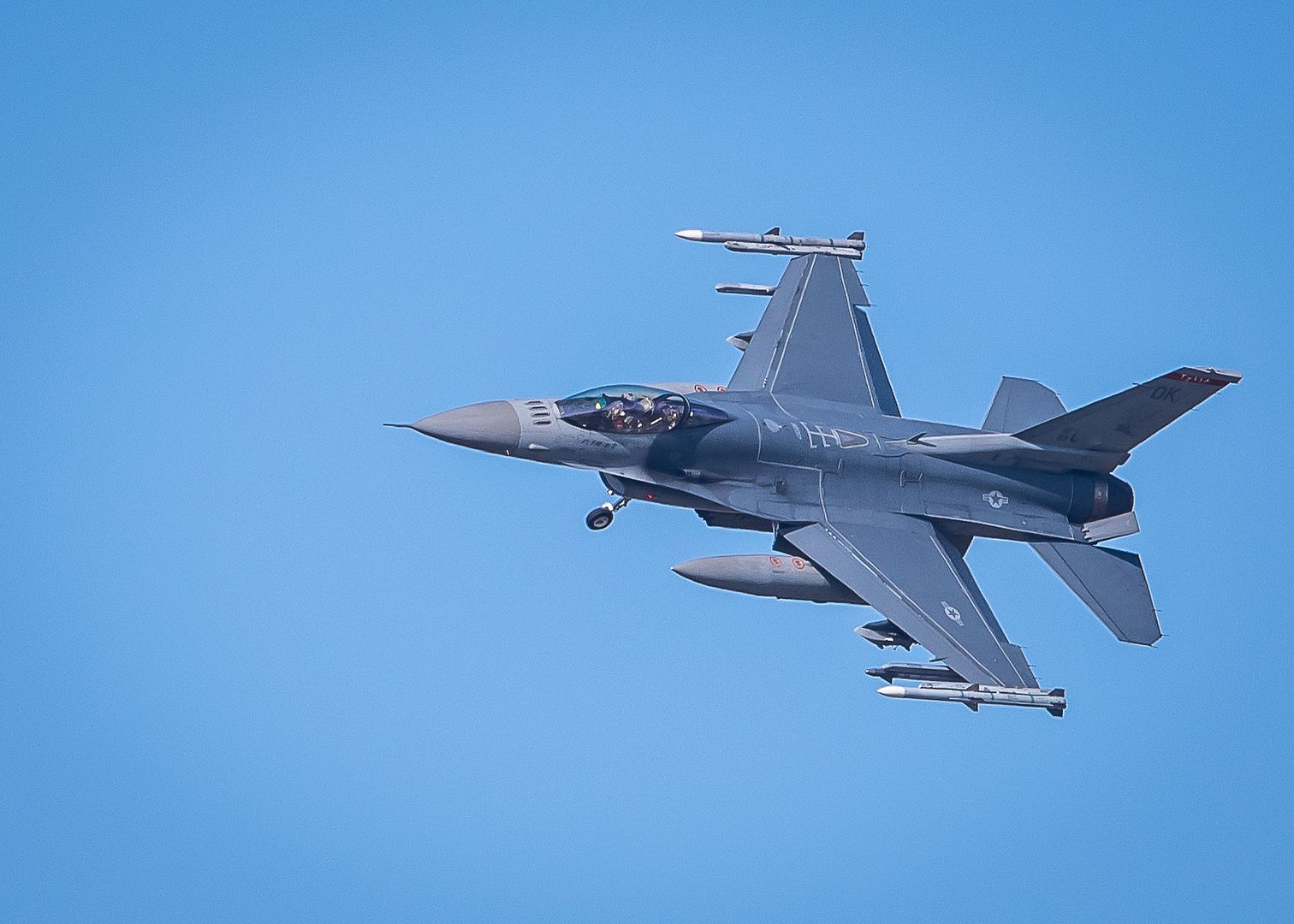
An F-16 Fighting Falcon fighter jet, assigned to the 64th Aggressors Squadron, sits on the flightline after a snowstorm at Nellis Air Force Base, Nev., Jan. 20, 2019. The last time Las Vegas had any measurable snow was Dec. 7, 2008, when 3.6 inches fell on the city. (U.S. Air Force photo by Airman 1st Class Bryan Guthrie)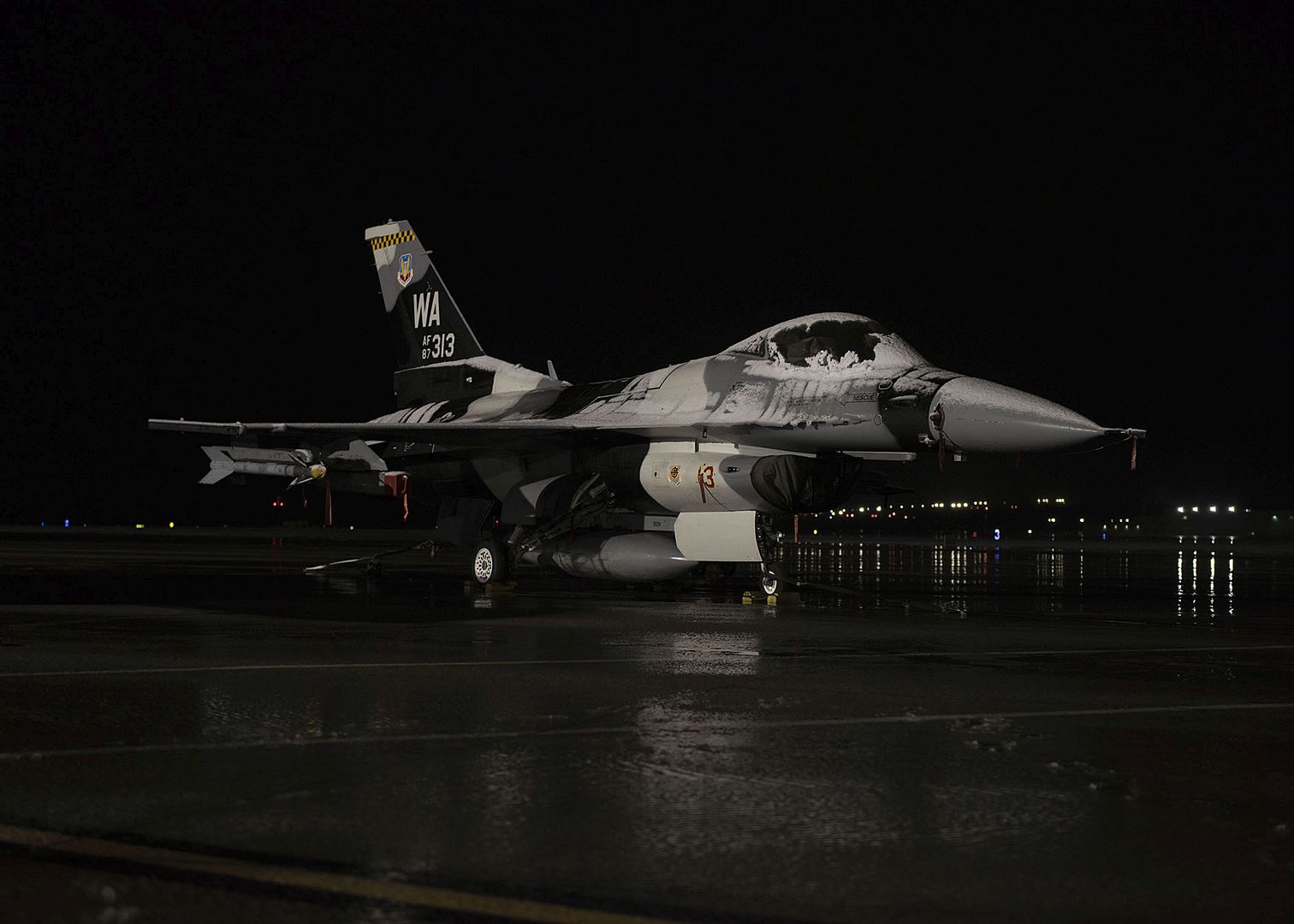
ATLANTIC OCEAN (Feb. 16, 2019) An F/A-18F Super Hornet assigned to the Jolly Rogers of Strike Fighter Squadron (VFA) 103 performs an arrested landing on the flight deck of the Nimitz-class aircraft carrier USS Abraham Lincoln (CVN 72). Abraham Lincoln is underway conducting a composite training unit exercise (COMPTUEX) with Carrier Strike Group (CSG) 12. The components of CSG 12 embody a team-of-teams concept, combining advanced surface, air and systems assets to create and sustain operational capability. This enables them to prepare for and conduct global operations, have effective and lasting command and control, and demonstrate dedication and commitment to becoming the strongest warfighting force for the Navy and the nation. (U.S. Navy photo by Mass Communication Specialist 2nd Class Matt Herbst/Released)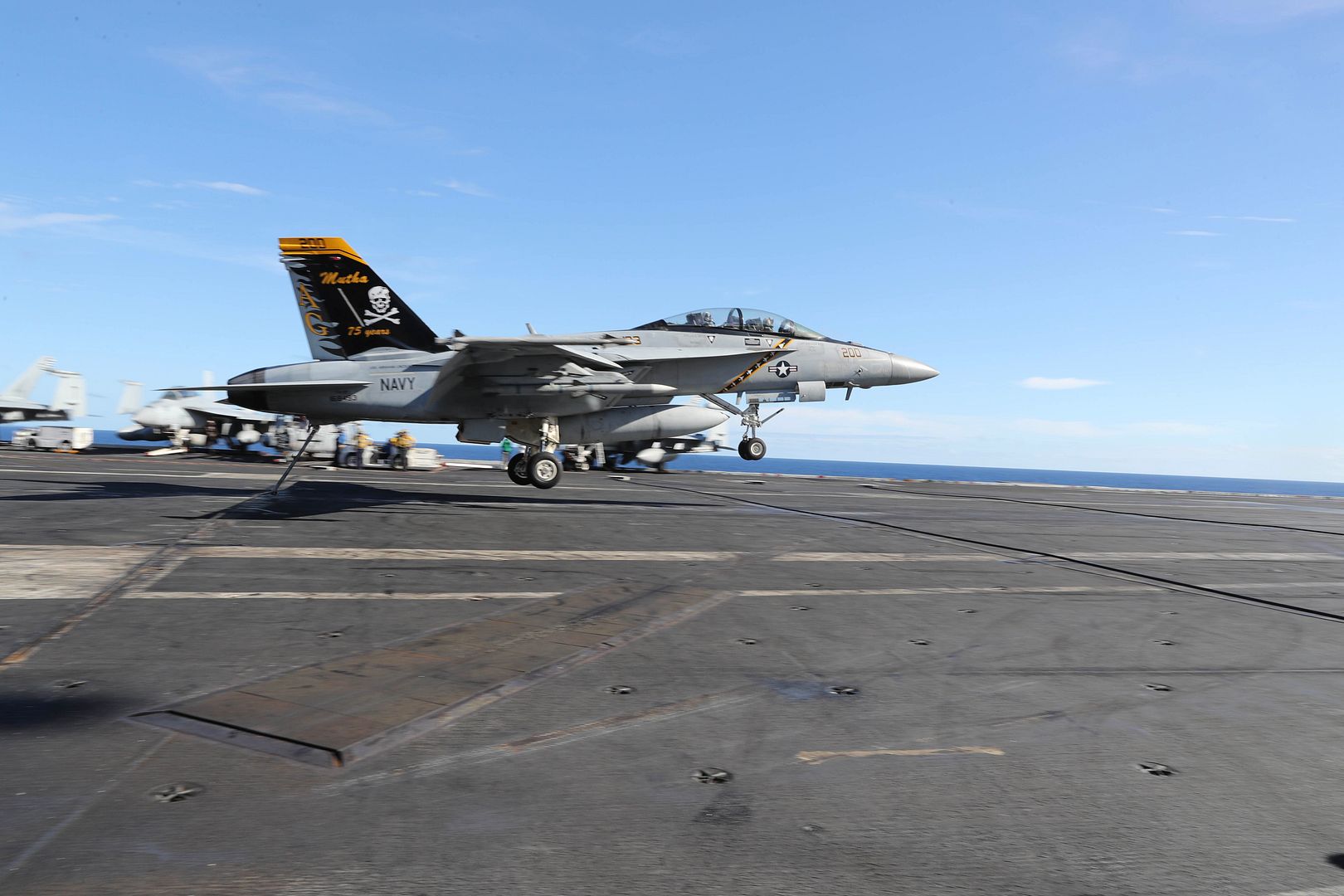
CANBERRA, Australia ? Feb. 22, 2019 ? Northrop Grumman Australia, a fully owned subsidiary of Northrop Grumman Corporation (NYSE: NOC), welcomes the announcement of the assignment of maintenance, repair, overhaul and upgrade (MRO&U) work for the multinational F-35 Joint Strike Fighter (JSF) program to the Australian defence industry.
Under this assignment announcement, Northrop Grumman Australia and fellow Australian companies, BAE Systems, MOOG, RUAG, NIOA, Survitec, and GE Aviation, will provide the capabilities underpinning thirteen of seventeen MRO&U component repair technology groups assigned to the Asia-Pacific region. These categories, assigned to Australian industry by the U.S. Department of Defense for the sustainment of F-35 Lightning IIs based in the Asia-Pacific region, include depot repair for avionics, munitions/weapons delivery, canopy systems, aircraft composite structure, electro-optical systems, electrical components, valves, auxiliary power systems, hydraulics, pneumatics, pneudraulics, hydro-mechanical systems, landing gear, life support and pumps.
?Northrop Grumman Australia continues to be fully committed to growing its in-country technical sustainment workforce and capabilities, and this work will allow us to continue supporting the Royal Australian Air Force?s (RAAF) mission and the Australian defence industry at large,? said Warren King, interim chief executive, Northrop Grumman Australia. ?We are grateful to our industry teammates, the Australian JSF Division, the Commonwealth government, and the U.S. JPO for this recognition.?
Northrop Grumman?s capabilities related to F-35 are reinforced by the company?s support to the RAAF?s KC-30A Multi-Role Tanker Transport, Special Purpose Aircraft fleet and C-27J Spartan battlefield airlifter. With the sustainment and modernisation solutions we will offer for other mission-critical platforms such as the MQ-4C Triton, Northrop Grumman is well positioned to continue to drive strategic value creation in the MRO market.
Based on the assignment, Northrop Grumman Australia will deliver avionics, composites (teaming with Quickstep) and electro-optics repair (teaming with BAE Systems) services. In providing these services, the company will leverage its existing capabilities, as well as introduce new technologies to the Australian defence industrial community. To further support the execution of this assignment, Northrop Grumman Australia is establishing an Electronic Sustainment Centre (ESC) to sustain mission-readiness capabilities within the Commonwealth. After achieving readiness in January 2019 to support regional APN-241 radar repair, the ESC is prepared to support key fifth-generation communications, navigation, and identification systems.
?MRO&U components are one element of the F-35 global sustainment solution. As the U.S. and partner nations activate their F-35 fleets, Northrop Grumman and its industry team will continue to ensure critical systems are available for tasking and mission training,? said Steve Hogan, vice president, global sustainment and technology services supply chain, Northrop Grumman Technology Services.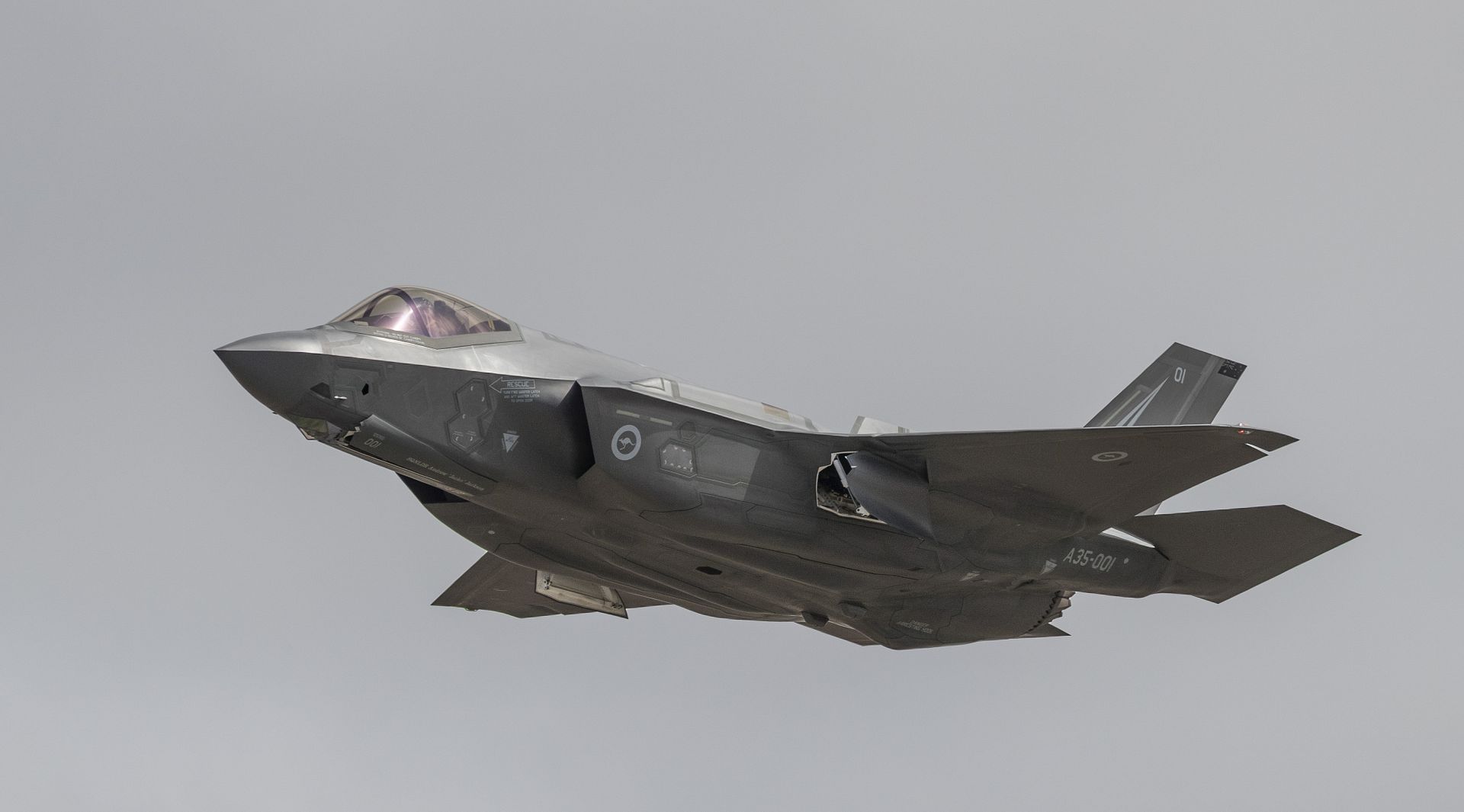
Bengaluru, 20 February 2019: Milestone Aviation Group Limited (Milestone), a GECAS company and the global leader in helicopter leasing, and Airbus Helicopters announced today that Heligo Charters Private Limited (HCPL), a Mumbai-based non-scheduled helicopter operator has taken delivery of its first H145 helicopter. The helicopter?s configuration will allow it to perform a variety of missions. The aircraft taken on lease from Milestone will start operations soon in the state of Jharkhand.
?We take immense pride in the fact that Heligo has placed its trust in Milestone?s certainty of execution to deliver the aircraft, coupled with our financial and technical capabilities. We look forward to continuing to grow this long-term relationship,? said Michael York, Senior Vice President of Commercial at Milestone.
HCPL is a leading onshore and offshore helicopter services provider to the oil & gas industry, corporate and VIP travel in India.. The company currently operates 10 helicopters, including four Airbus AS365 N3 Dauphins.
?HCPL will use the versatile H145 helicopter for a variety of missions. With enhanced safety features and a reputation for reduced maintenance, the H145 is an ideal craft for performing diverse roles,? said Capt K Padmanabhan, CEO, Heligo Charters Pvt Ltd.
Airbus? H145 is the latest member of its 4-tonne-class twin-engine rotorcraft product range ? with designed-in mission capability and flexibility, especially in high and hot operating conditions. Compact in size, this helicopter?s small footprint and large, flexible cabin makes it the aircraft of choice for a variety of missions. It provides latest technologies, like the advanced cockpit design with the most modern Human Machine Interface (HMI) and state-of-the-art Helionix? avionics, more powerful engines, an enhanced transmission system and a Fenestron? anti torque-device.
These new technologies are combined with the rugged and proven design elements of the H145 - the main rotor system and the multipurpose cabin. Built-in safety aspects include an energy absorbing fuselage and seats and crash-resistant fuel cells. Compared to other helicopters in its class, the H145 offers a significantly larger cabin featuring excellent outside visibility for pilots, crew and passengers; a roomy cabin with no partitions, center or door posts; and unrivalled side and rear loading capability.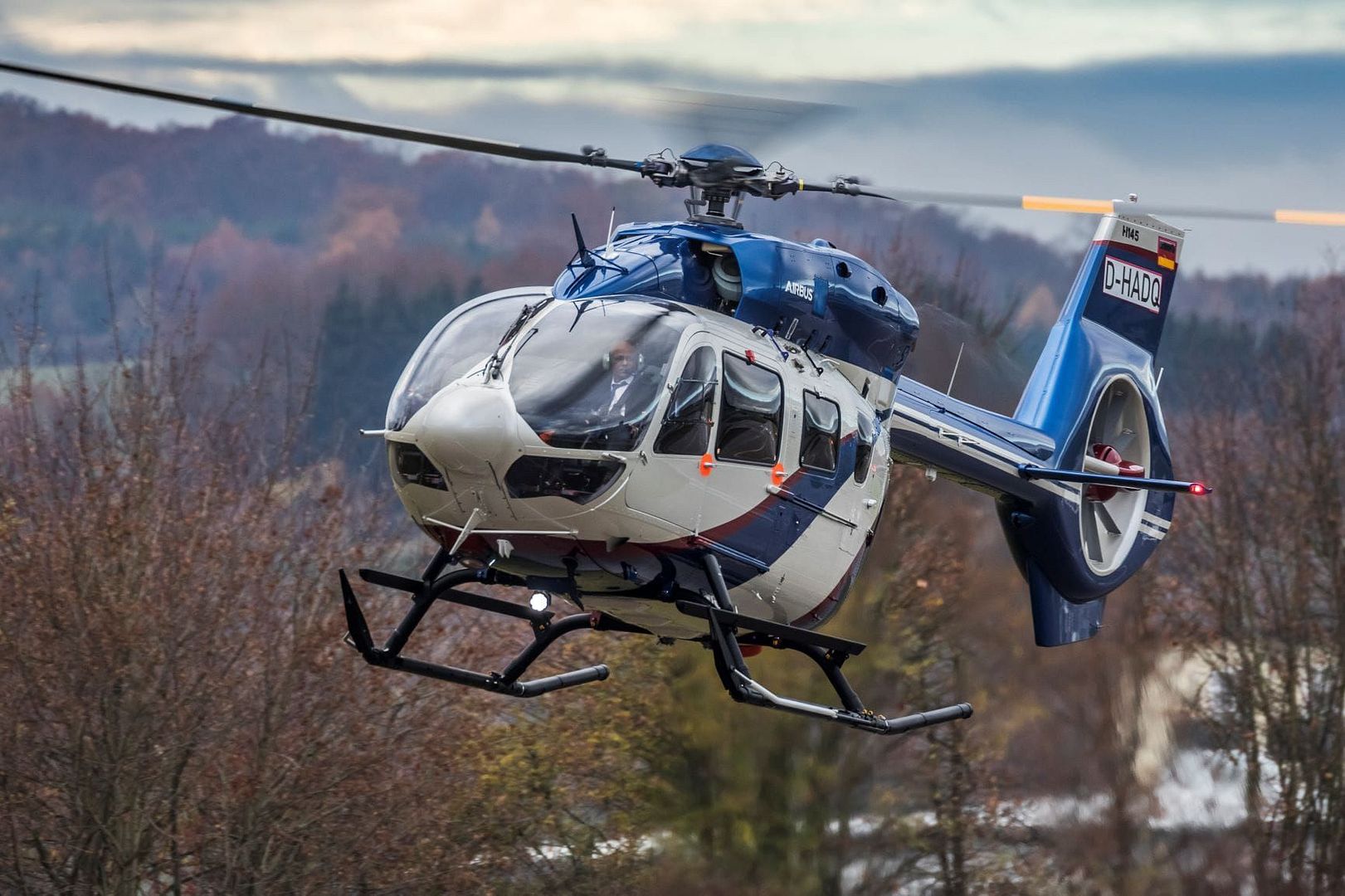
Marignane ? The Brazilian Navy has ordered three H135 light twinengine helicopters to be operated by the 1st General Purpose Helicopter Squadron (HU-1). The aircraft will be dedicated to a wide range of missions such as special operations, transport of troops and freight, naval inspection, search and rescue and medical evacuation. Two of these aircraft will be equipped with aeromedical kits. Other equipment will include a cargo hook, an emergency flotation system, a winch, as well as weather radar.
The aircraft, which will replace the current light twin-engine AS355s, could also carry out missions in the frame of the Brazilian Antarctic Programme in the near future.
The contract includes a comprehensive HCare support and services package, which will guarantee the highest levels of availability for this fleet.
?We are extremely happy to sign this contract, which consolidates and extends the partnership we have had for over 40 years with the Brazilian Navy, our very first customer in the country,? said Richard Marelli, Helibras President and Airbus Head of Country in Brazil. ?The H135?s low operating costs and excellent availability rate make it the ideal helicopter to fulfil the Navy?s challenging missions and needs.?
To date, more than 1,280 helicopters of the H135 family are in operation around the globe, having flown 4.9 million flight hours.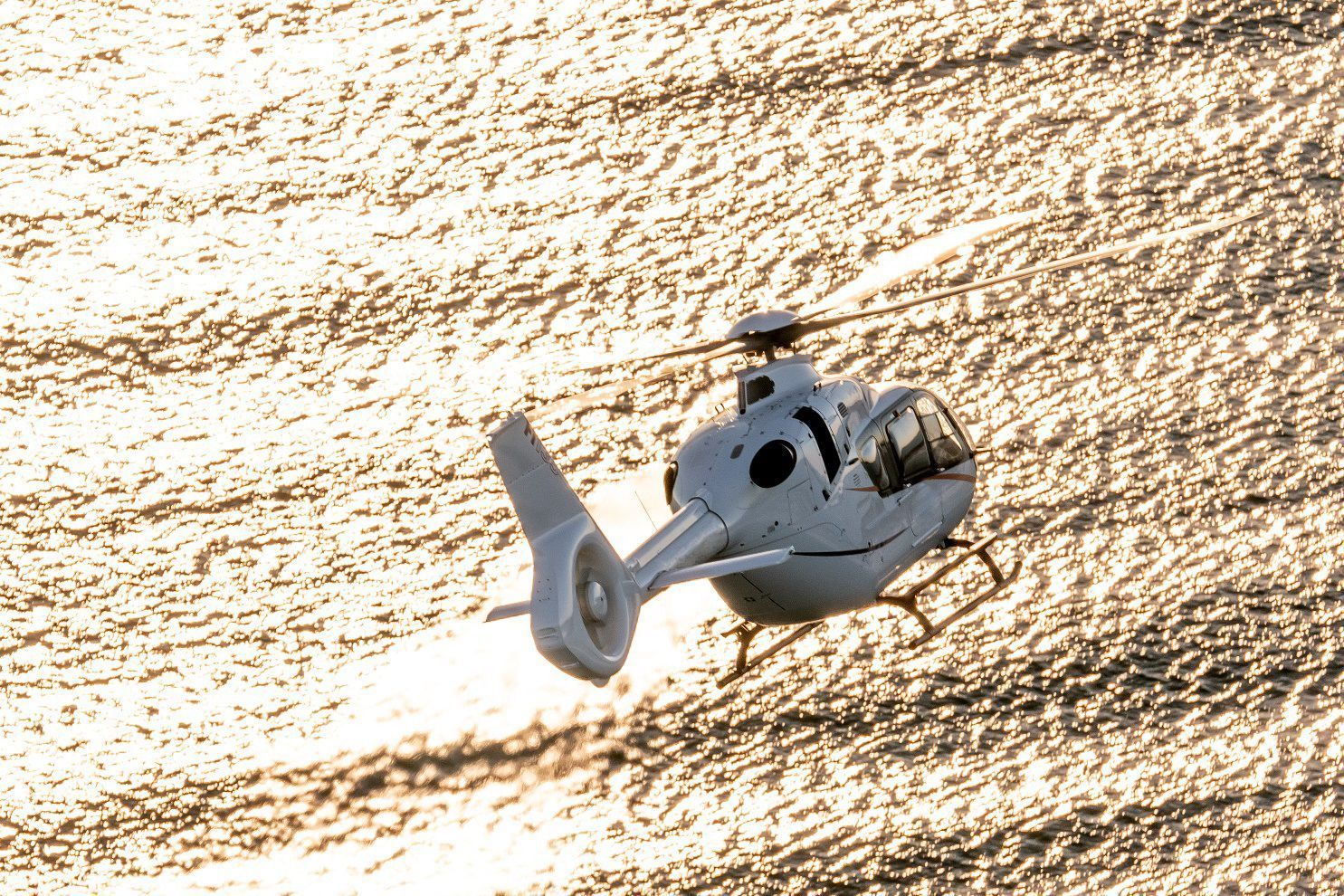
Post a reply
- Go to Previous topic
- Go to Next topic
- Go to Welcome
- Go to Introduce Yourself
- Go to General Discussion
- Go to Screenshots, Images and Videos
- Go to Off topic
- Go to Works in Progress
- Go to Skinning Tips / Tutorials
- Go to Skin Requests
- Go to IJAAF Library
- Go to Luftwaffe Library
- Go to RAF Library
- Go to USAAF / USN Library
- Go to Misc Library
- Go to The Ops Room
- Go to Made in Germany
- Go to Campaigns and Missions
- Go to Works in Progress
- Go to Juri's Air-Raid Shelter
- Go to Campaigns and Missions
- Go to Works in Progress
- Go to Skinpacks
- Go to External Projects Discussion
- Go to Books & Resources
